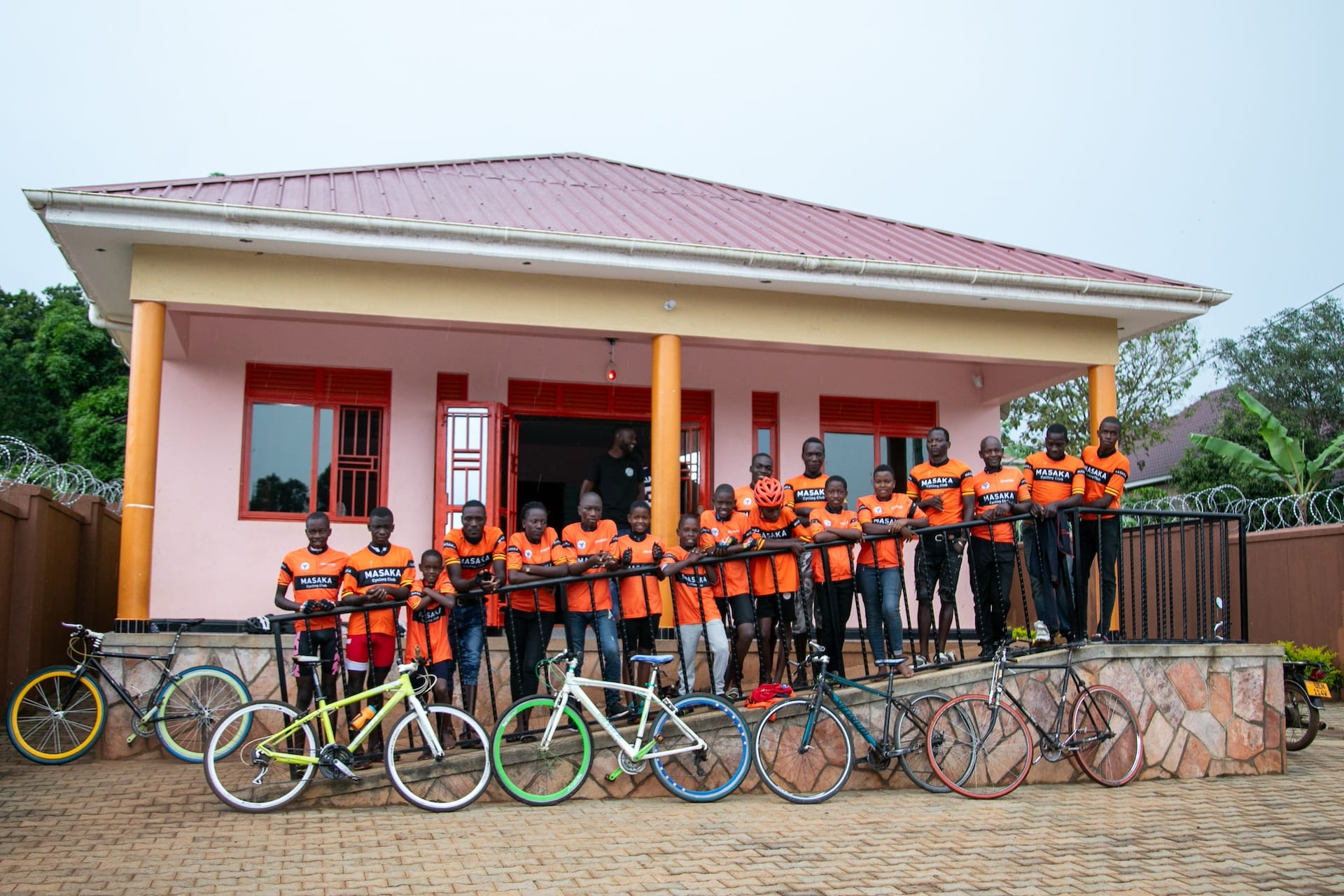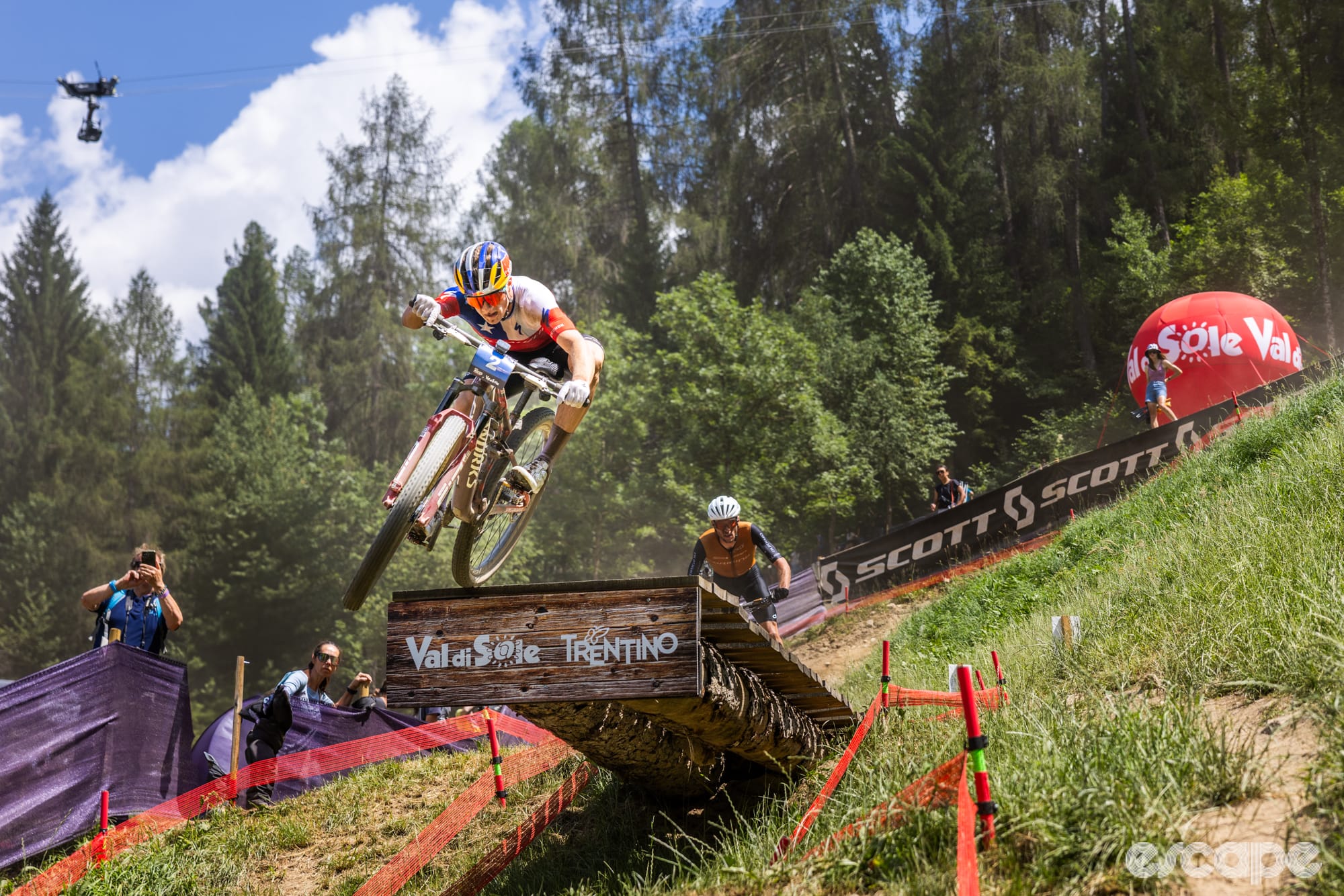If you’ve looked at Canyon’s range of carbon fiber gravel bikes and been confused at how the Grail and Grizl are different, you’re not alone. Canyon clearly felt there was too much overlap internally, too, and the two lines will be more distinct moving forward. The Grizl will continue on as the German consumer-direct brand’s more adventuresome option with more generous tire clearance, more versatile handling, and more options for things like suspension forks and droppers, but the newly revamped Grail CF is now more sharply focused on gravel racing and going fast on unpaved roads in general.
Refinement seems to be the overarching theme here. The new Grail CF range boasts significantly better aerodynamics with more speed-focused handling, there’s new storage in the down tube and a neat quick-release frame bag, there’s a dedicated quick-release fender kit (that’s surprisingly good), and new one-piece cockpit setups with a range of available bolt-on accessories. Oh, and that wacky double-decker handlebar setup? Buh-bye.
If you sit in the middle of the bell curve in terms of fit and are looking to go fast on gravel, the new Grail CF will likely be a very good choice – and with Canyon’s typically exceptional levels of value, too. But if you’re even a little bit left or right of center, you may be more disappointed and frustrated at what might have been.
Good stuff: Better aerodynamic efficiency, more stable handling, lots of well-done integration, looks good, excellent value.
Bad stuff: Limited cockpit and seatpost sizes, firm ride quality.
Canyon’s formula for speed
Not surprisingly given the new focus on going fast, the revamped Grail CF gets a big dose of aerodynamic shaping. Truncated airfoil profiles are everywhere you look, including the down tube, seat tube, head tube, fork blades, and seatstays. Up top is a D-shaped carbon fiber seatpost profile borrowed from Canyon’s Ultimate family of road bikes, and there are new – and far more conventional-looking – one-piece carbon fiber cockpits made just for the Grail CF to replace that goofy double-decker setup.
Cable routing is now mostly hidden, but the lines don’t pass through the bar and stem at all, instead entering the frame through the upper headset cover and just tucking up against the underside of the stem. And in a big break from Canyon’s norm, those new cockpits attach to a completely normal – as in, round! – 1 1/8”-diameter steerer tube.
All told, Canyon claims a rider on the new Grail CF traveling at 45 km/h will have to put out nine watts less power than someone else on the old version. For the racers out there, that’s hardly nothing.
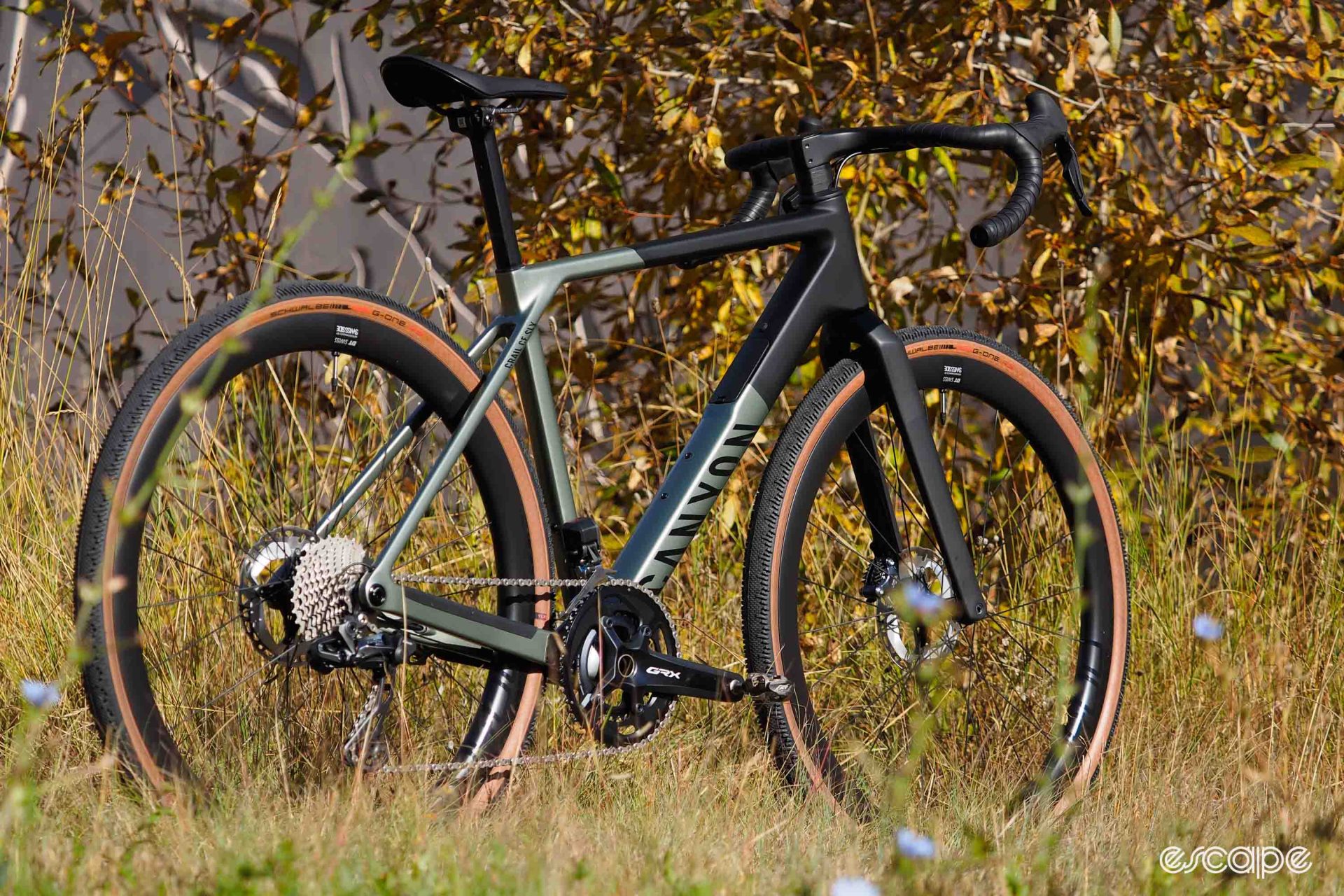
The frame geometry has also been retuned for covering ground at speed. The reach is substantially longer than before, the head tube is slacker, and there’s more fork rake across the board. Canyon says the rider weight distribution is more even than it was on the old Grail CF range, and toe overlap is apparently a thing of the past for each of the seven sizes, despite the fact all of them now use 700c wheels exclusively (although that seemingly comes at the expense of a very big trail dimension on the 2XS size). Some 650b wheel-and-tire setups may still fit, but Canyon doesn’t recommend it.
Canyon says the trail dimension is otherwise unchanged, so current Grail CF owners making the switch shouldn’t feel that the steering itself is slower. However, the front wheel is now positioned further out in front of you and the wheelbase is longer, too, so the overall responsiveness will be slightly dulled. Conceptually, you can perhaps think of it like two cars with the same steering hardware, but one is attached to a subcompact hatchback while the other is on a stretch limousine.

Gearing is another piece of that go-fast puzzle. While everyday riders will still be best served with the standard gravel-focused options offered by the likes of Shimano and SRAM, Canyon also had its sponsored racers in mind when it tweaked the Grail CF’s frame shape. Top-tier gravel racers aren’t actually going that much slower on gravel than they do on the road, and so the new Grail CF has enough clearance at the chainstays for single chainrings up to 50-teeth, and doubles up to 52/36T – and that’s with road chainlines, too.
One thing that doesn’t appear to have been a huge priority for this second-generation Grail CF is rider comfort. Although that new D-shaped seatpost supposedly has a softer flex pattern than what’s offered on the identically-shaped Ultimate range, it’s still not as cushy as the old VCLS leaf-spring design. Canyon nevertheless says the rear-end comfort “isn’t that far off” from the old bike.
Riders may notice an improvement up front, though. Canyon made a big deal of the old double-decker bar’s flex zone up top, but that design perhaps highlighted the company’s inexperience in the segment when the Grail was originally launched. Most people don’t actually place their hands on the tops when the going gets rough, and the dual bracing meant that the old double-decker bar was more resistant to flex than a conventional bar when on the hoods or drops, not less. Plus, it just looked weird. The new one-piece “Double Drop” cockpits are still quite burly, but the shape is at least a big improvement ergonomically with its sweptback and downward-sloping tops, flat platforms behind the hoods, and flared shallow drops.
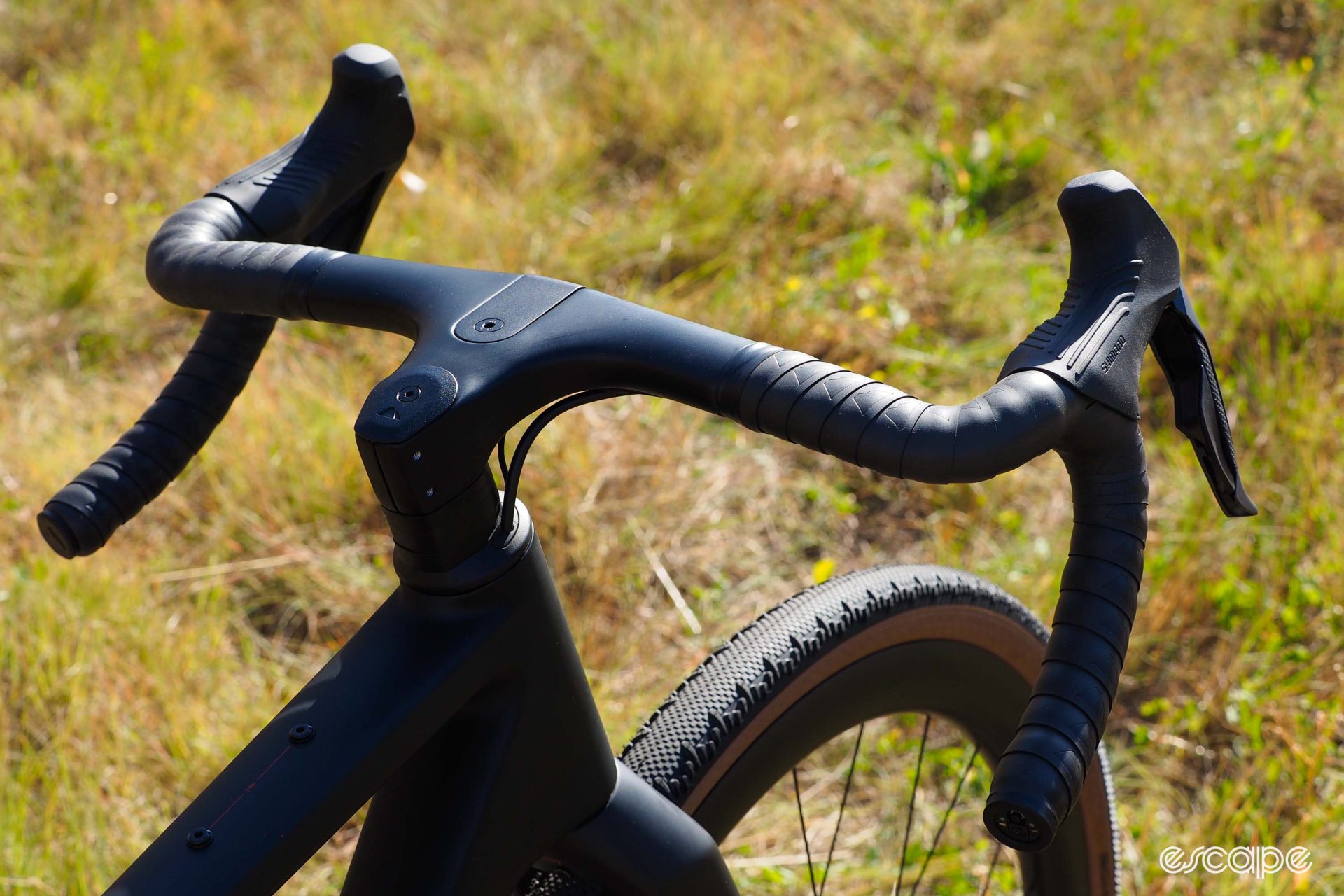
Another major theme is integration – and interestingly enough, that plays into the aerodynamic formula, too.
Headlining that part of the story is a new dedicated frame bag. It attaches via three little stubs that are threaded into dedicated fittings on the front triangle, and because it uses the clever Fidlock system, it’s a nearly instant on-off affair with a secure hold and no tools required. And although it obviously adds a little weight, Canyon says the Grail CF is faster with the bag installed than without it, to the tune of 1.3 W.
Also new is hidden storage inside the down tube, with handy clips on the hatch for a multi-tool and mini-pump, and enough space inside the dedicated “burrito bag” for a spare tube, tire levers, plug kit, CO2 cartridge and inflator head, and other common necessities.
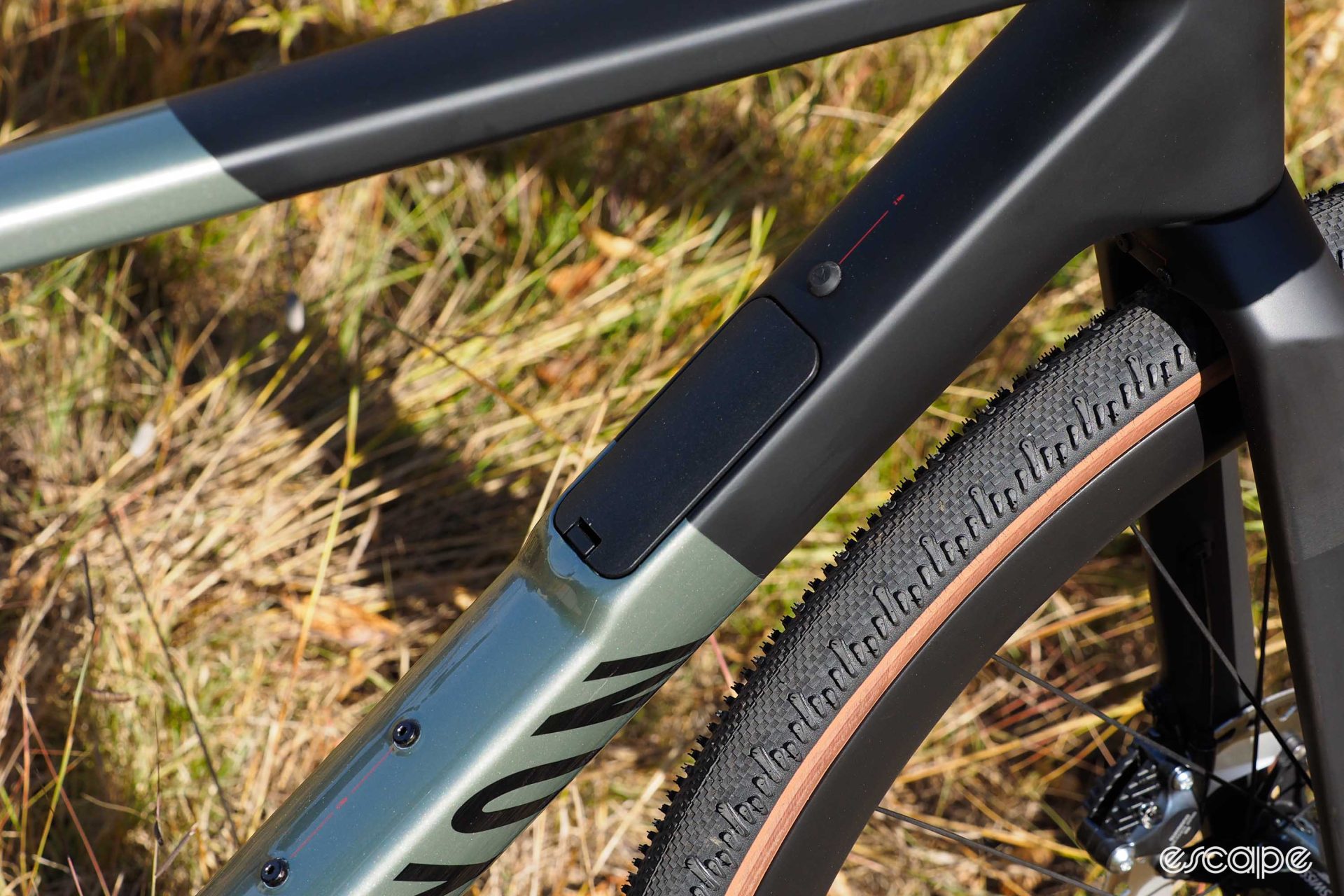
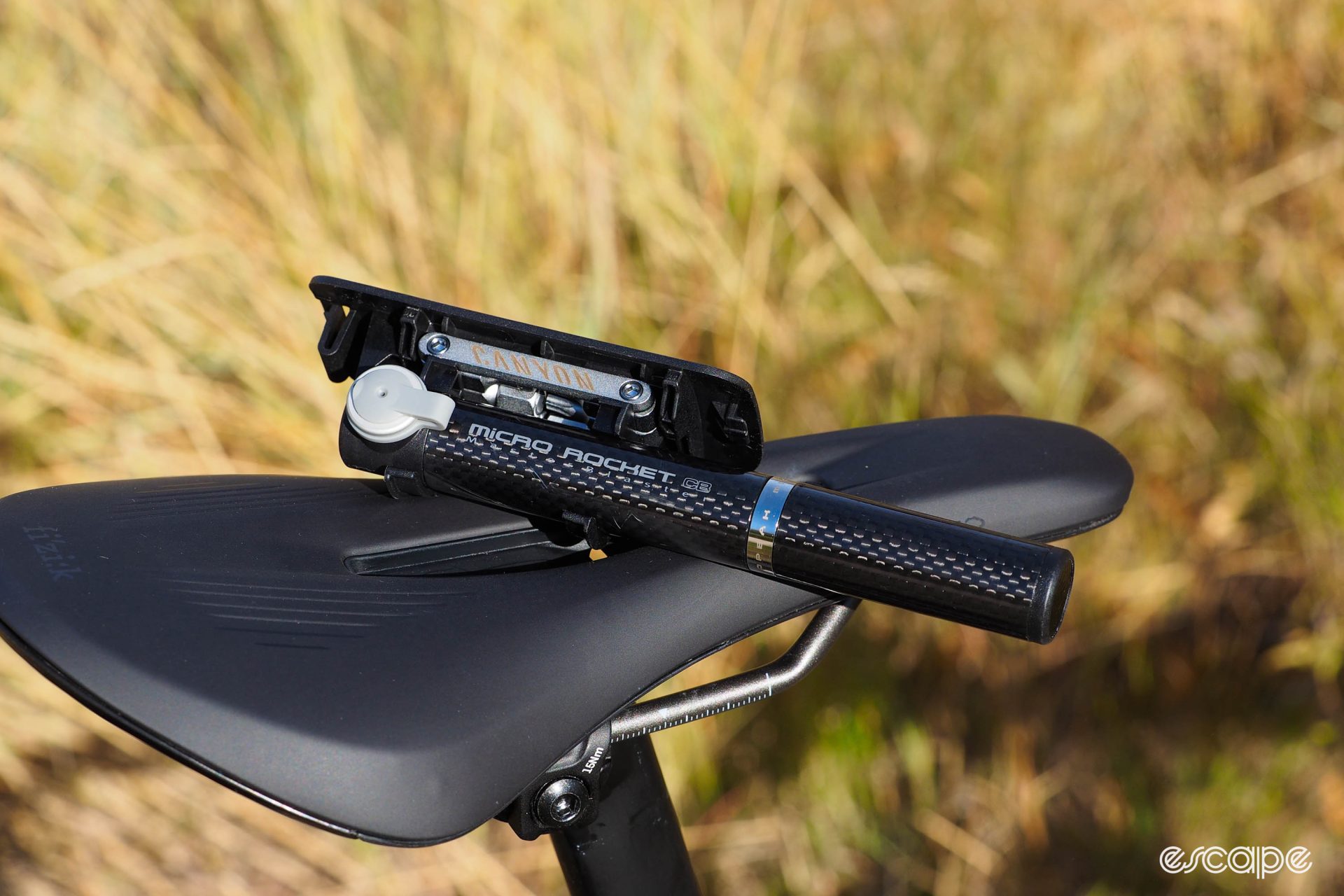
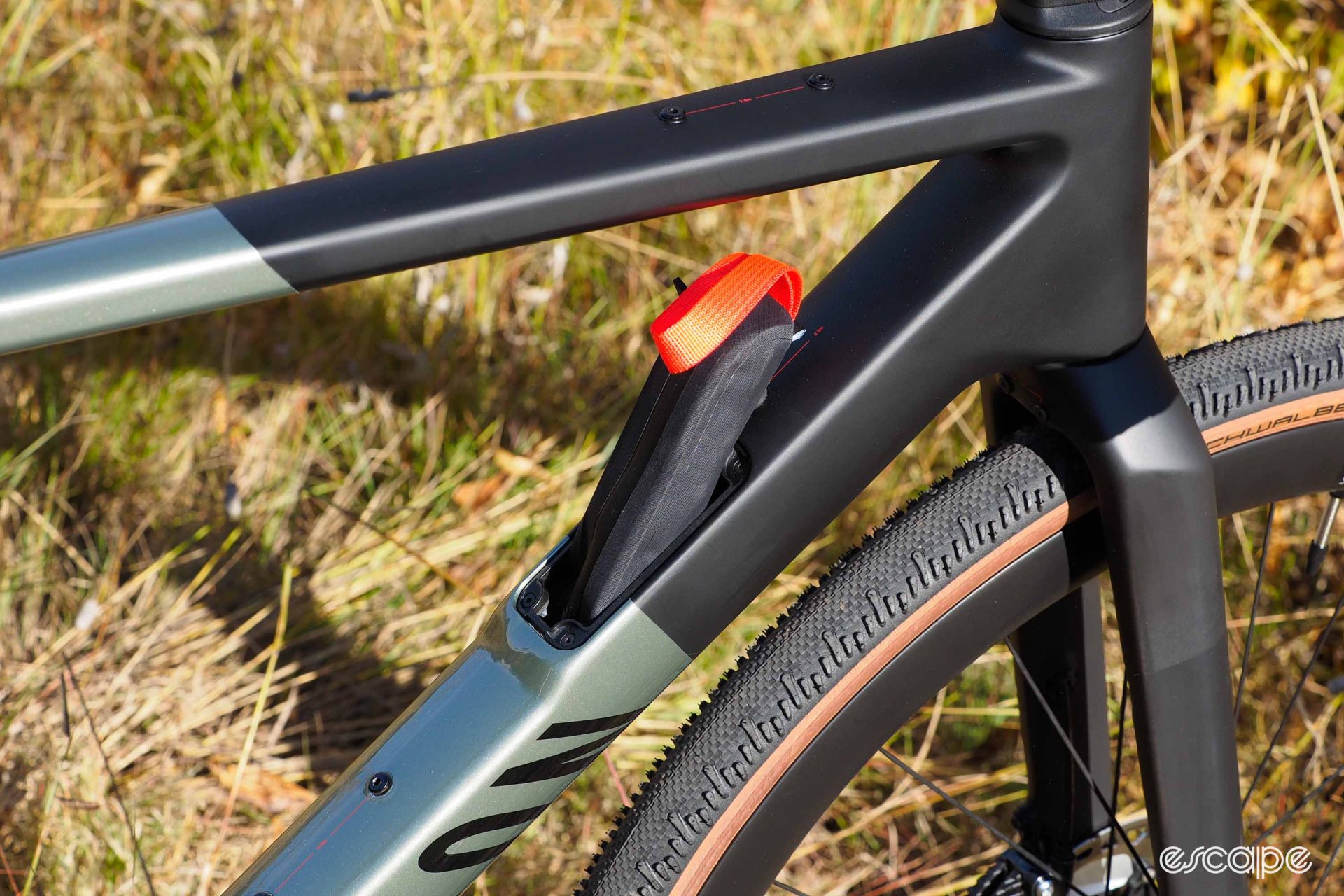
Adding to the integration thing is the one-piece cockpit’s so-called Gear Groove accessory interface. There’s a bolt-on computer mount, of course, but Canyon engineered the Gear Groove to handle a lot more than that with three big M6 threaded fittings. Also available is a Grail-specific aero bar attachment that bolts directly to the bar and has an impressive array of adjustability. There’s a different computer mount that attaches to the aero bar extensions so you don’t have to choose one or the other, and there’s even an attachment for holding your smartphone over the stem.
Although versatility definitely isn’t the focus of the new Grail CF, there’s still plenty of that to be found.
Tire clearance is technically unchanged at 700x 42 mm, but Canyon points out that’s with fenders, so the effective maximum tire size is closer to 700x45 mm (40 mm-wide tires come stock across the board). There’s also a dedicated – and impressively, thoroughly engineered – full-length front and rear fender kit. There are no accessory mounts on the fork blades, but Canyon even has that base covered with optional Load Fork sleeves that will still allow you to carry stuff down there for the occasional bikepacking weekender.
Models, pricing, and availability
Canyon is offering the new carbon fiber Grail in three different frame versions across eight models globally (actual availability will vary by region).
The flagship Grail CFR gets all the bells and whistles, including the CP0039 cockpit with Gear Groove and the internal down tube storage compartment. A premium carbon fiber recipe yields a 855 g claimed weight for a raw medium frame (plus 380 g for the matching fork).
Canyon will sell the CFR in three complete builds. The Grail CFR Di2 (8.30 kg / 18.30 lb) comes with a Shimano GRX Di2 2x11 wired electronic groupset and DT Swiss GRC 1100 carbon wheels for US$n/a / AU$10,600 / £6,700 / €7,000; the Grail CFR eTap (8.04 kg / 17.73 lb) comes with a SRAM Red AXS XPLR 1x12 wireless electronic groupset and DT GRC 1100 carbon wheels for US$8,000 / AU$12,100 / £7,650 / €8,000; and finally, the Grail CFR LTD is mechanically identical to the CFR AXS, but with a fancy limited-edition paint job Canyon calls “GRVL DZZL” for US$9,000 / AU$15,100 / £9,500 / €10,000.
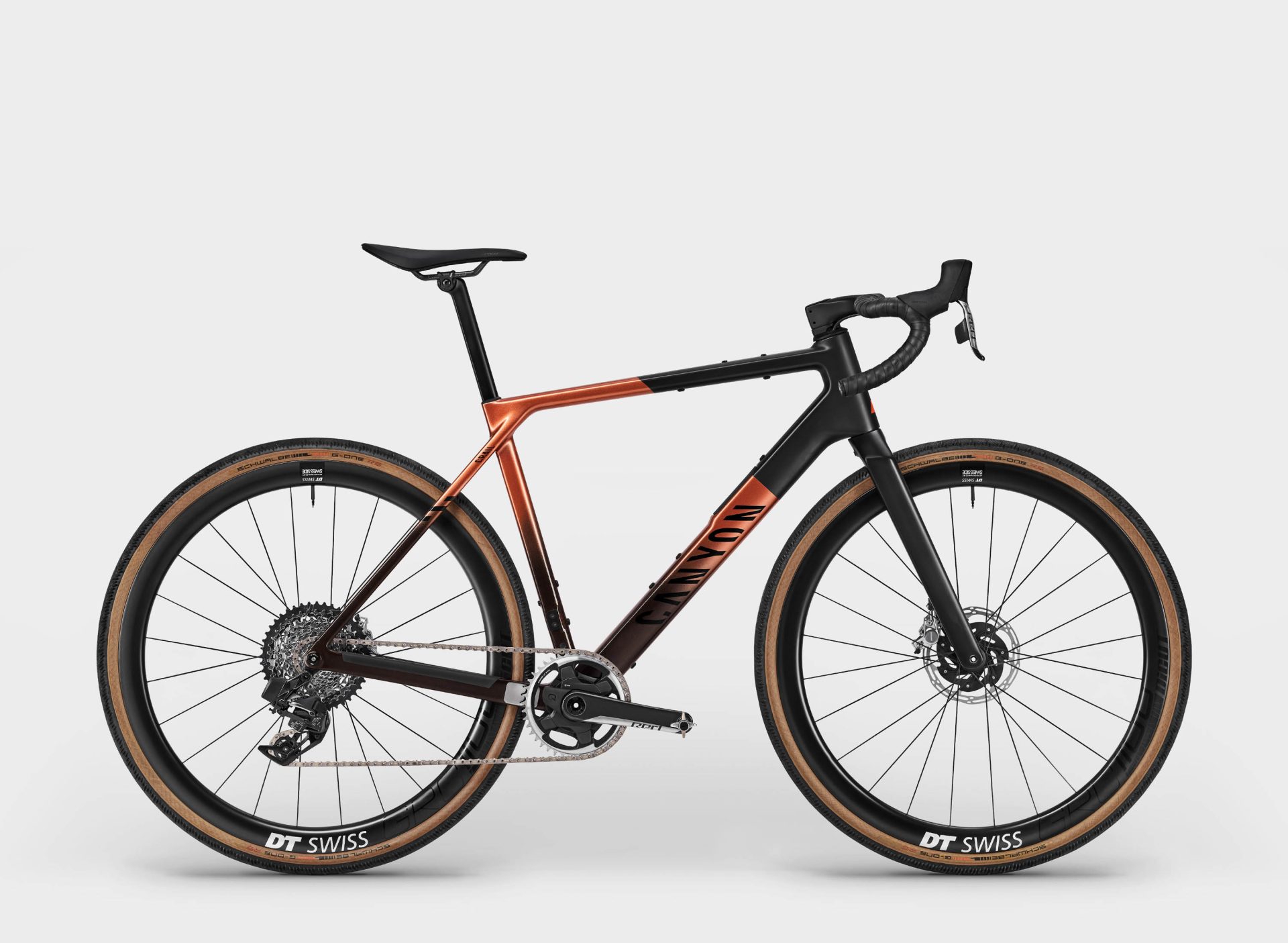

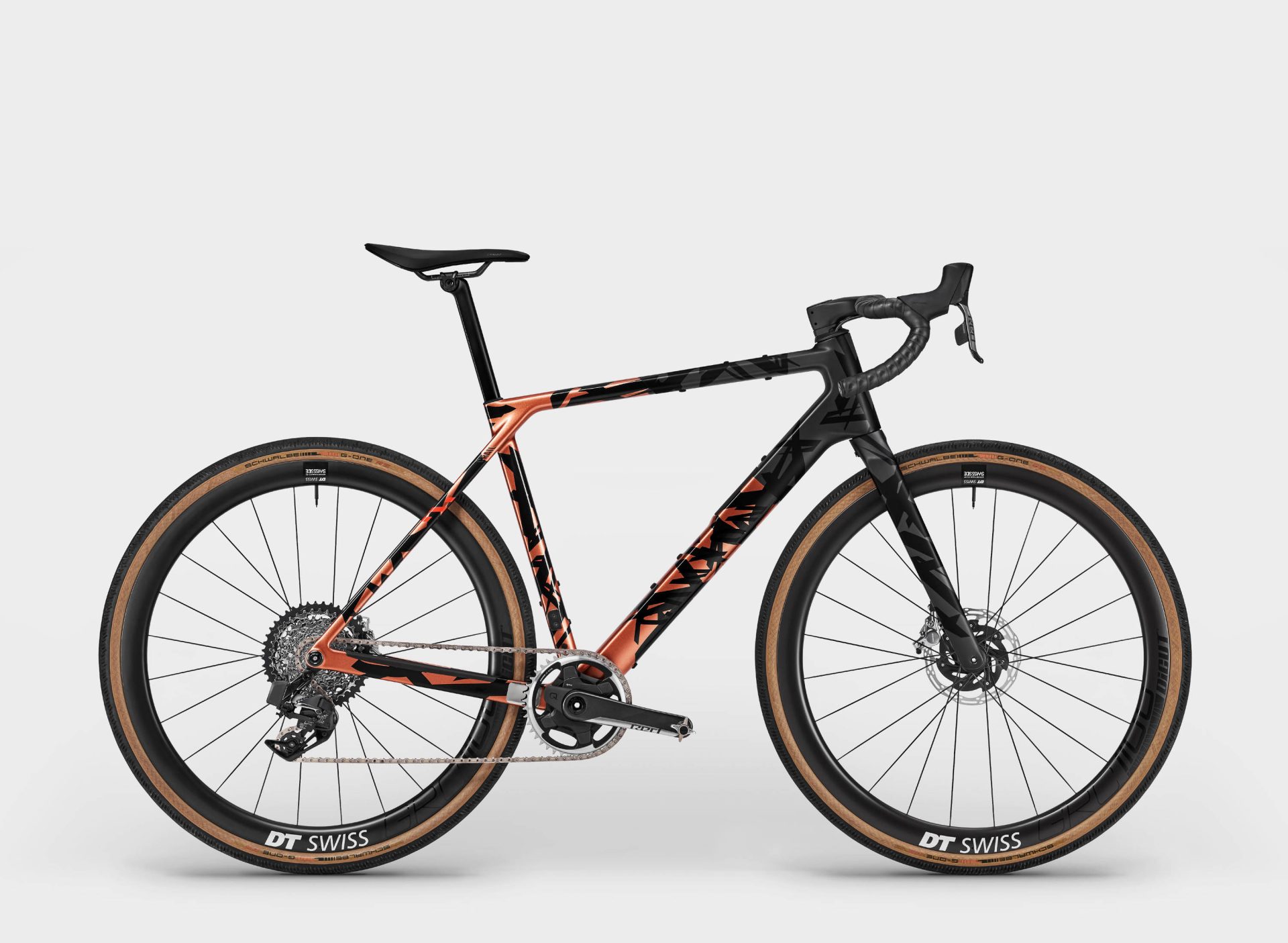
Sitting in the second slot is the Grail CF SLX, with a detuned carbon fiber content that brings the claimed frame and fork weights up to 933 g and 415 g, respectively. As with the Grail CFR, this Grail CF SLX is fully outfitted, and includes the same cockpit and down tube storage.
The Grail CF SLX will be offered in two complete builds. The Grail CF SLX 8 Di2 (8.50 kg / 18.74 lb) is equipped with a Shimano GRX Di2 2x11 wired electronic groupset and DT Swiss GRC 1400 carbon wheels for US$5,000 / AU$7,650 / £4,800 / €5,000; while the Grail CF SLX 8 AXS (8.14 kg / 17.95 lb) comes with a SRAM Force AXS XPLR 1x12 wireless electronic groupset and Zipp 303 Firecrest wheels for US$5,500 / AU$8,100 / £5,100 / €5,300.


Finally, there’s the Grail CF SL, with yet another blend of carbon fiber that bumps the claimed weight up to 953 g for a raw medium frame (the fork is the same as on the Grail CF SLX). Although the Grail CF SL features the same frame shape as the fancier CF SLX and CFR versions, it does without the down tube storage. It also gets its own CP0045 one-piece cockpit, which uses identical dimensions to the CP0039, but without the Gear Groove interface (although presumably a more standard two-bolt computer mount on the underside).
Three Grail CF SL builds will be offered. The Grail CF SL 7 (9.22 kg / 20.33 lb) comes with a Shimano GRX 620 2x12 mechanical groupset and DT Swiss Gravel LN aluminum clinchers for US$2,700 / AU$4,200 / £2,600 / €2,700; the Grail CF SL 7 AXS (9.82 kg / 21.65 lb) is built with a SRAM Rival AXS XPLR 1x12 wireless electronic groupset and DT Swiss Gravel LN aluminum wheels for US$3,500 / AU$5,400 / £3,350 / €3,500; and the Grail CF SL 8 (8.74 kg / 19.27 lb) gets a Shimano GRX 820 2x12 mechanical groupset and DT Swiss G1800 aluminum wheels for US$3,000 / AU$4,650 / £2,900 / €3,000.
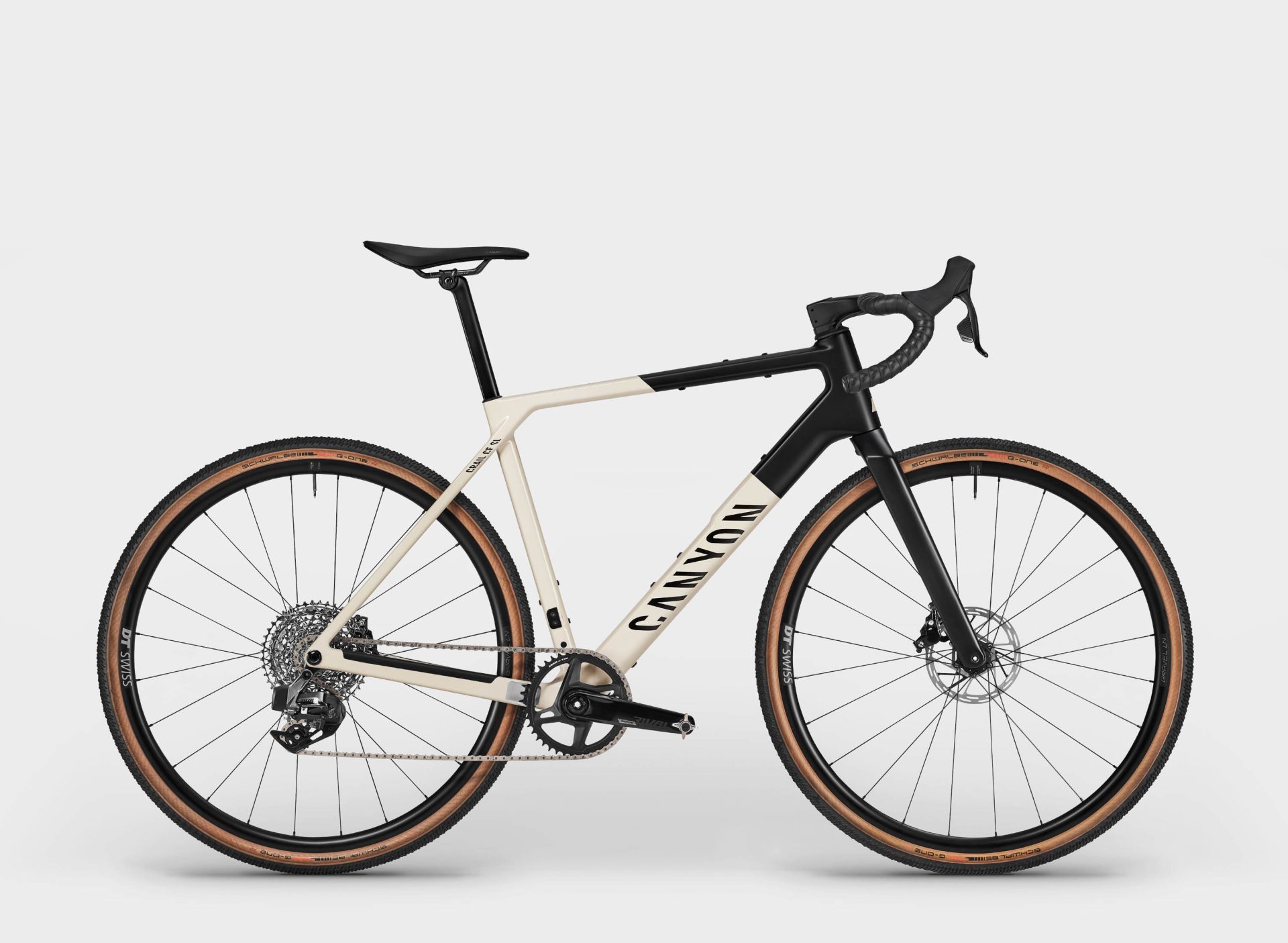
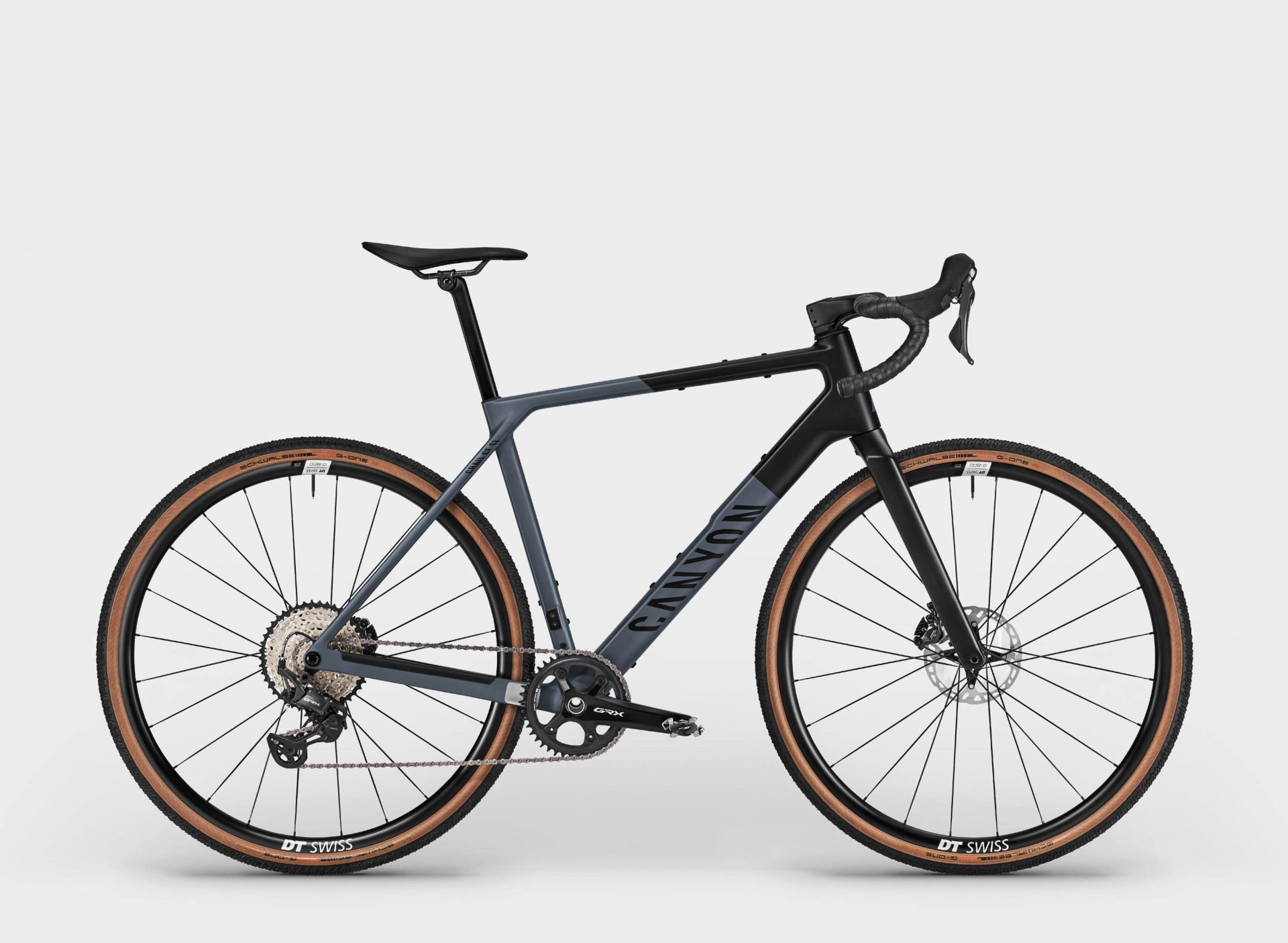
As is usually the case with Canyon, strong value is a consistent theme across the board. A few of the new Grail CF models should be available (in some quantities) starting now, and the rest will arrive “before the end of the year," with the exception of the base-model Grail CF SL 7, which won’t be available until some time in 2024.
Canyon sent a Grail CF SLX 8 Di2 loaner my way for this review, with an actual weight of 8.33 kg (18.36 lb) in a small size without pedals or accessories – right inline with claims.
More conventional looks and tangible improvements
If all of the above sound like big changes to the Grail CF platform, that’s because they are, and it feels that way in the saddle, too. Whereas the previous Grail was more of a fat-tired road bike – and mind you, there’s nothing wrong with that – this new one comes across as more purpose-built for the task.
The biggest change for me is the handling. The longer and more sedate geometry negatively impacts the new Grail CF’s agility on road rides, and the reduced nimbleness makes it more poorly suited than the old bike to serve double-duty for cyclocross. But that said, the more stable steering manners seems more appropriate for covering a lot of unpaved ground quickly without requiring too much attention (and Canyon would prefer you buy an Inflite for ‘cross, anyway). It’s probably good that things happen in slower motion when you’re at hour six and still far from the finish line, and that longer front end is also more forgiving if you overcook a slippery corner. Kudos to Canyon for getting rid of toe overlap completely, too, which I most definitely appreciated when tackling some more technical terrain during testing.
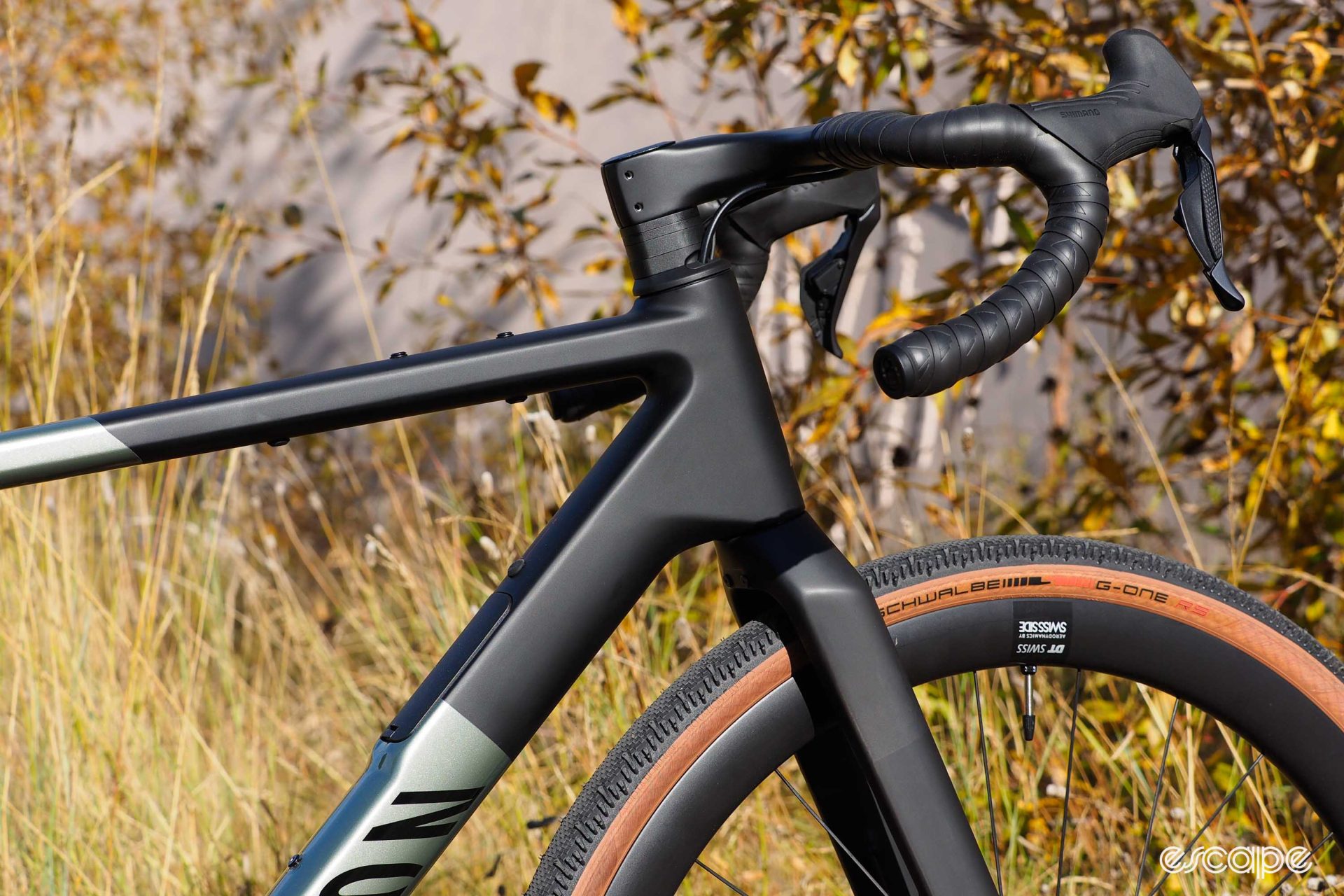
Is the new Grail CF more aero? That’s hard for me to say as my typical gravel testing routes don’t include too much sustained high speeds like I’d do in an actual race (paging Ben Delaney!), and so the claimed advantages don’t come across more obviously as they do when I’m testing full-aero road bikes on tarmac. Generally speaking, though, I’m happy to see aero shaping and free speed if it doesn’t come with any big downsides, and while I certainly can’t confirm the exact magnitude of the improvements, it seems safe to say this new one is actually more aero than the old one if only based on a visual inspection and prior experience. Take that with a grain of salt, I guess.
What’s more obvious, however, is the chassis stiffness. Whether or not a rigid frame actually equates to more speed is neither here nor there; what's arguably more important to most people is whether the bike feels faster, and the new Grail CF is indeed very responsive under power. It’s efficient and snappy when you give it gas, and the inputs you apply at the pedals seem to be dutifully rewarded in kind out back. Does it feel as spritely as a top-shelf carbon fiber road racer? Well, no. But the new Grail CF is certainly among the stiffer gravel bikes I’ve ridden in recent memory, as it perhaps should be given the new racing focus.
Or maybe not?
I’ve long debated with myself the upsides of a stiffer frame when it comes to gravel, and while I always appreciate an efficient-feeling power transfer, I’m more convinced than ever of the upsides of a smooth ride. That immediacy is nice on the road, but particularly on bumpier courses or on longer days, there’s a lot to be said for being able to keep putting down power over a broad range of less-than-stellar ground surfaces. In that sense, the Grail CF rides more firmly than I’d like. The new front end is less punishing than that old double-decker bar – particularly on the hoods or out at the drops – but I still wouldn’t remotely describe it as cushy. Likewise, as a big fan of that old VCLS seatpost design, this new D-shaped one tends to buck harder when you hit stuff.
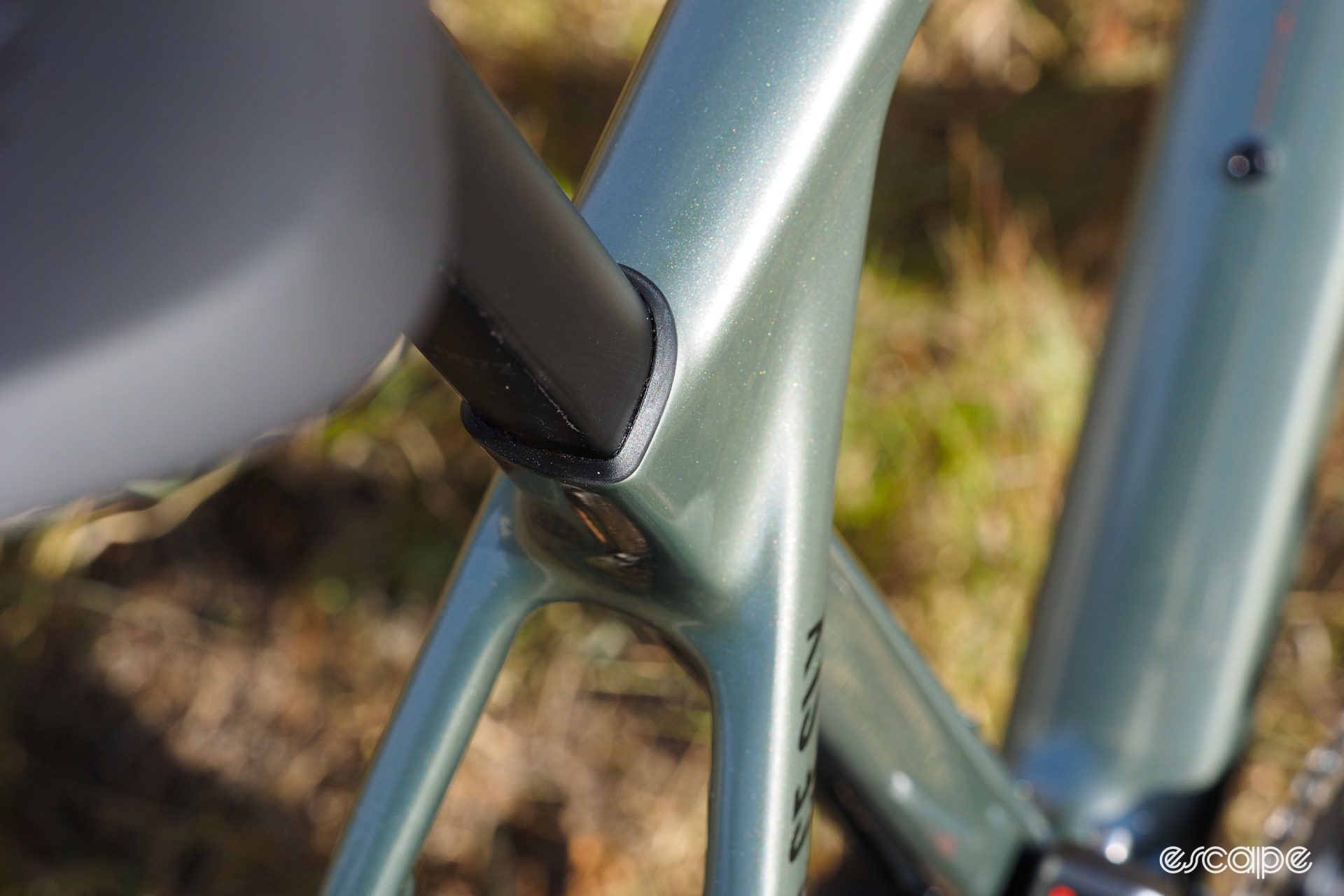
To be fair, it’s entirely possible this is just me getting old and grumpy, or my local gravel conditions not accurately reflecting how Canyon expects the new Grail CF to be ridden. But if a smooth ride is primarily what you’re after, this might not be it for you.
Speaking of the cockpit, there’s absolutely some more discussion warranted there.
I find the “Double Drop” shape to be quite agreeable up top, as the additional slope and sweep make for a more natural wrist angle (although I should mention I’ve liked the Eyropro and Coefficient bars, too). But given all the attention paid to making the frame aero, it seems awfully odd that the bars on my small-sized tester measure 42 cm-wide center-to-center – and that’s at the hoods, meaning the flared drops are even broader. Given the available sizes on the Aeroad, it’s not like Canyon is unaware of the effect of a narrower hand position on rider aerodynamics, and I constantly found myself wishing for something one – or even two – sizes narrower.
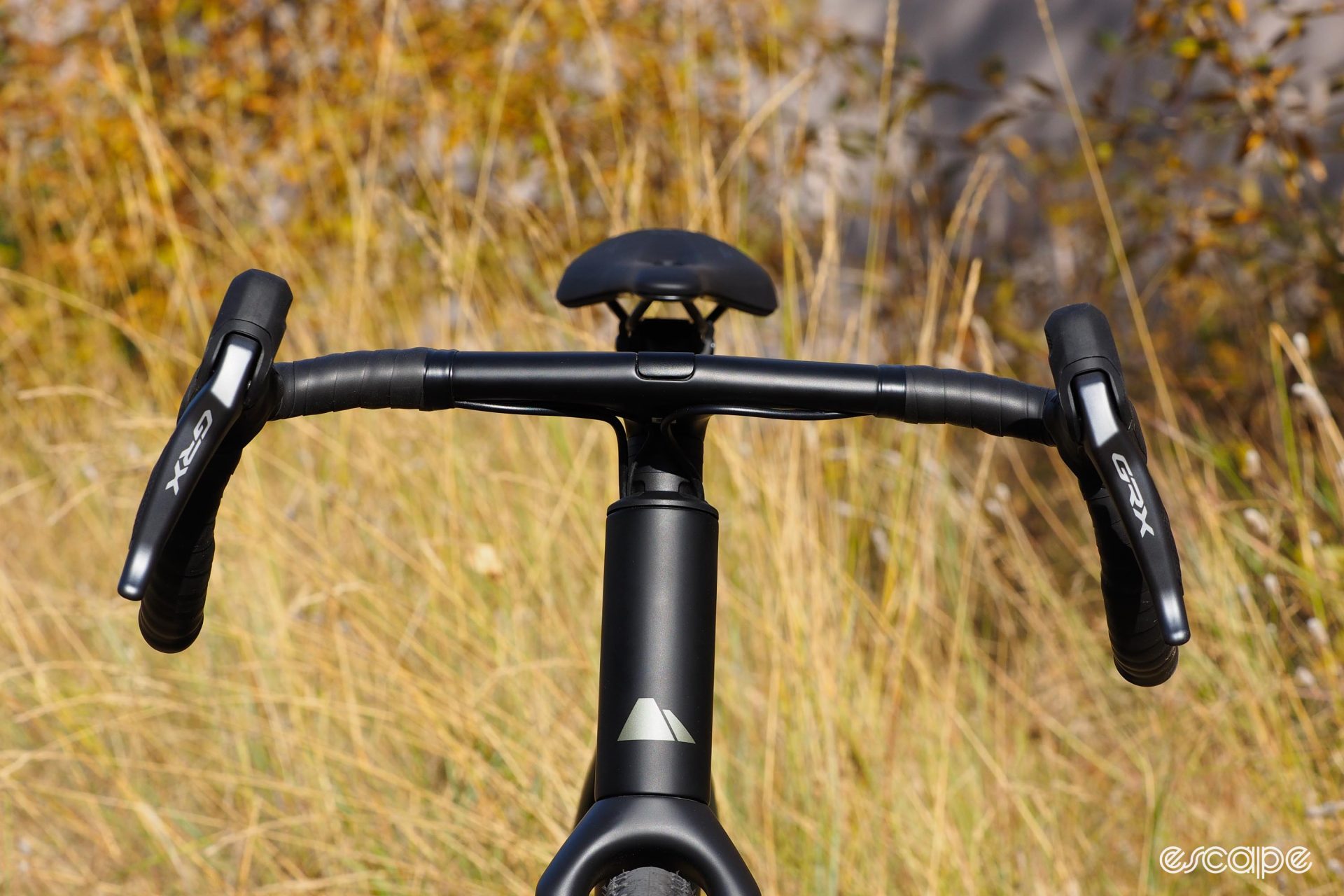
Canyon does offer different stem lengths for the CP0039/CP0045 cockpit, but only as a separate line item, and none are any narrower than 42 cm. Bar widths quickly grow once you move past the shortest 60 mm and 70 mm stem lengths, too. Keen-eyed readers will have noticed Canyon’s pro riders on a different cockpit with more drop, and that CP0047 “Pro” version is indeed offers a more aggressive position with a -18° effective stem angle instead of the standard -6°. But even though the CP0047 is offered in longer stem lengths (up to 110 mm instead of just 80 mm for the CP0030/CP0045), it’s still on the wider side at 40 cm across the board.
All is not lost since you can at least run an entirely different setup given the standard 1 1/8” upper steerer diameter instead of the goofy proprietary interface on the Ultimate, Aeroad, and Endurace, but that’s still an expensive route to take.
Fit customization is lacking in general on the Grail CF. In addition to the limitations on the cockpits, there’s only a single 20 mm seatpost offset offered – that is, unless you count the ultralight 0 mm one sold for the Ultimate road bike, which even Canyon says is “super stiff” and poorly suited for gravel riding. And of course, the seatpost’s D-shaped profile is proprietary so there aren’t exactly a plethora of aftermarket options.
“We believe that the geometry (setback) of the SP0072 provides the best balance of comfort (flex) and stiffness,” explained Canyon’s global communications manager, Ben Hillsdon. “The bigger the setback, the more flex is possible because of the leverage. Additionally, currently we have hardly any requests from pro riders to run zero setback on the Grail.”
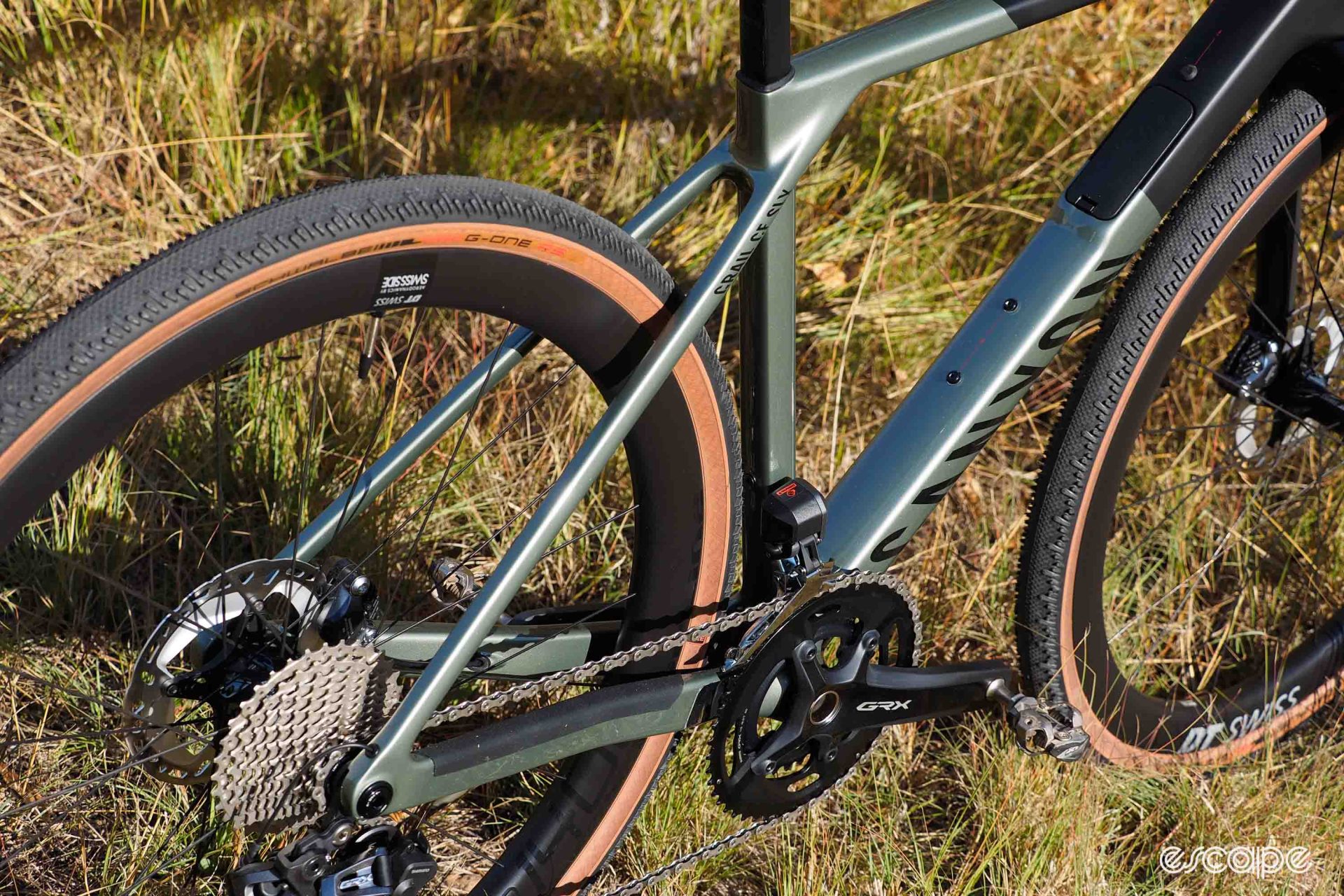
Canyon believes most people will fit just fine on the stock setups, and in fairness, probably has the sales data to prove that. But given the importance of fit for optimum performance, it’s awfully disappointing that Canyon doesn’t feel the need to more readily accommodate the so-called “outliers” (myself included).
That all said, I’m very pleasantly surprised at the thoroughness of the available accessories. The fenders are heavy at a whopping 1,140 g for the complete kit, but they're fantastically overbuilt, with extruded aluminum construction instead of the usual plastic-over-aluminum sheet flimsiness out there, and they can genuinely handle proper off-road riding without getting wrapped up in the tires. The frame bag is as easy to install and remove as promised (Fidlock FTW!), it looks great, and it doesn’t rattle even a little bit. The aero bars are also heavy at 650 g, but they feel solid and have lots of adjustment. And while the computer mount could use an additional provision underneath for a light or camera, it’s reassuringly sturdy and the interchangeable puck will work with multiple computer brands.
Other quirks?
I still think headset cable routing is dumb, but Canyon has at least worked with headset supplier Acros to include some extra seals top and bottom to try and extend the lifespan of the bearings since replacing them is so difficult and expensive. And since the lines aren’t run through the stem or handlebar, adjusting the fit isn’t as much of a headache as it could be.
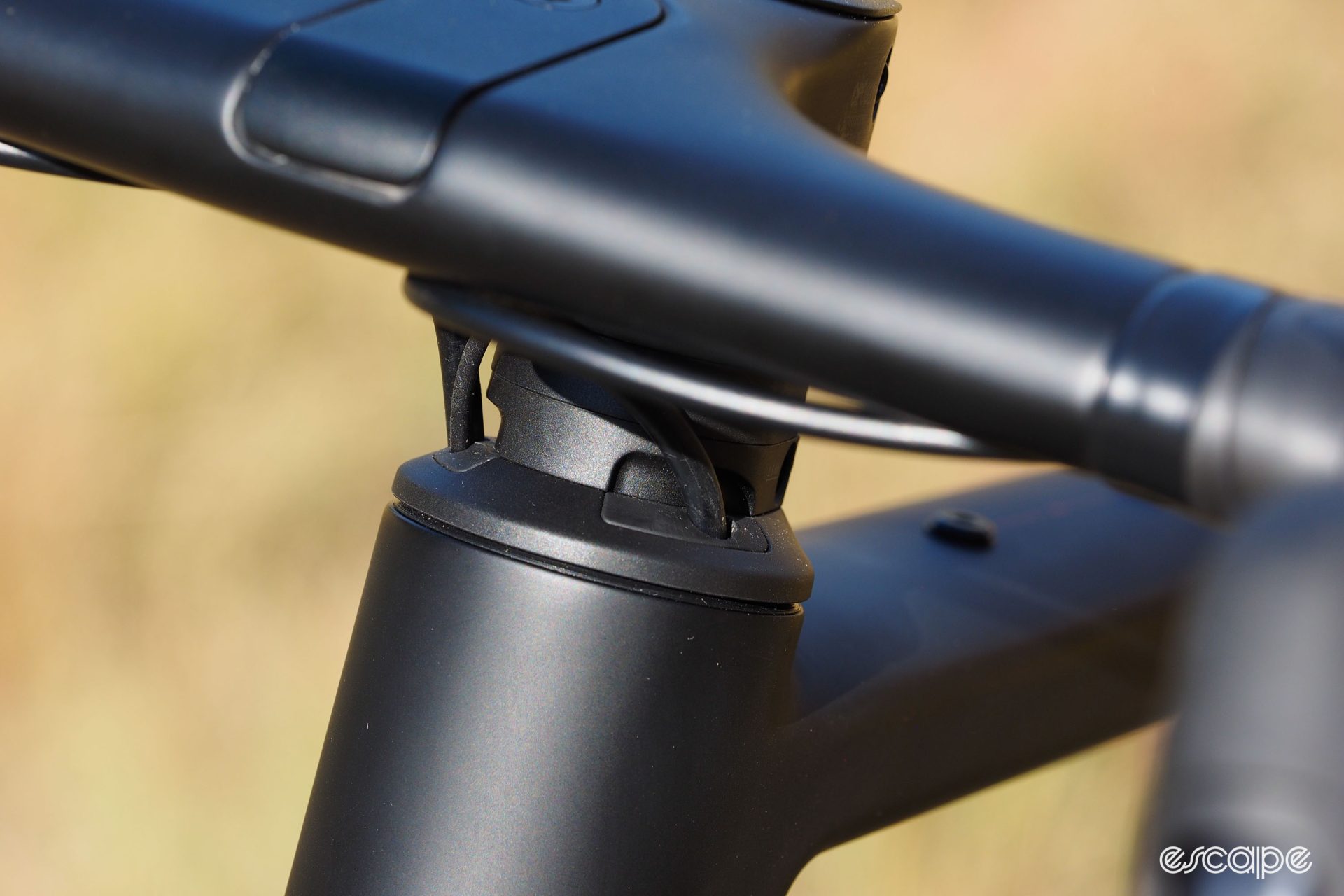
As much as I enjoyed the down tube storage and that really well-designed bag, the former can’t be accessed with the latter installed. And is it asking too much for dynamo wiring given so much attention paid to long-distance racing on this thing? Yeah, maybe. I still like to dream.
Build kit breakdown
The Shimano GRX Di2 on my Grail CF SLX 8 Di2 tester works fantastically well, as always. Shifts are robotically perfect time after time, the lever ergonomics are solid (if a little less hand-friendly than Shimano’s other hood shapes), and the hydraulic disc brakes are strong and easy to control. But as much as I still see the merits of a two-chainring drivetrain and a more tightly-spaced cassette for racing and fast group rides, who still wants an 11-speed electronic setup knowing a new 12-speed version is right around the corner?
Also, remember how I questioned the 172.5 mm-long cranks on the small-sized Endurace I tested recently? Canyon said then that was the right length, yet this Grail is equipped with 170 mm arms. Your guess is as good as mine.
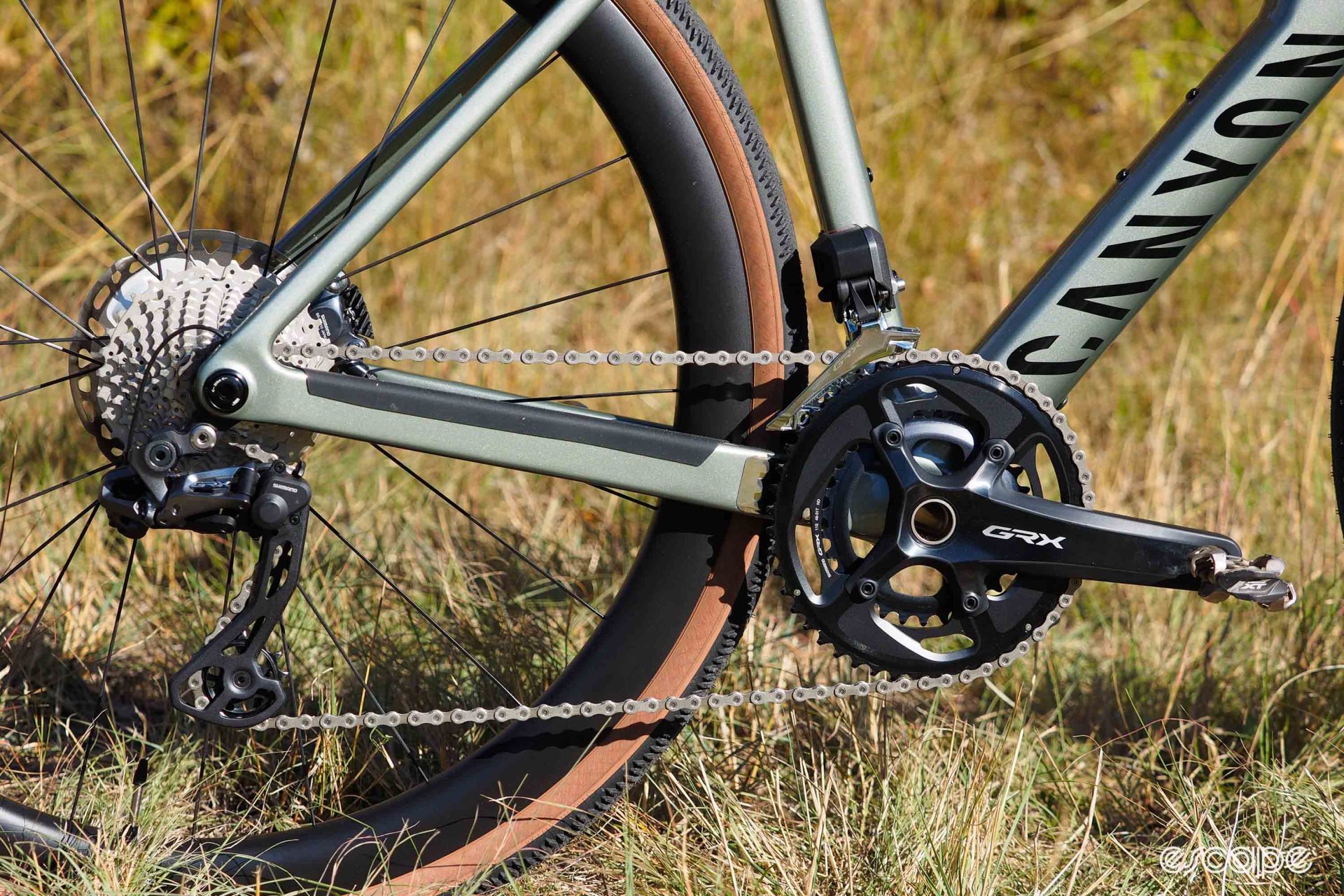
The deep-section DT Swiss GRC 1400 wheels don’t exactly help in the comfort department as they’re some of the stiffer options I’ve ridden off-road, but they’re decently light and impressively robust. The Schwalbe G-One RS tires, however, are some of my favorites for covering unpaved surfaces quickly: fast-wearing, but very fast-rolling, and still with good cornering grip provided conditions aren’t too loose or muddy.
As I’ve found on some other Canyons I’ve ridden lately, I unfortunately uncovered lots of assembly issues. The front derailleur arrived misadjusted and incorrectly installed (the bracing bolt not tightened at all against the seat tube pad), the rear derailleur was slightly out of adjustment as well, the rear brake caliper was misaligned, and the rear rotor was warped. None of these issues are likely to have occurred in transit, either. All of these were thankfully very easy for me to fix, but I can’t say the same for the majority of Canyon’s customers.
A few millimeters shy of the holy Grail
Overall, feels like this new Grail CF gets an awful lot right. It’s ostensibly faster, the handling is more appropriate for the task, it looks good, and while the ride quality is firmer than I prefer, it’s at least more balanced front-to-rear. The suite of dedicated accessories is wonderfully thought-out, too.
But as always, the devil is in the details, and I wish Canyon hadn’t fumbled a few things right before crossing the goal line. Do I think this new Grail CF is a very good bike? Absolutely. But had I been able to more readily set the bike up the way I want it (and can often do with most other bikes), I would have liked it even more.
Thankfully this is only first down, and the issues I raise here should be relatively easy to fix (pardon the American football reference for non-Americans, but chances are decent you’re a Taylor Swift fan, so you should be all up to speed on the basics of that sport now, eh?).
More information can be found at www.canyon.com.
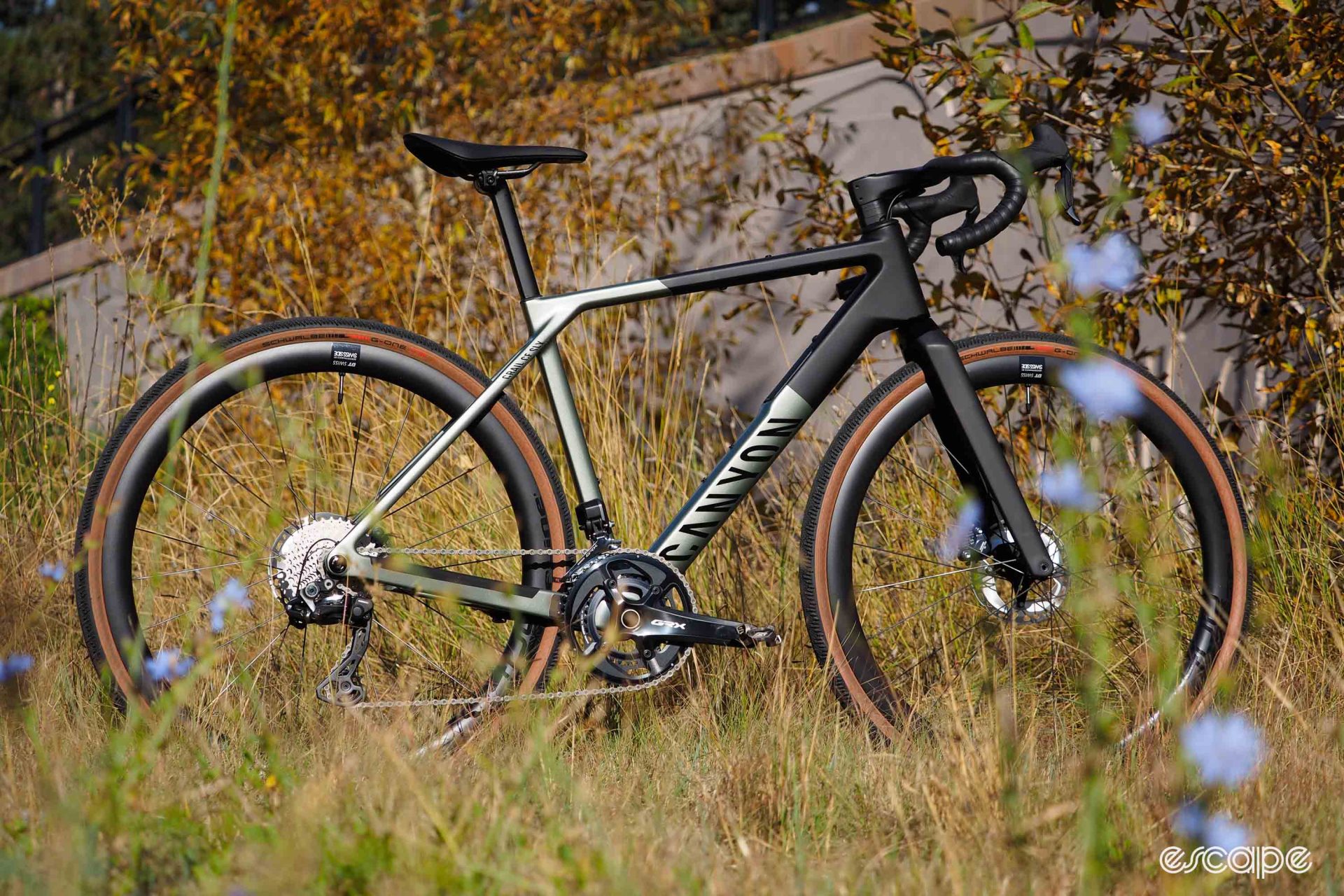
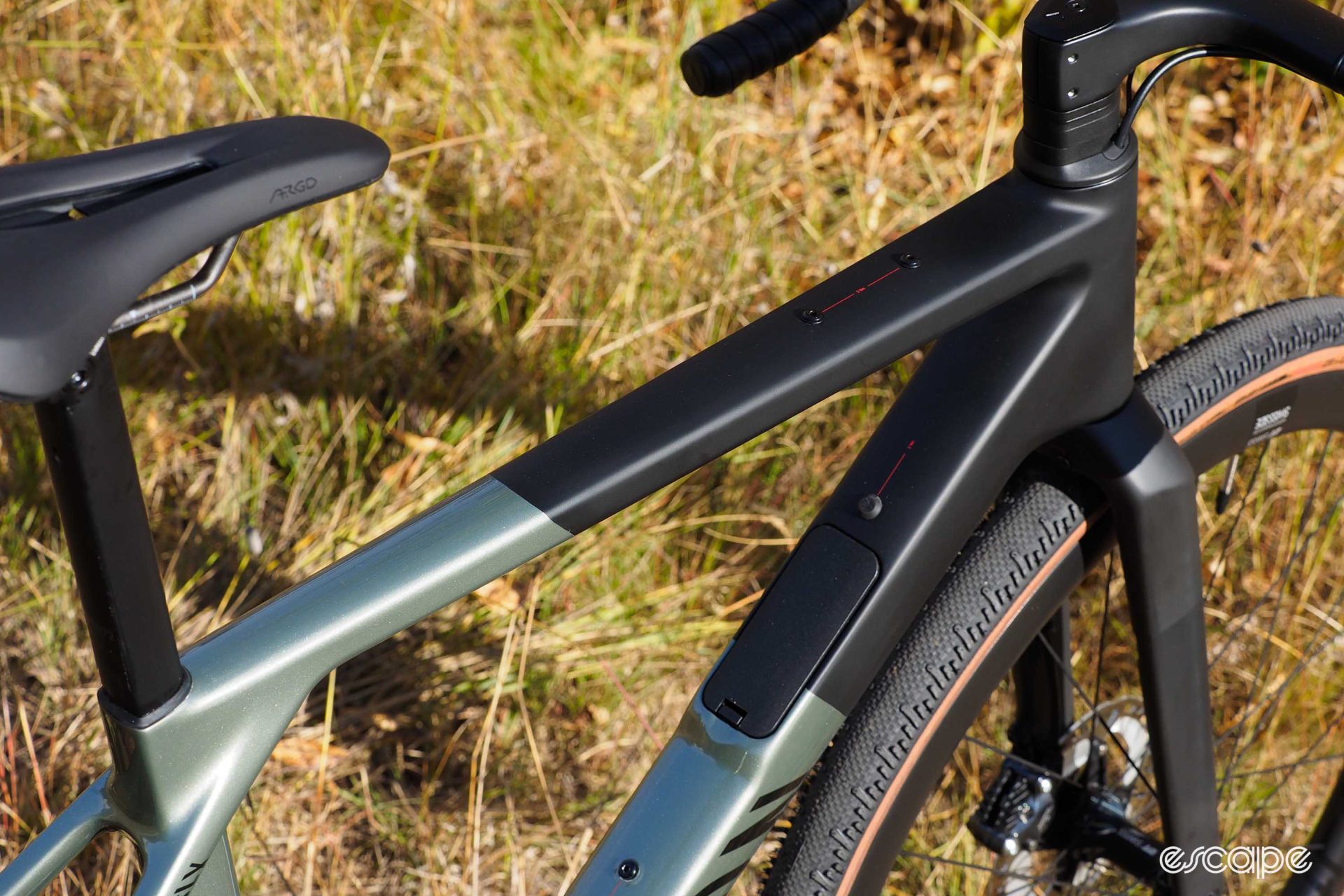

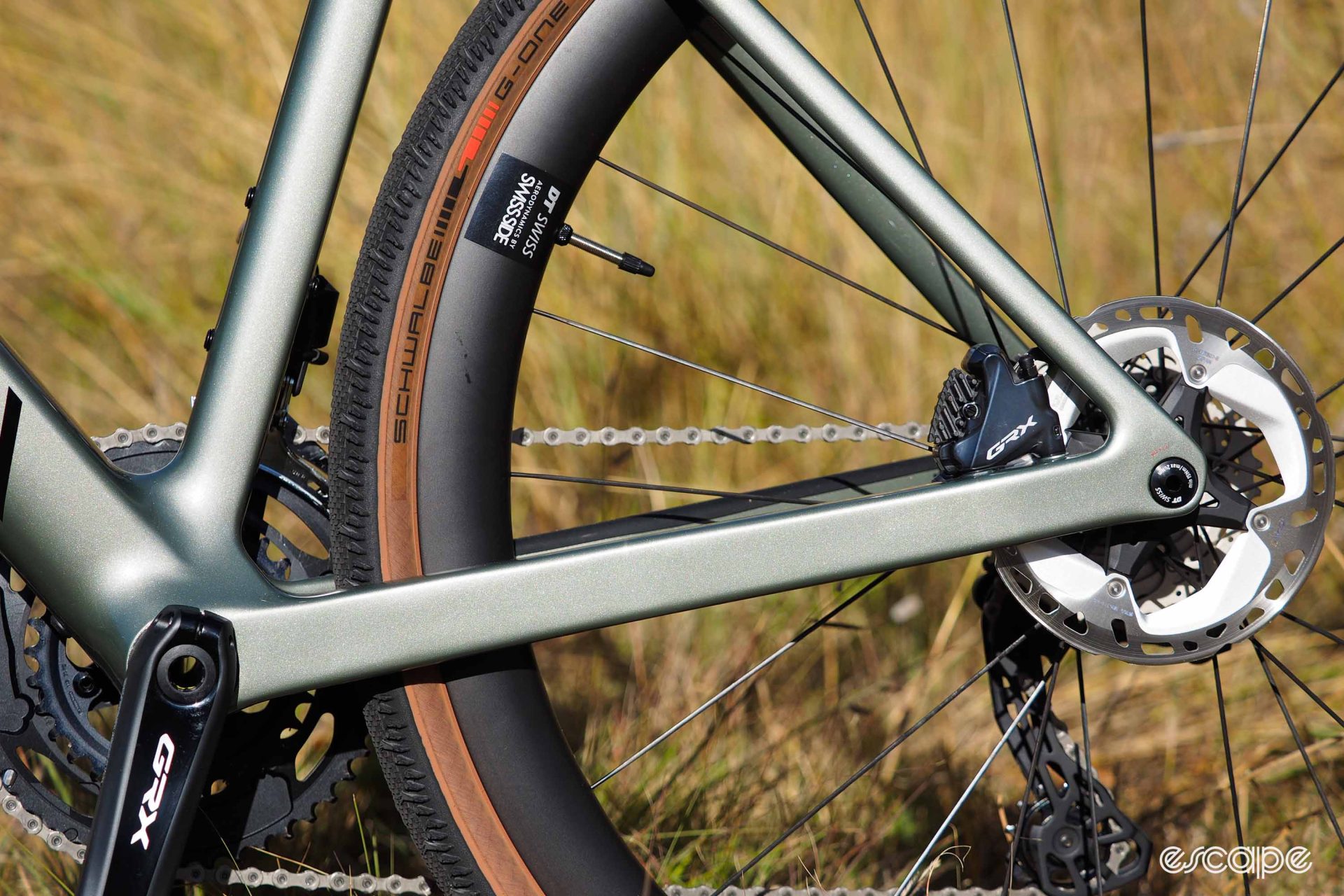

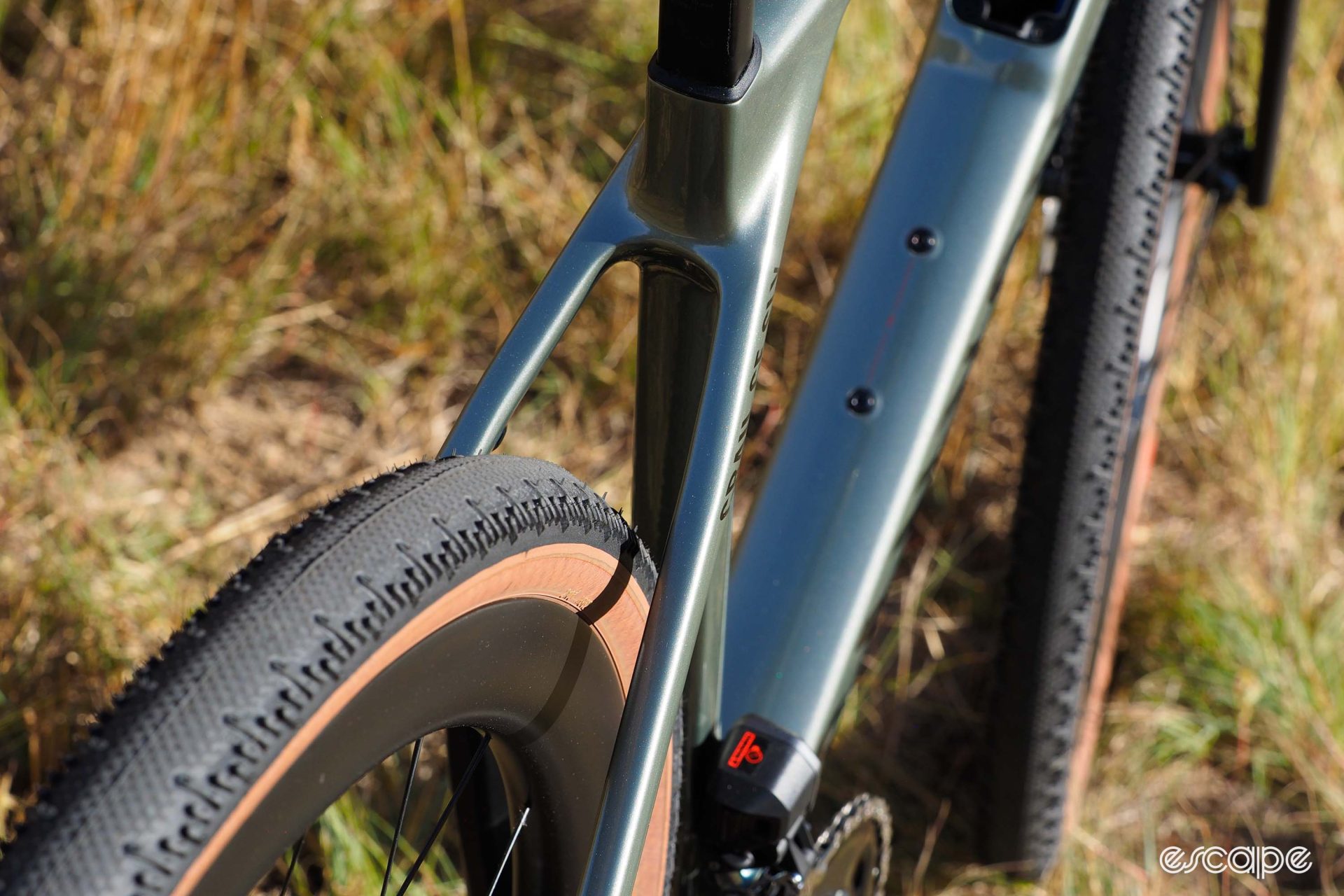
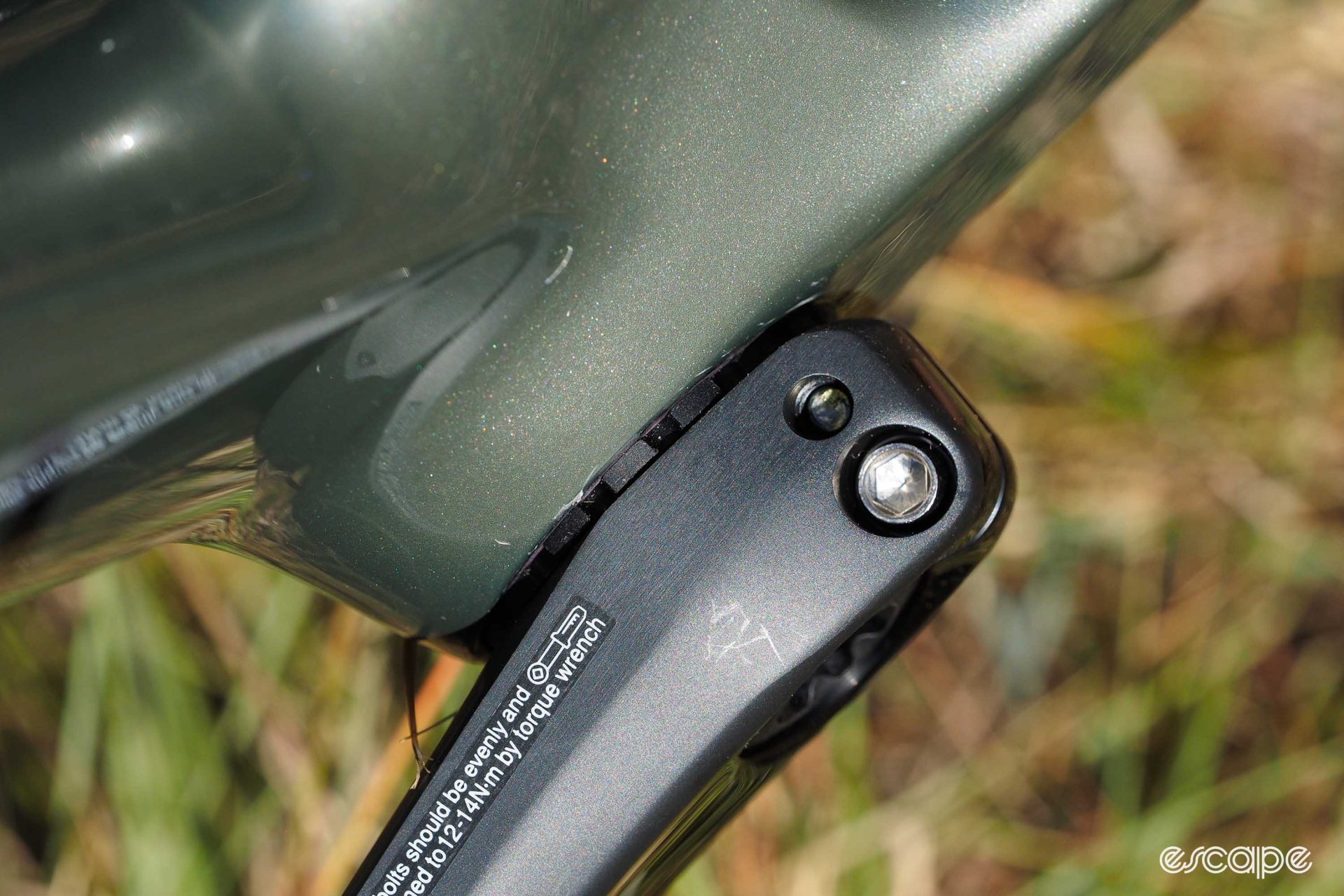
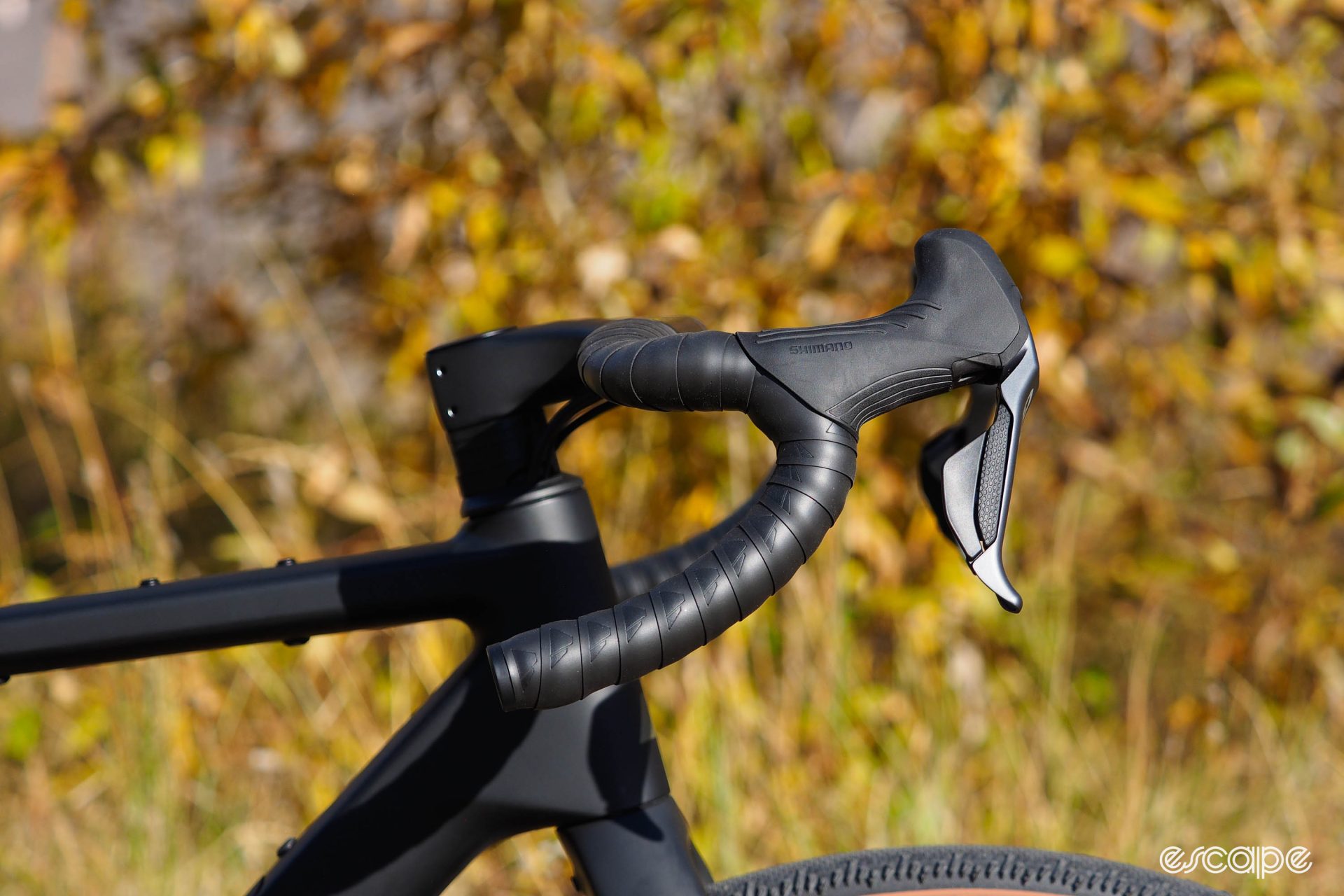
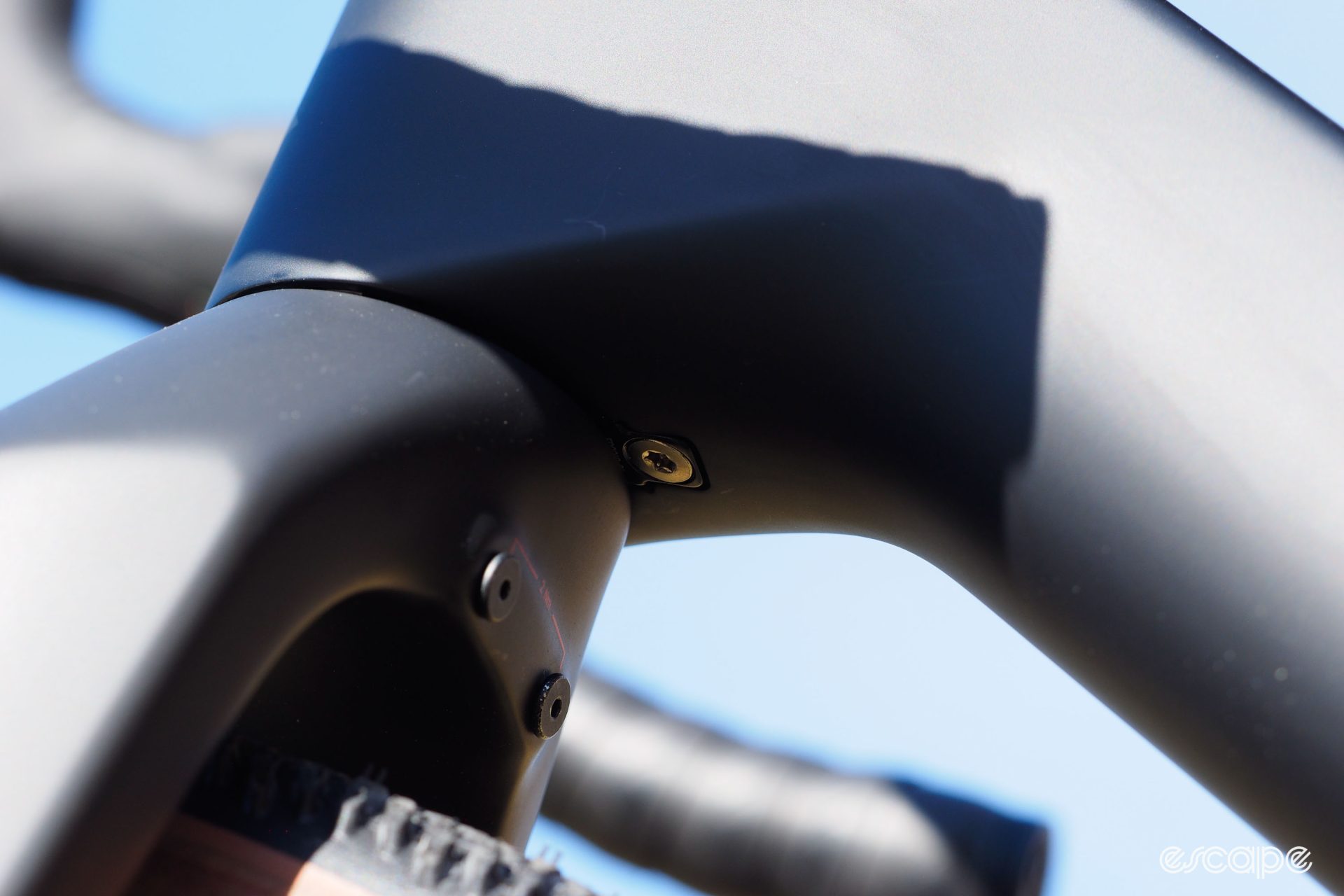
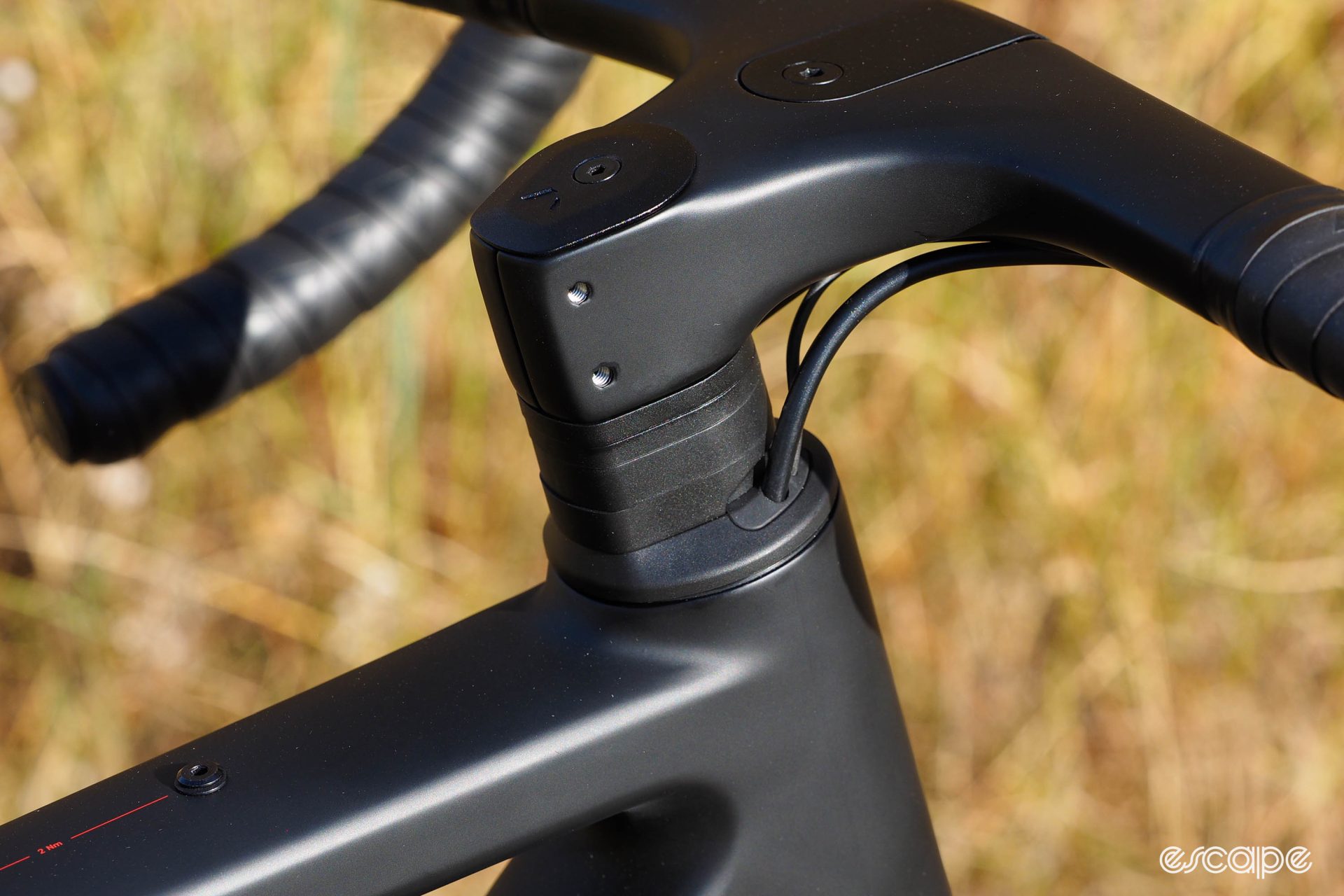
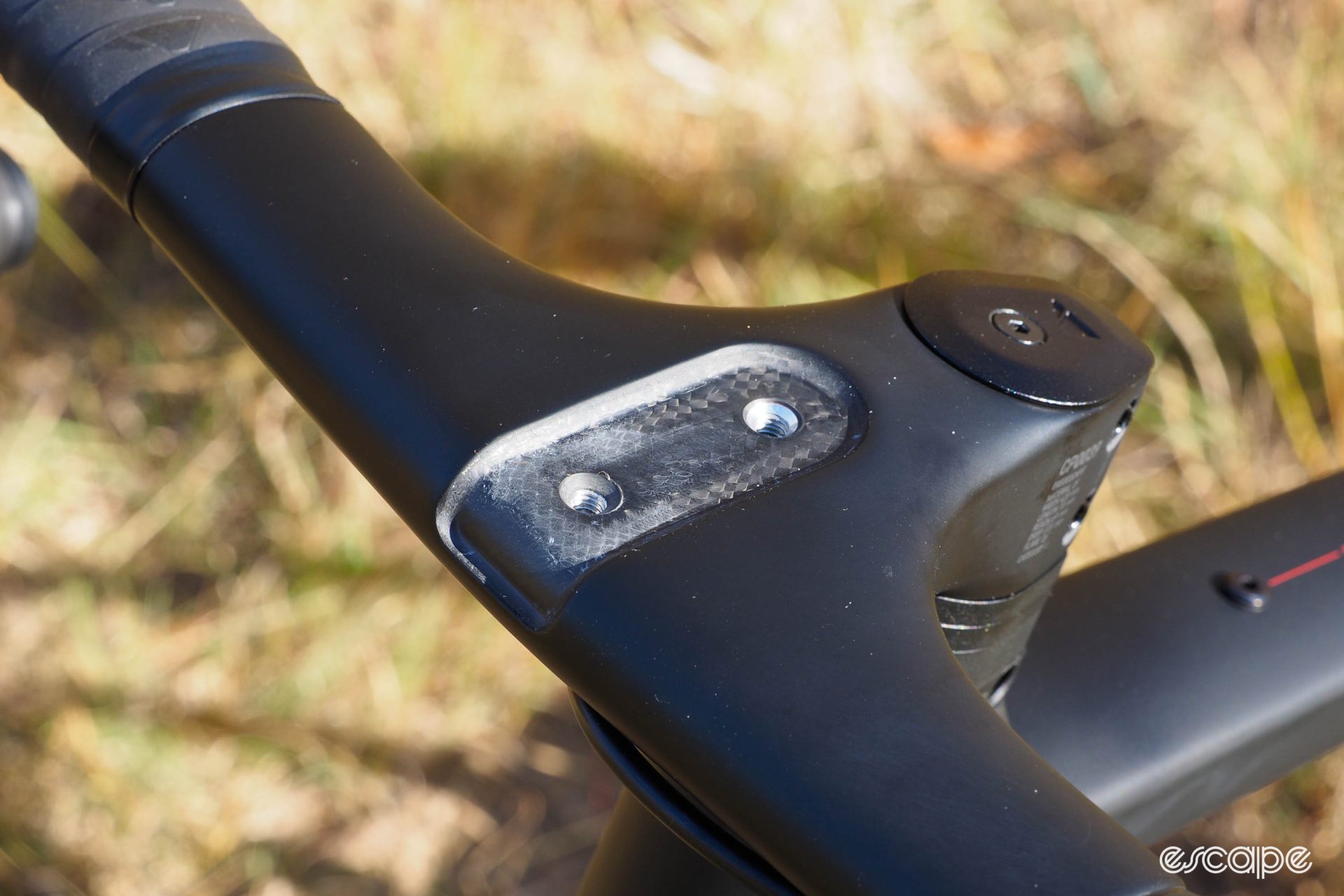
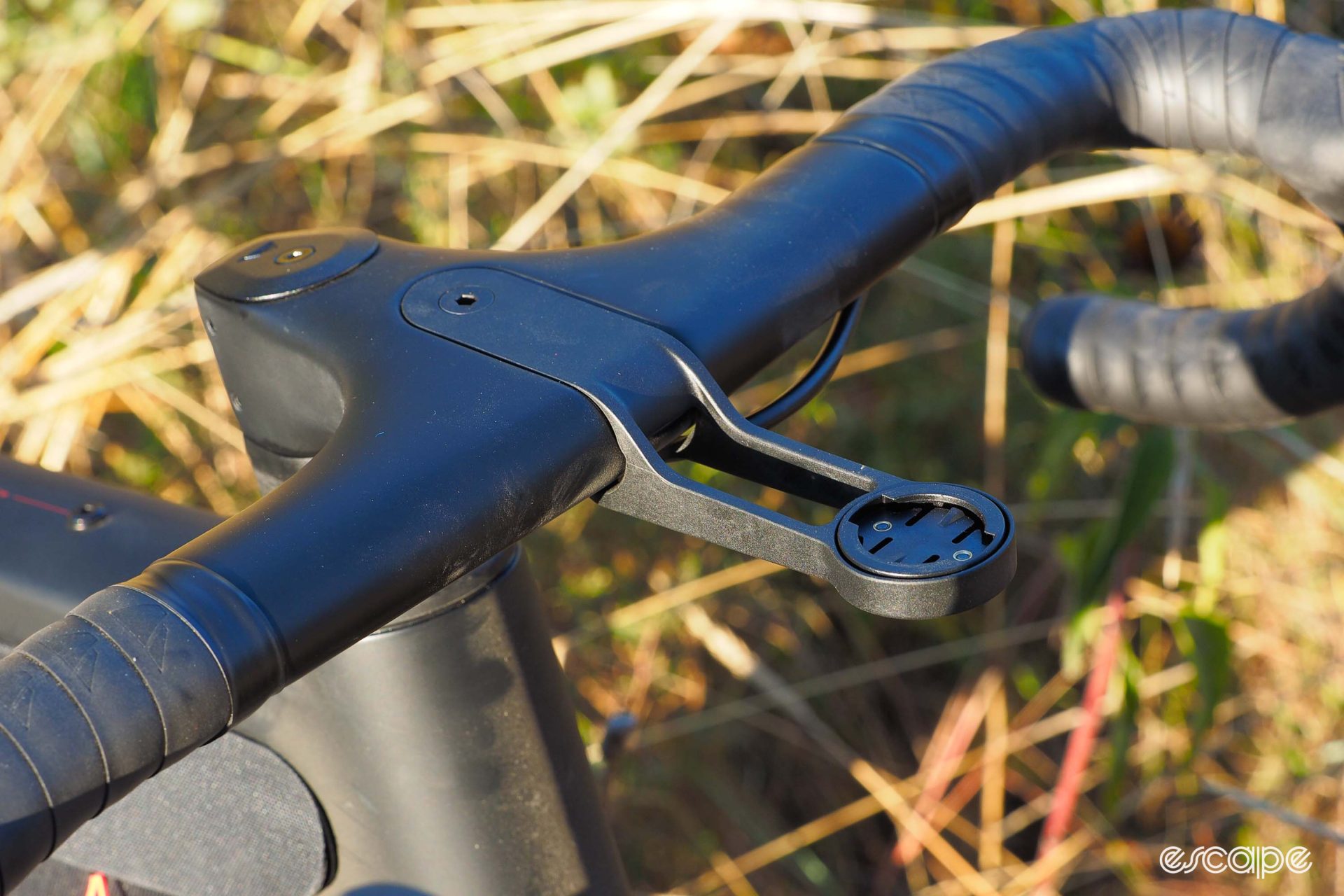
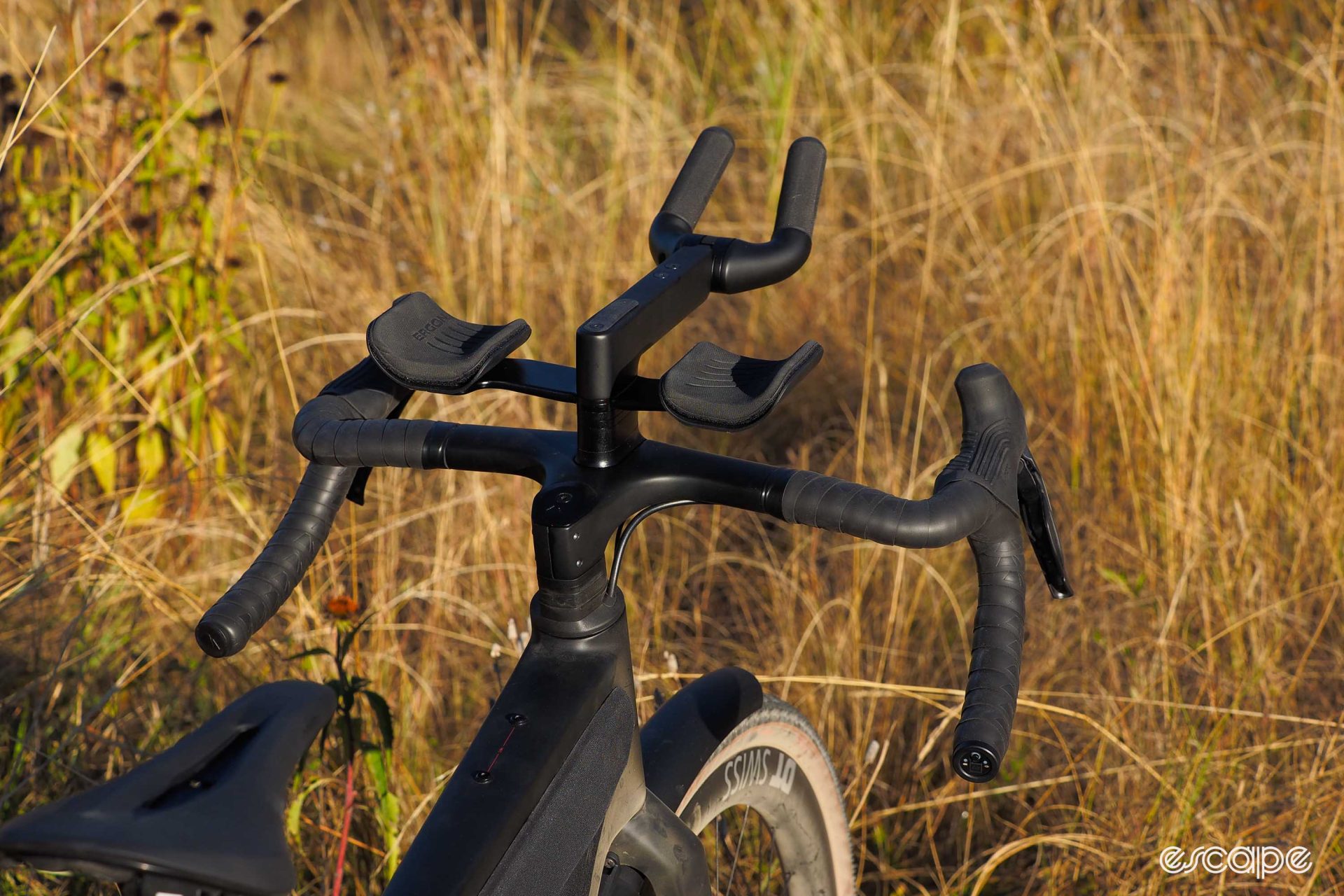
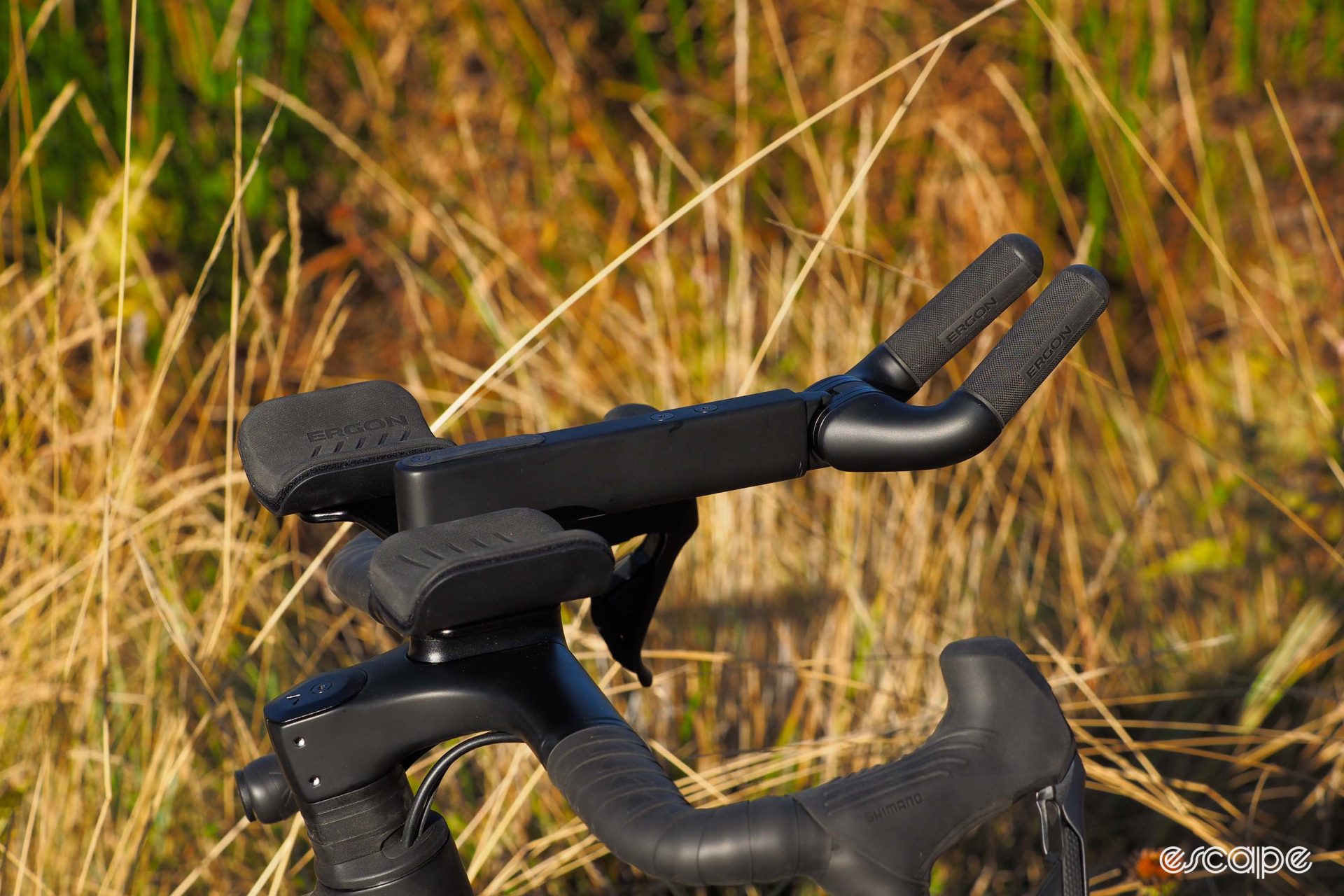
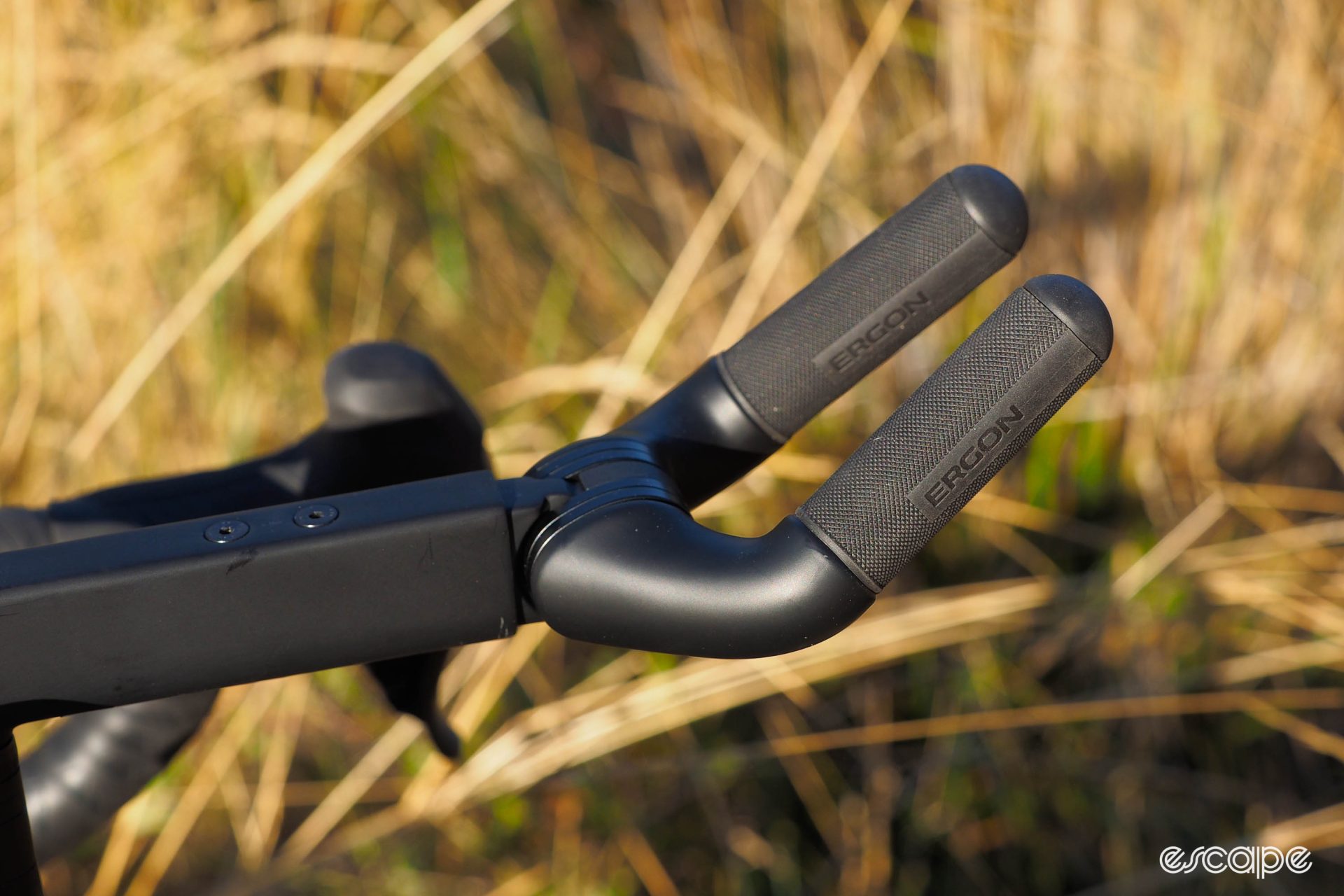
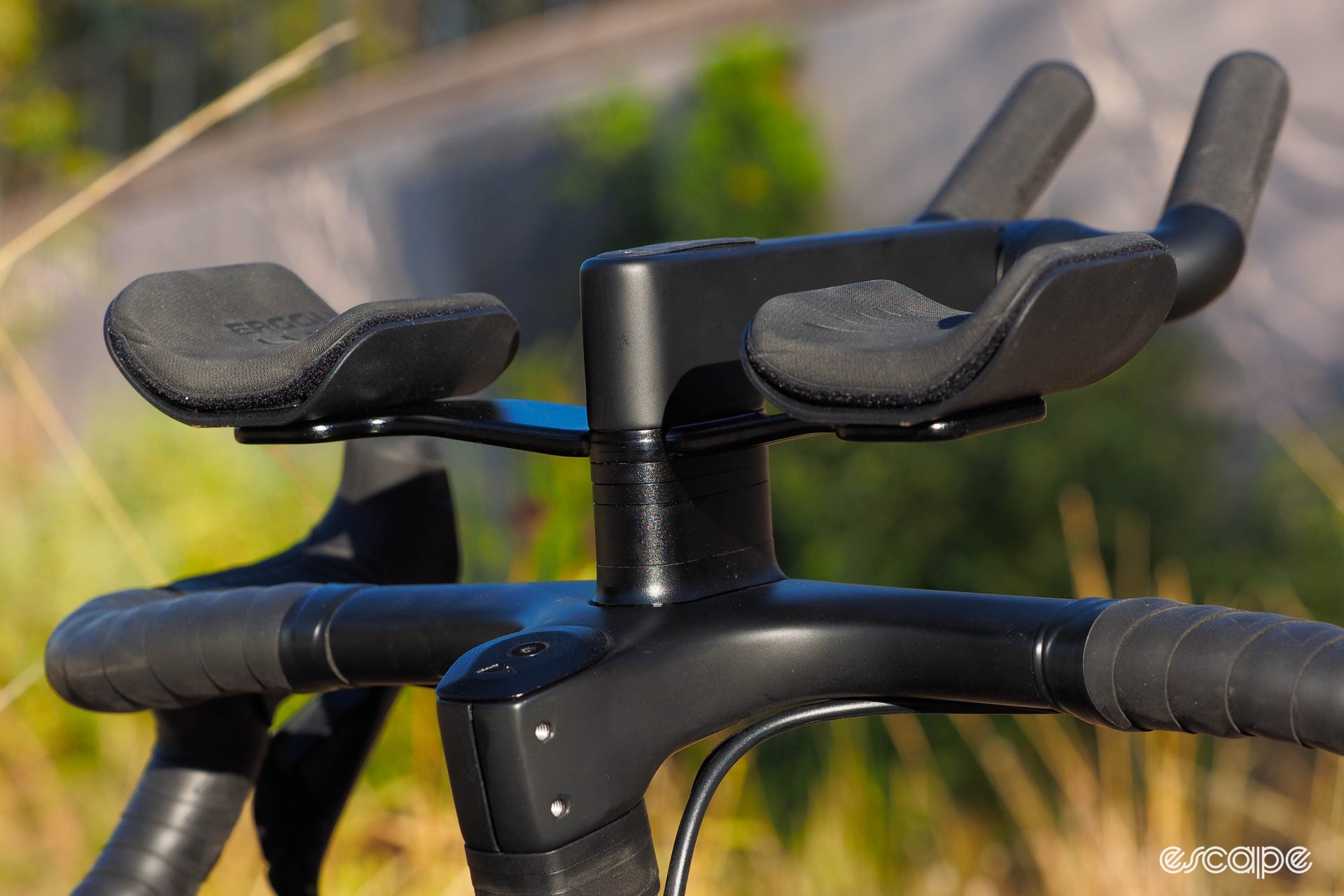
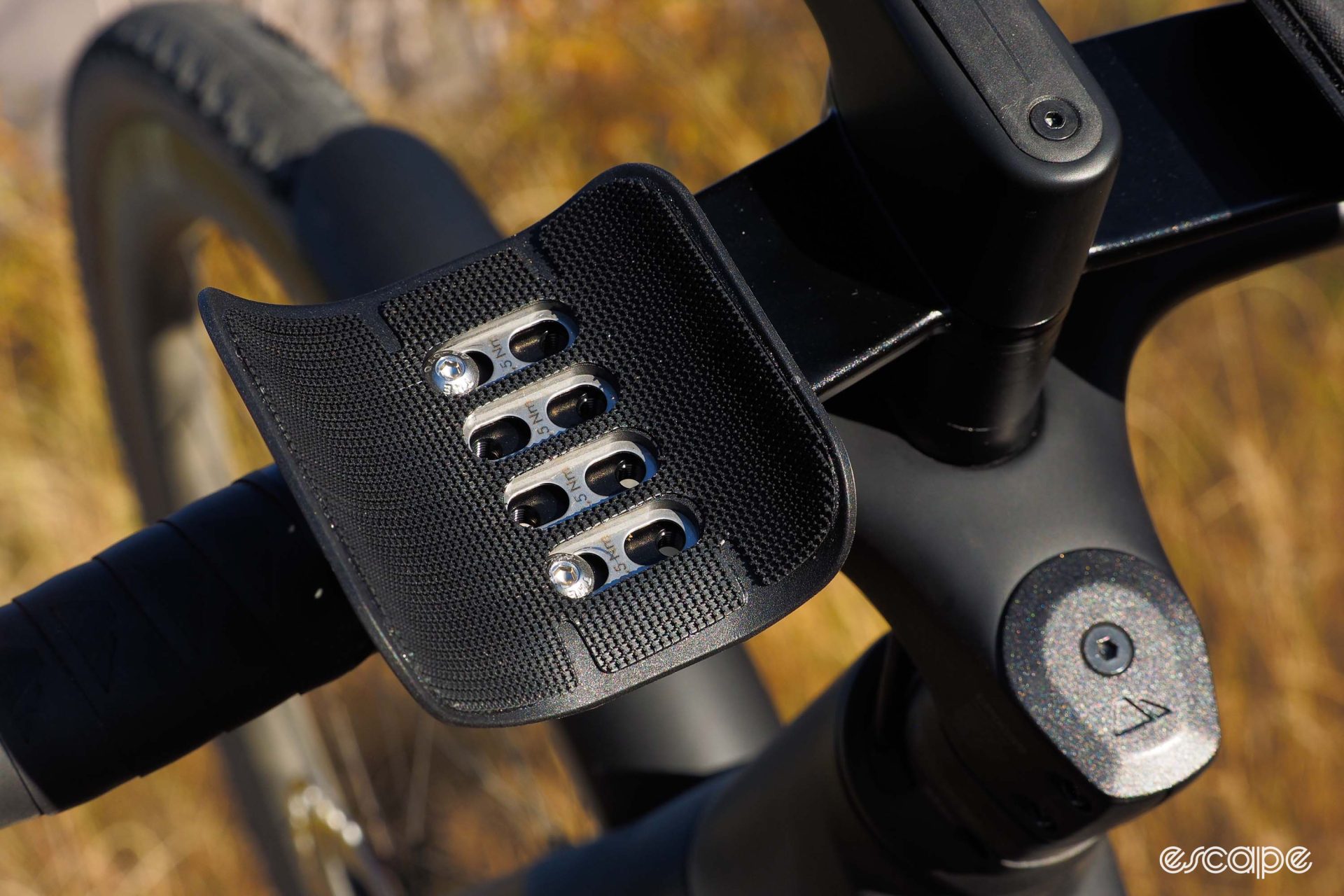
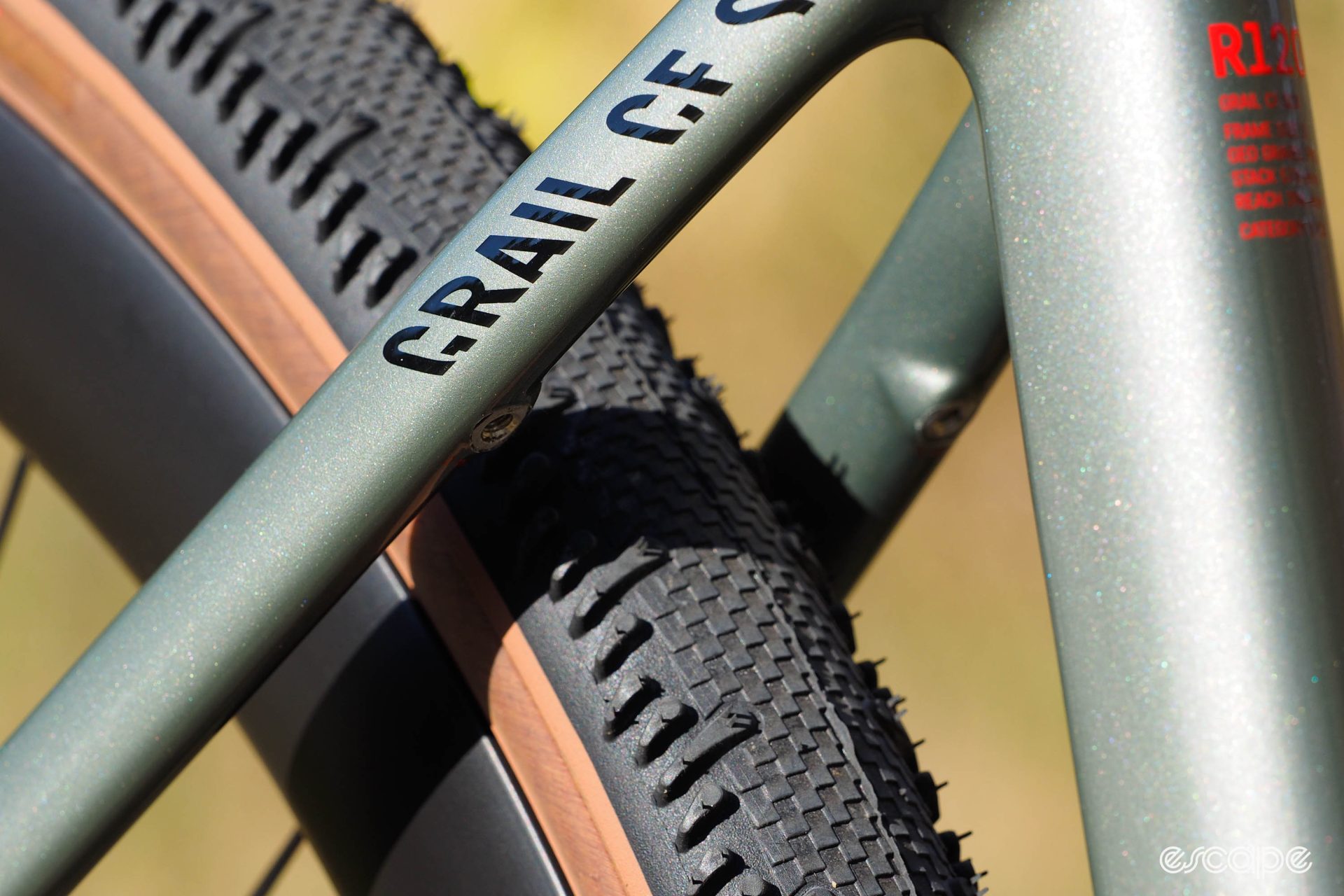
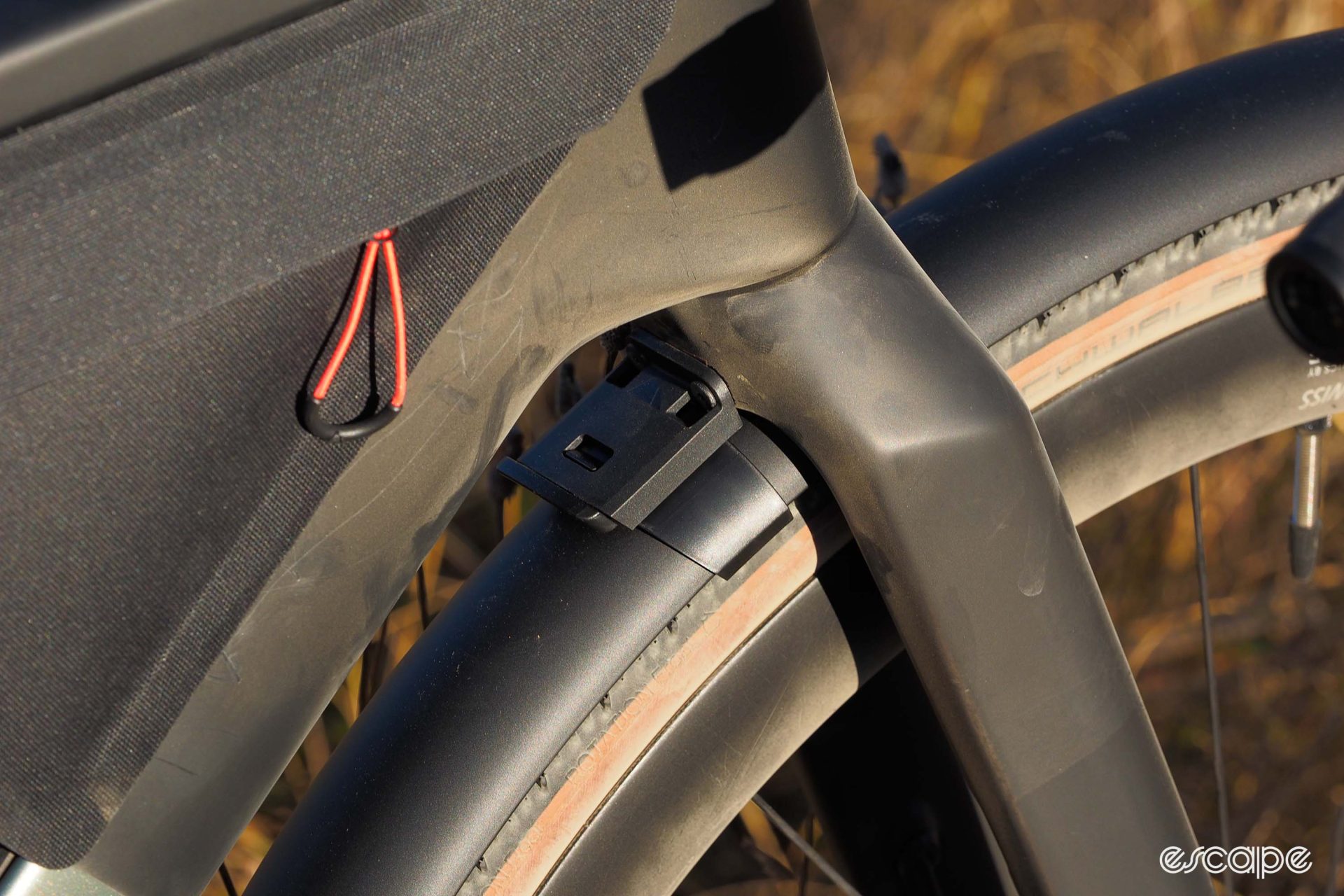

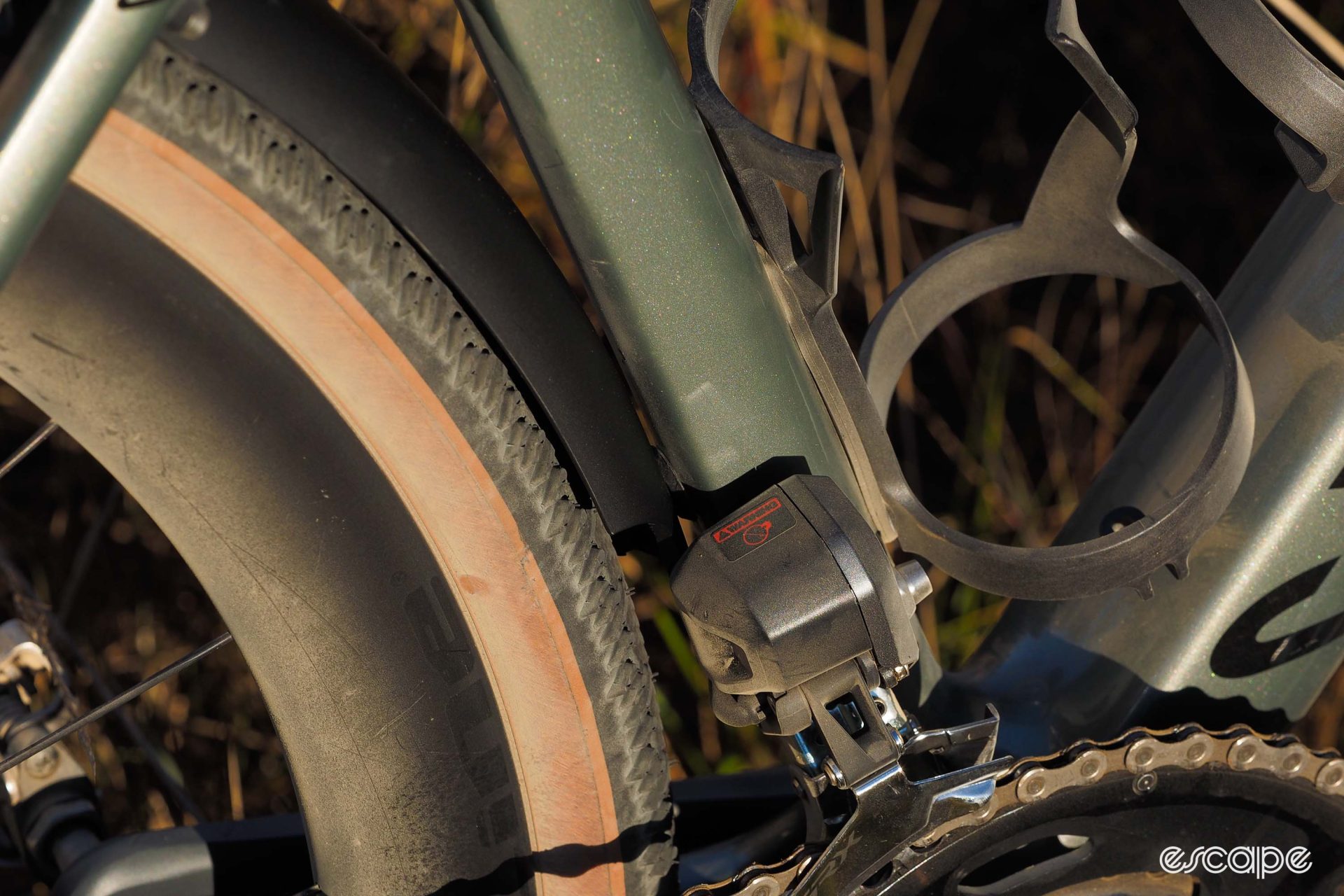
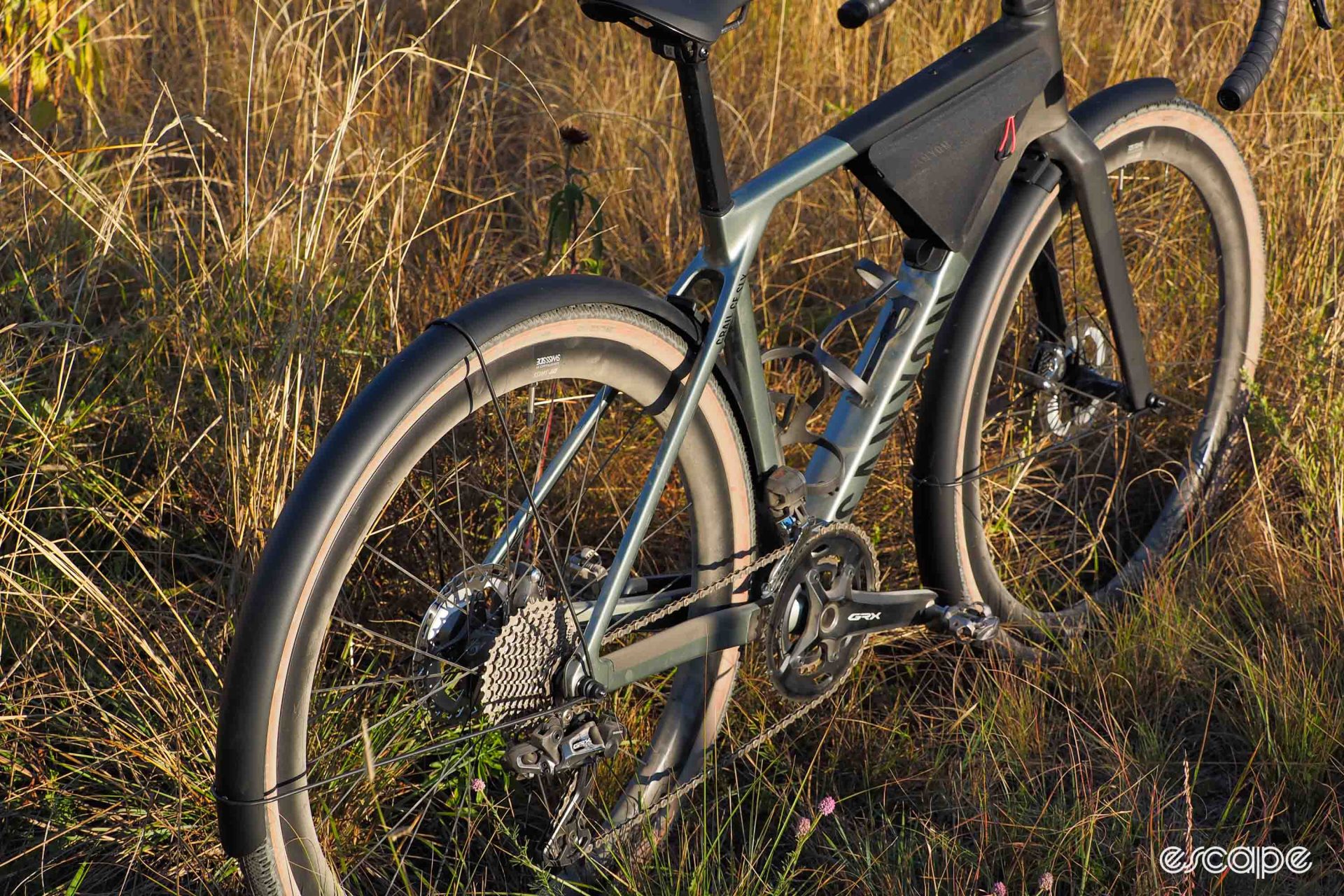
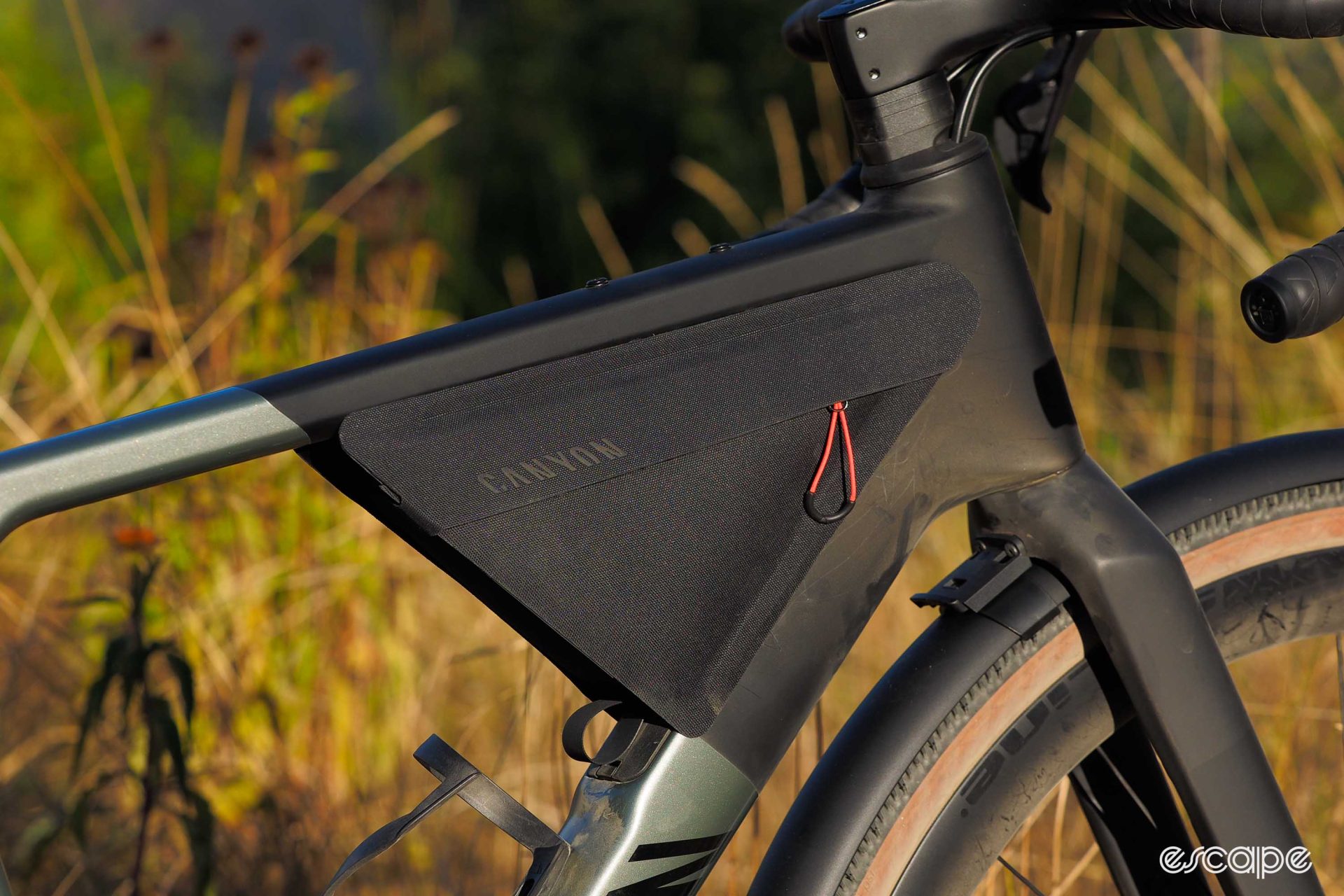
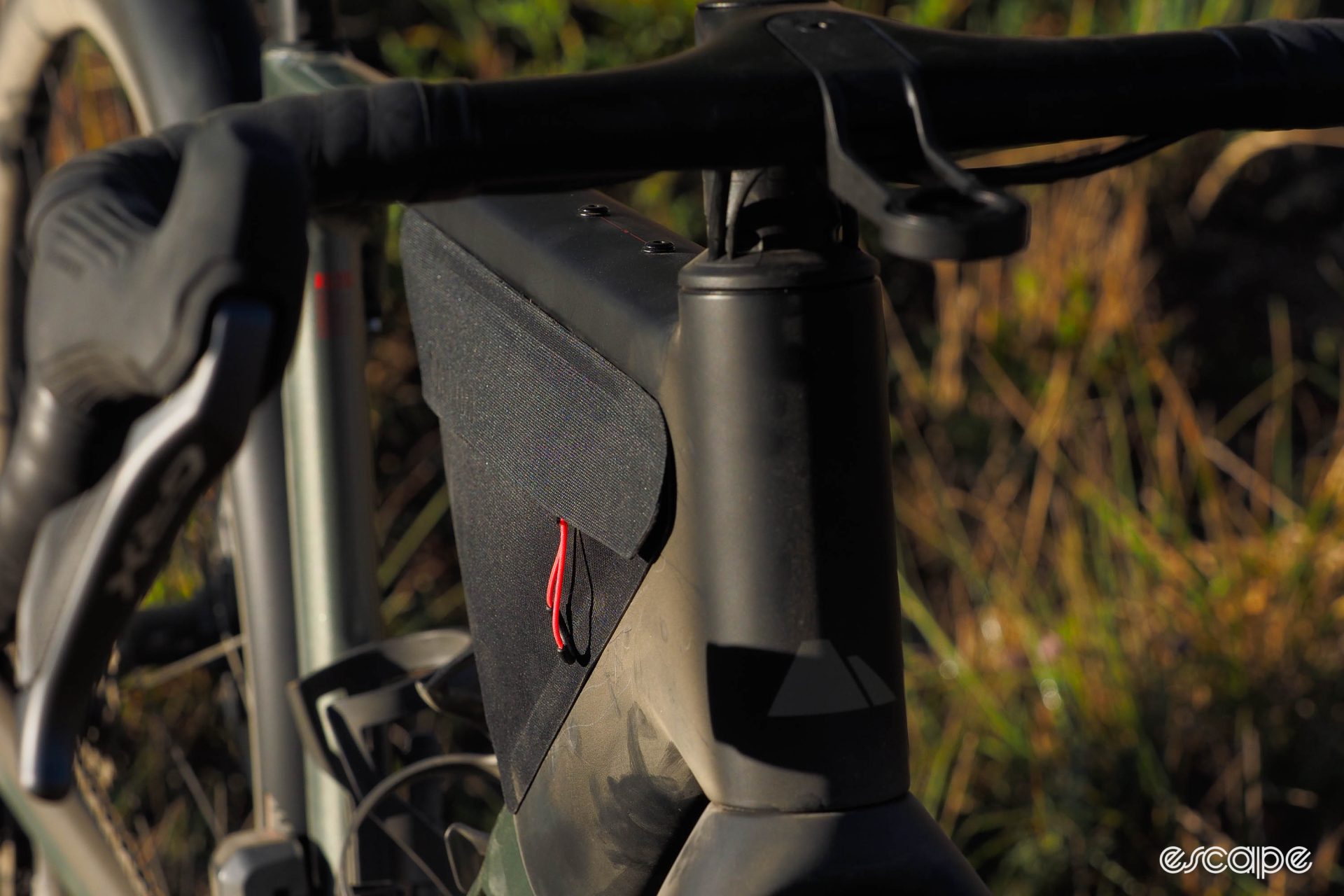
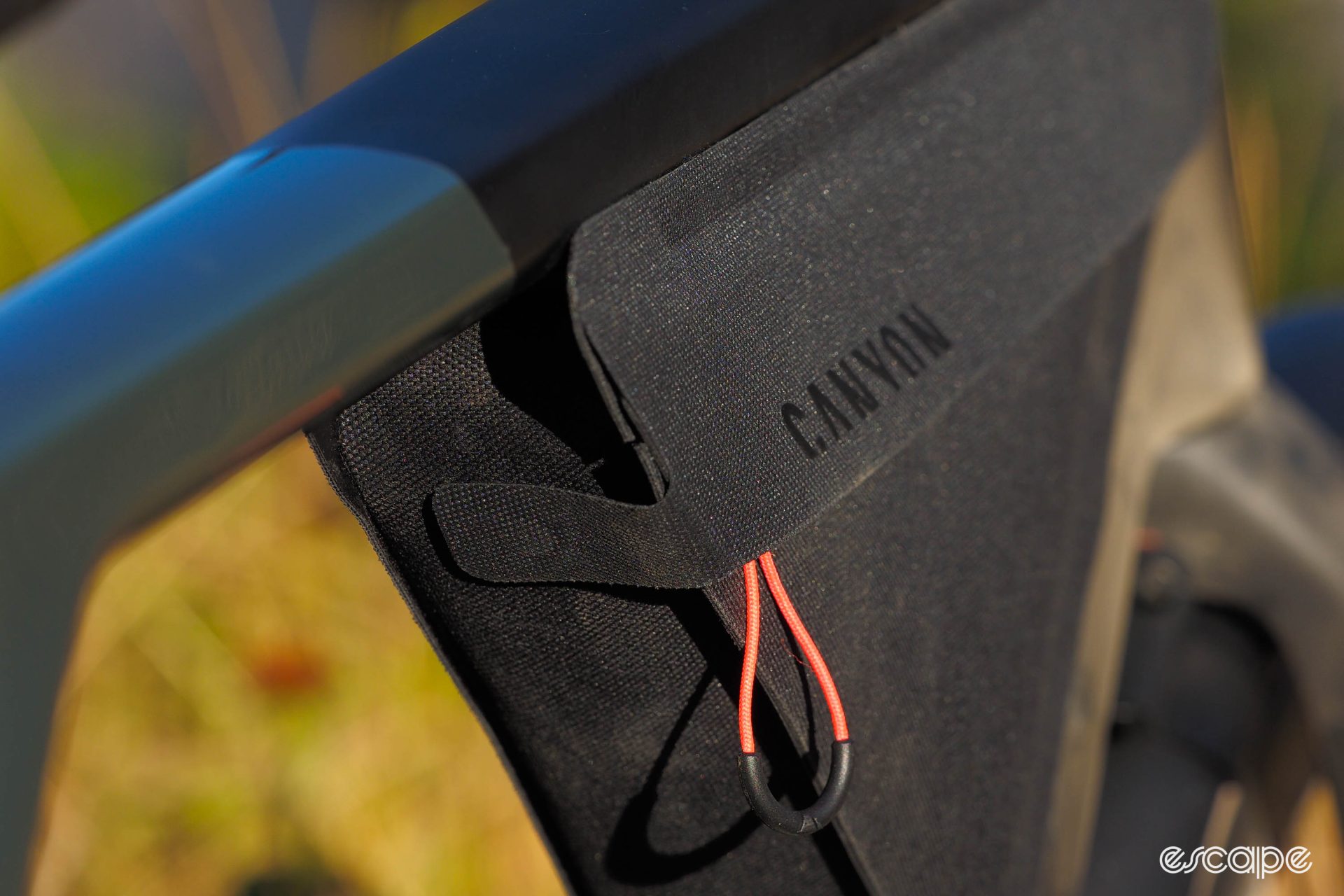
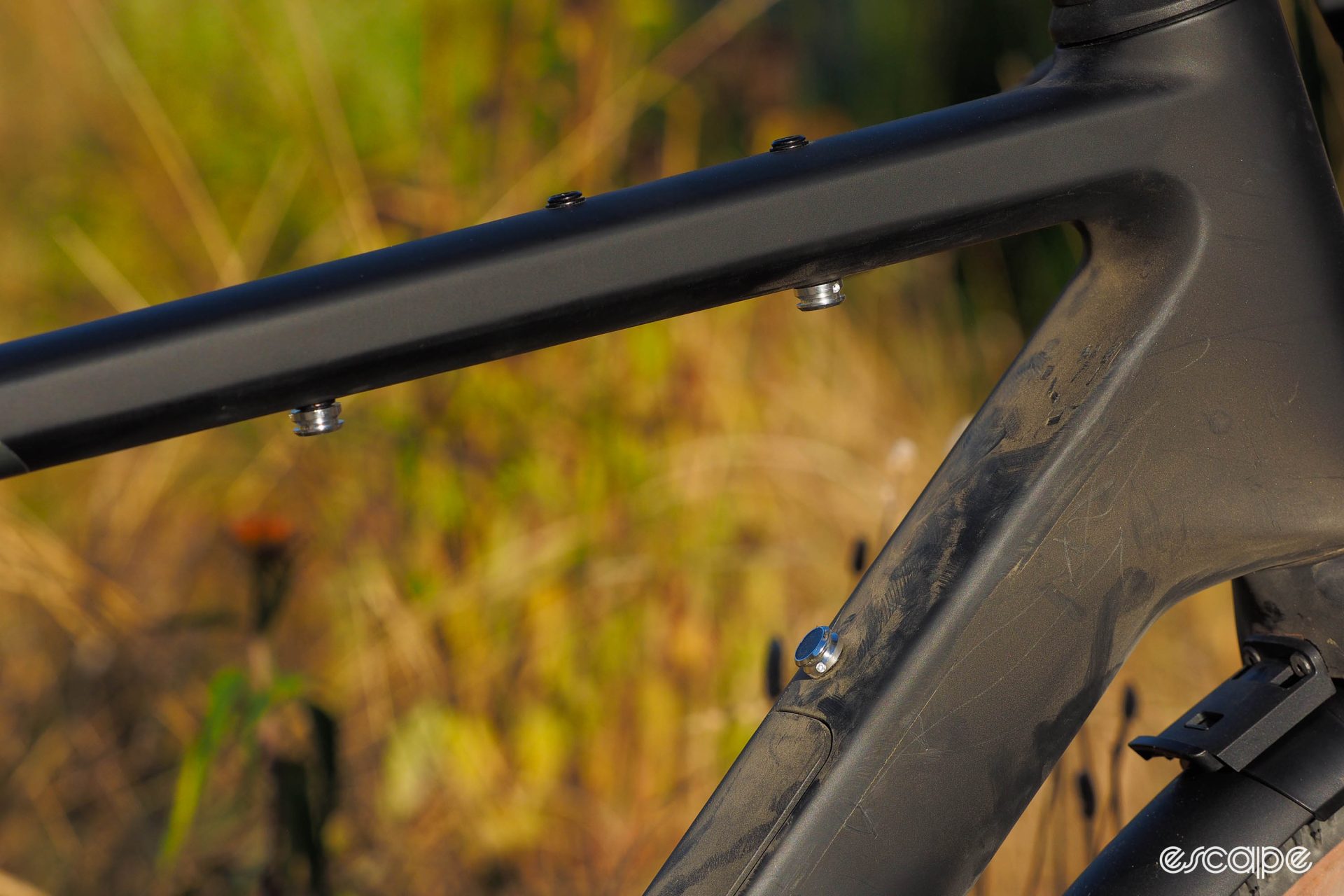
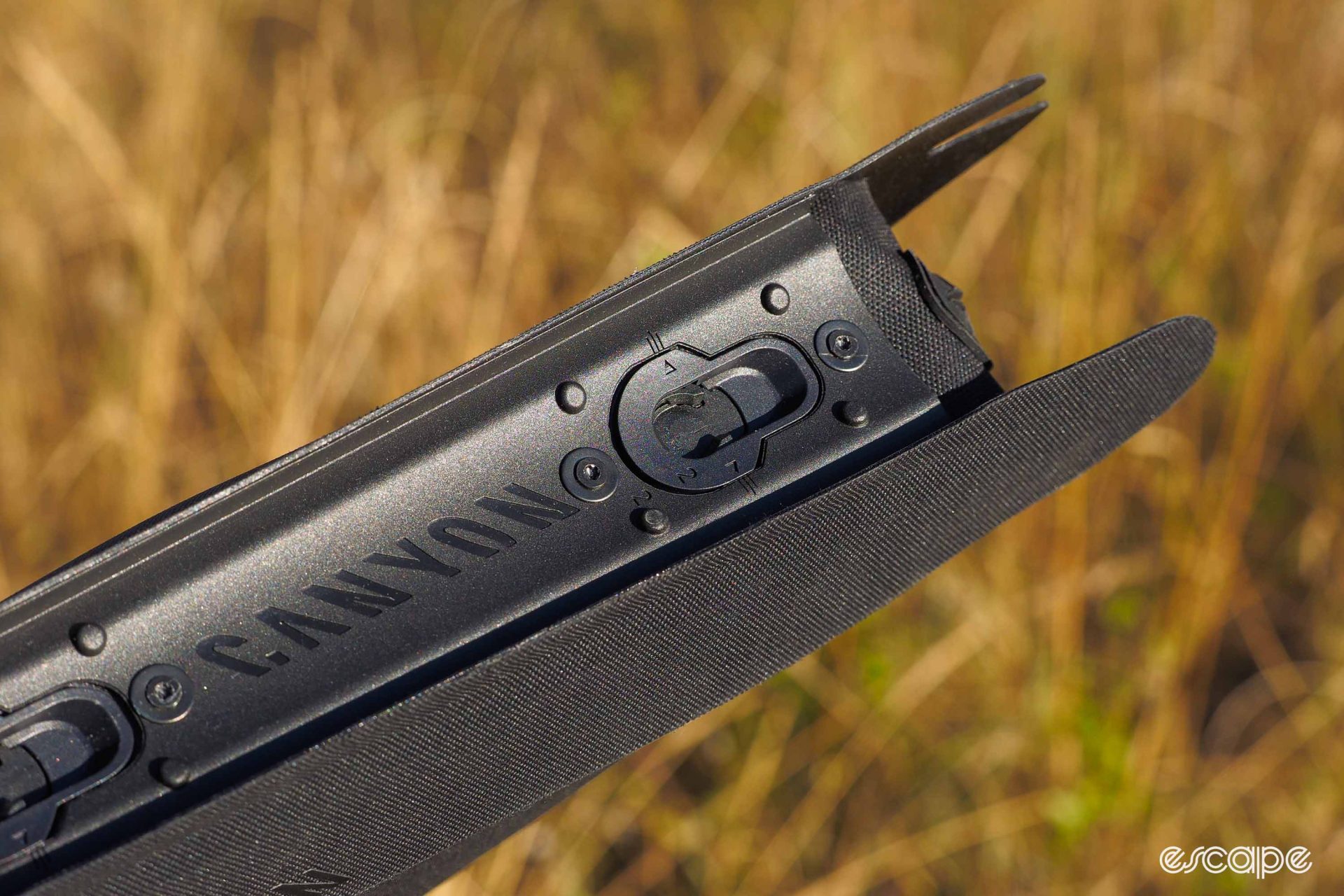
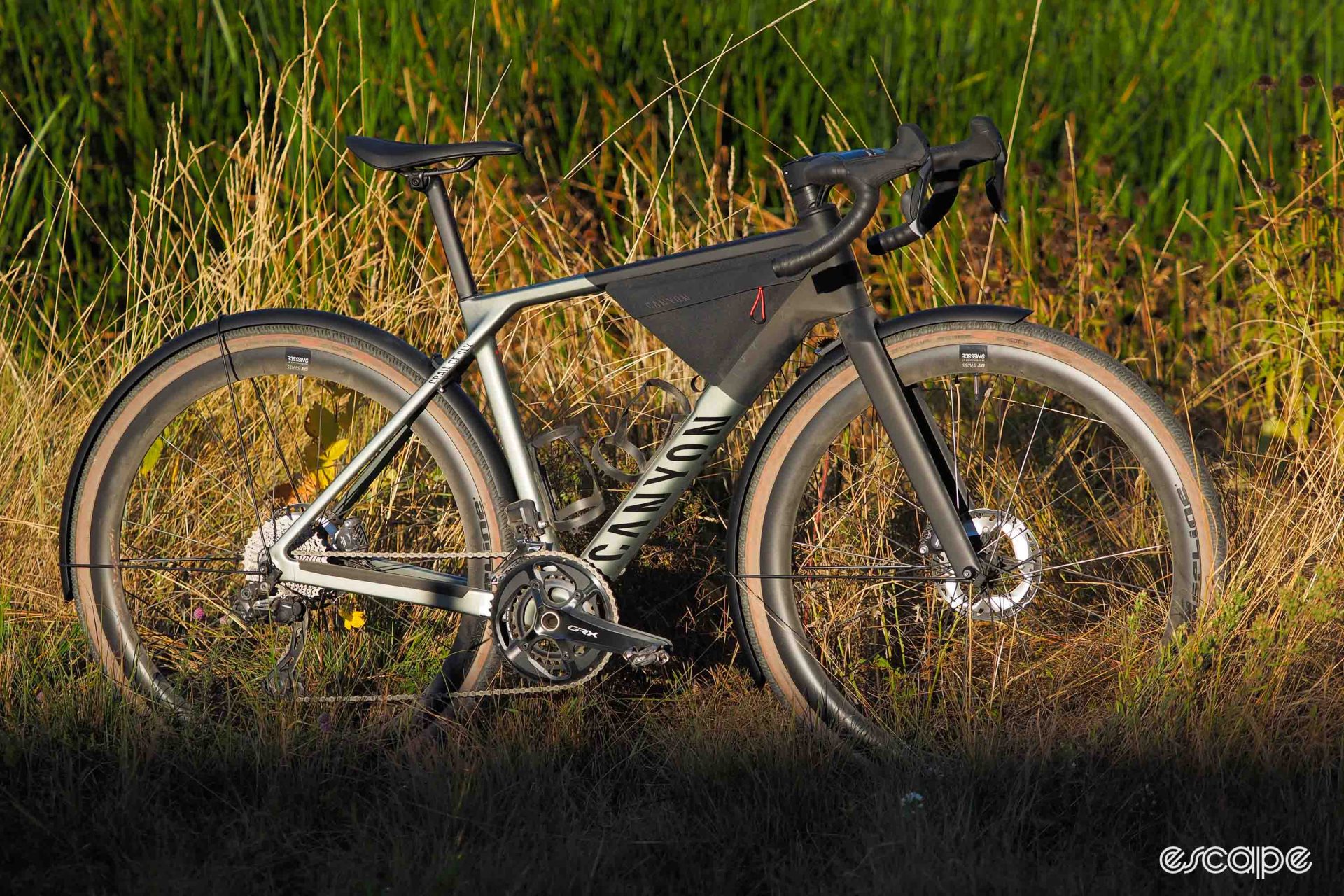

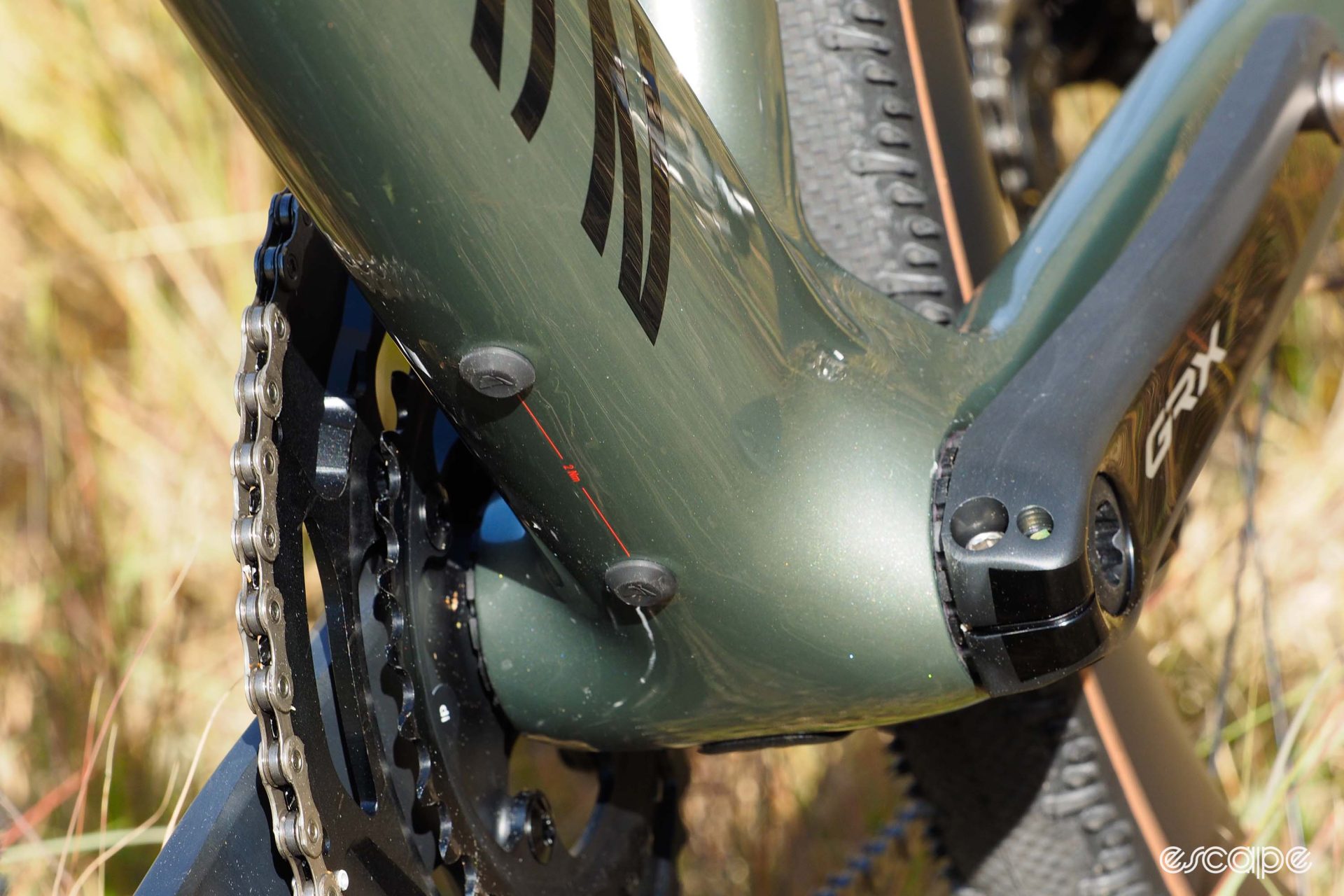
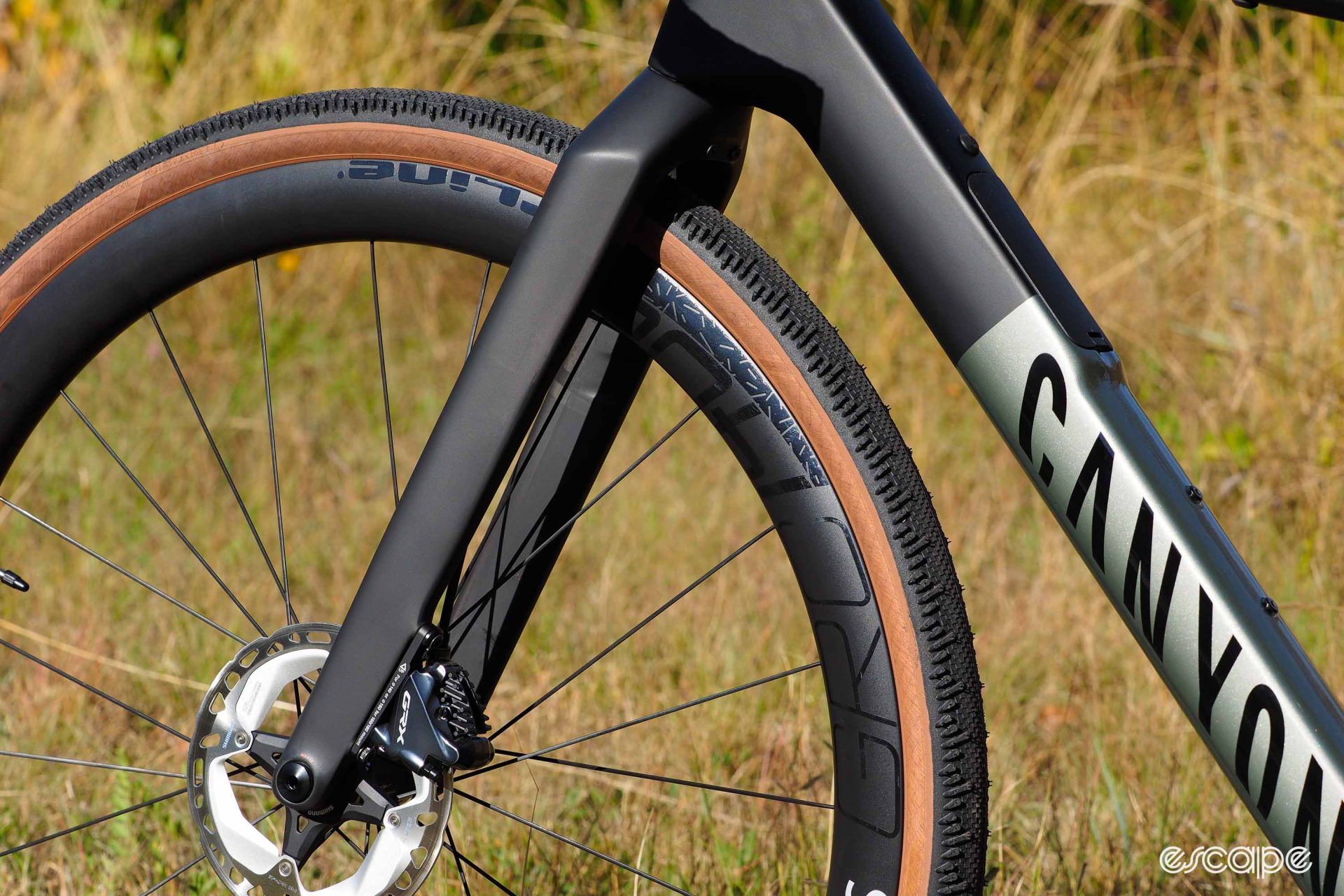
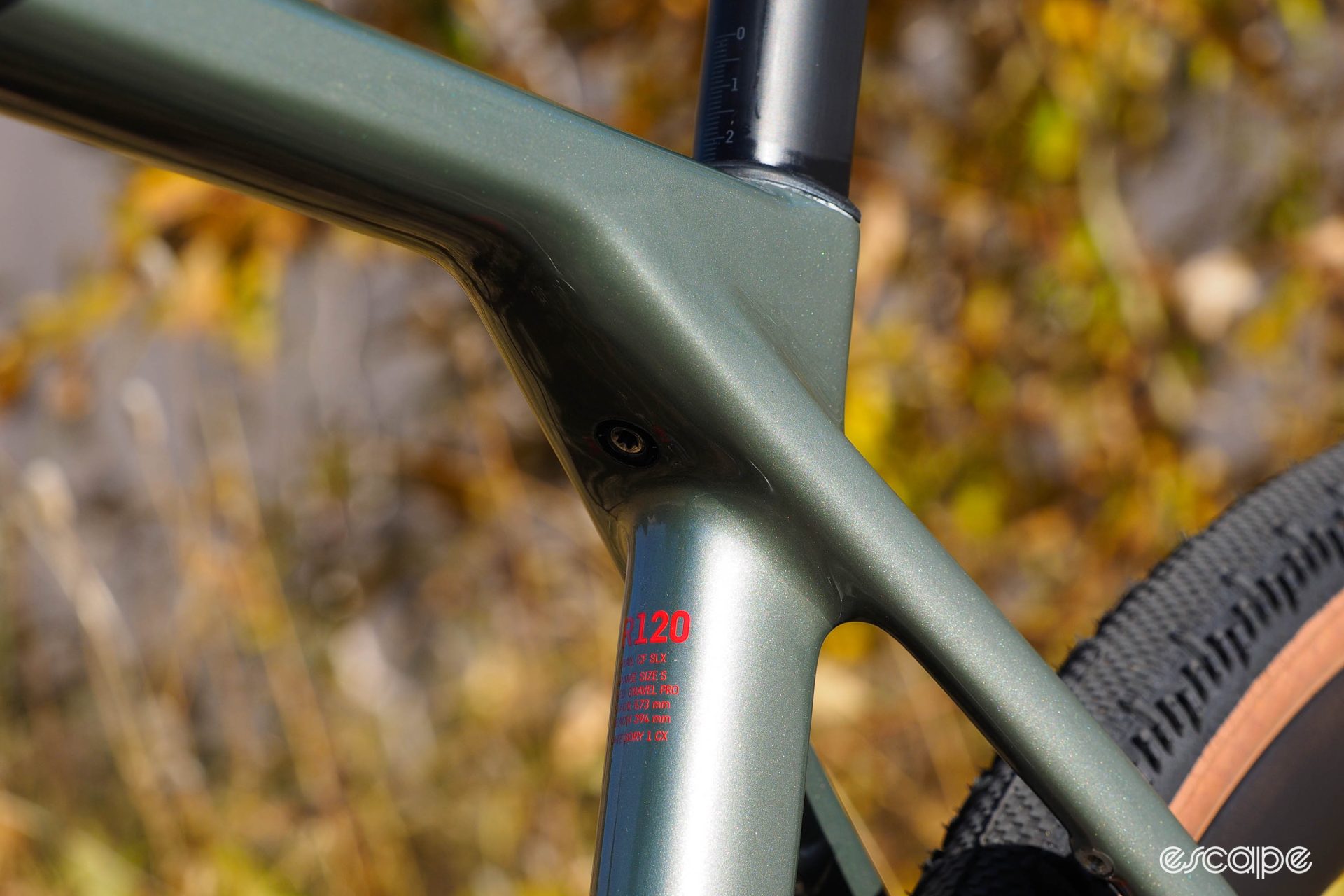
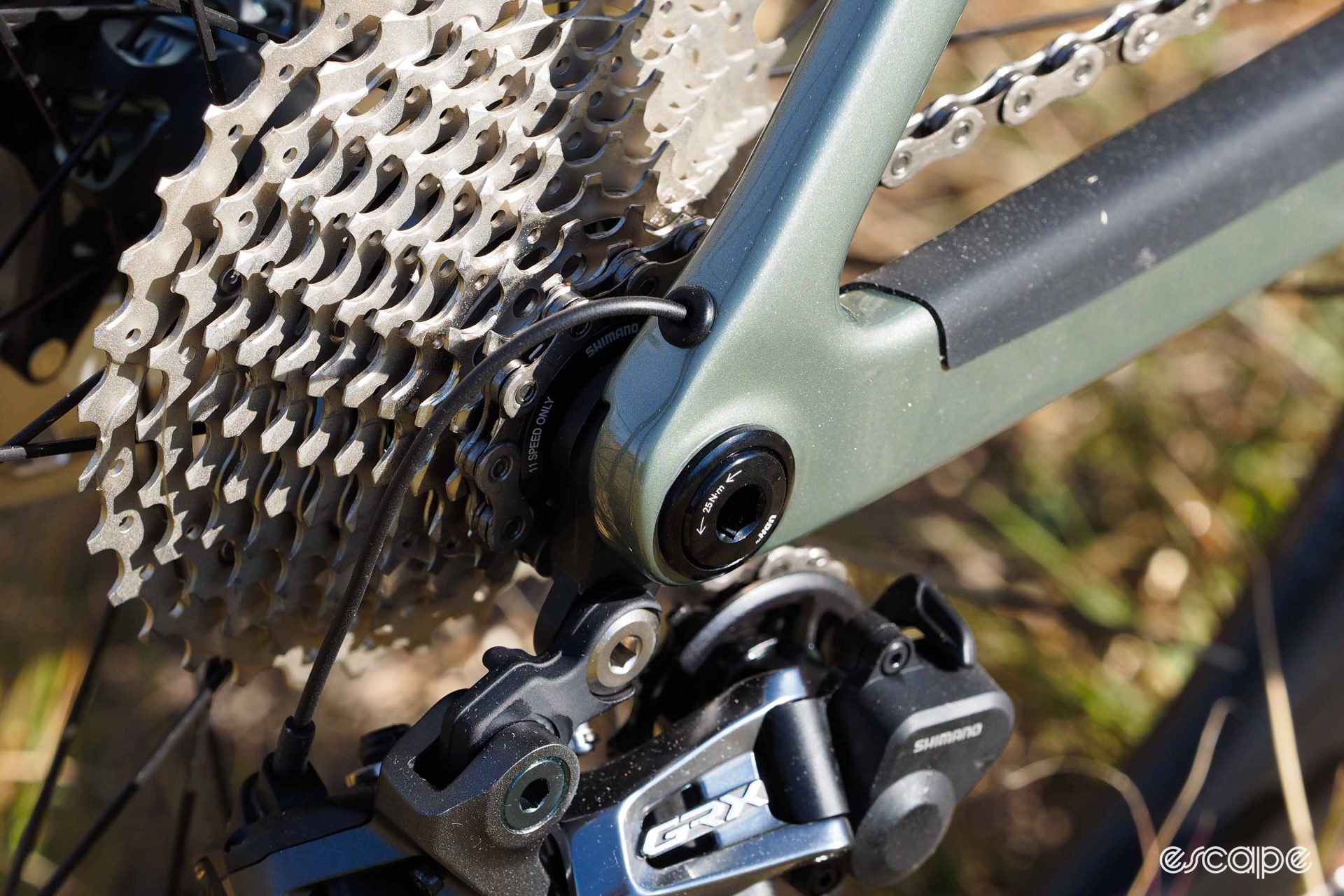
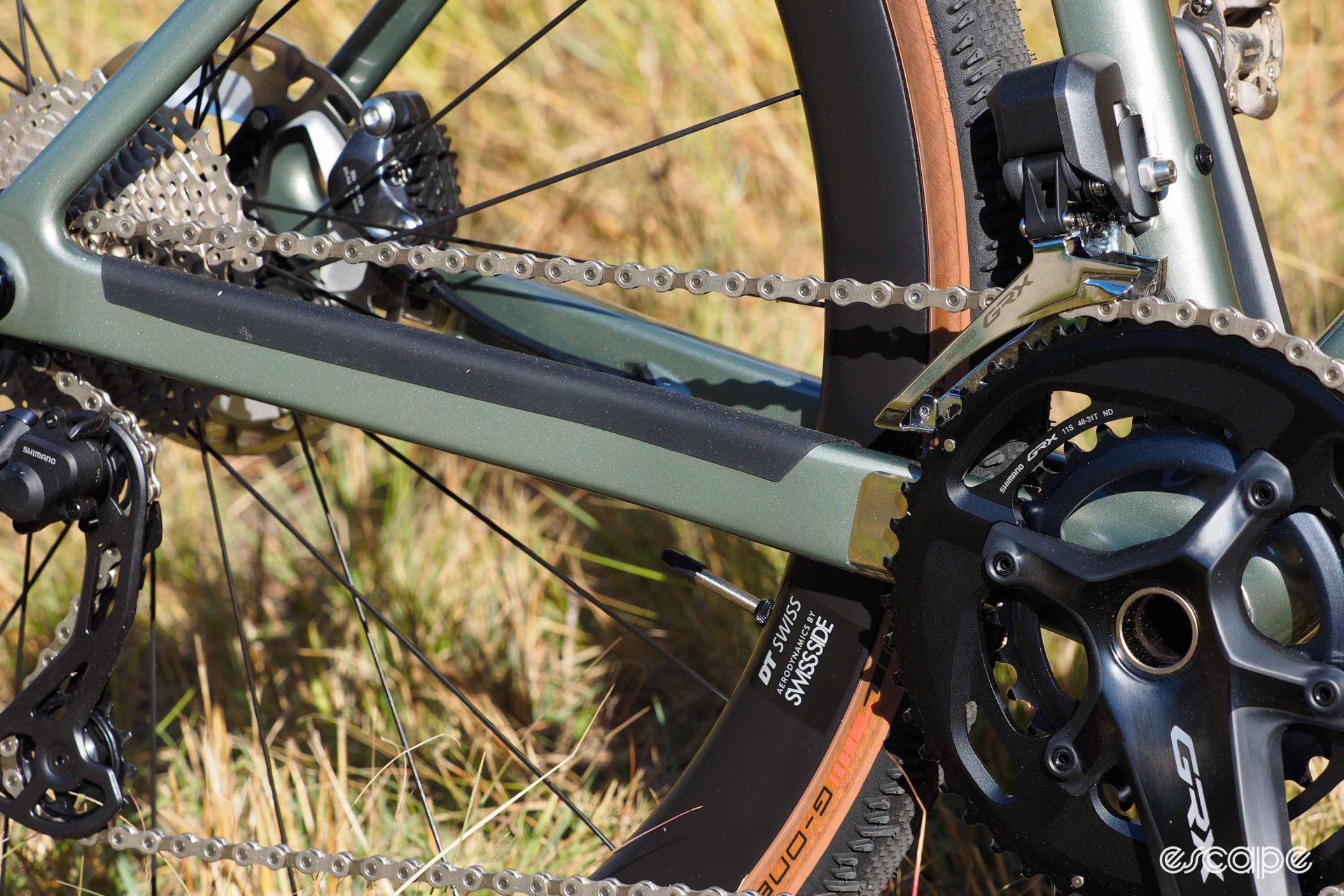
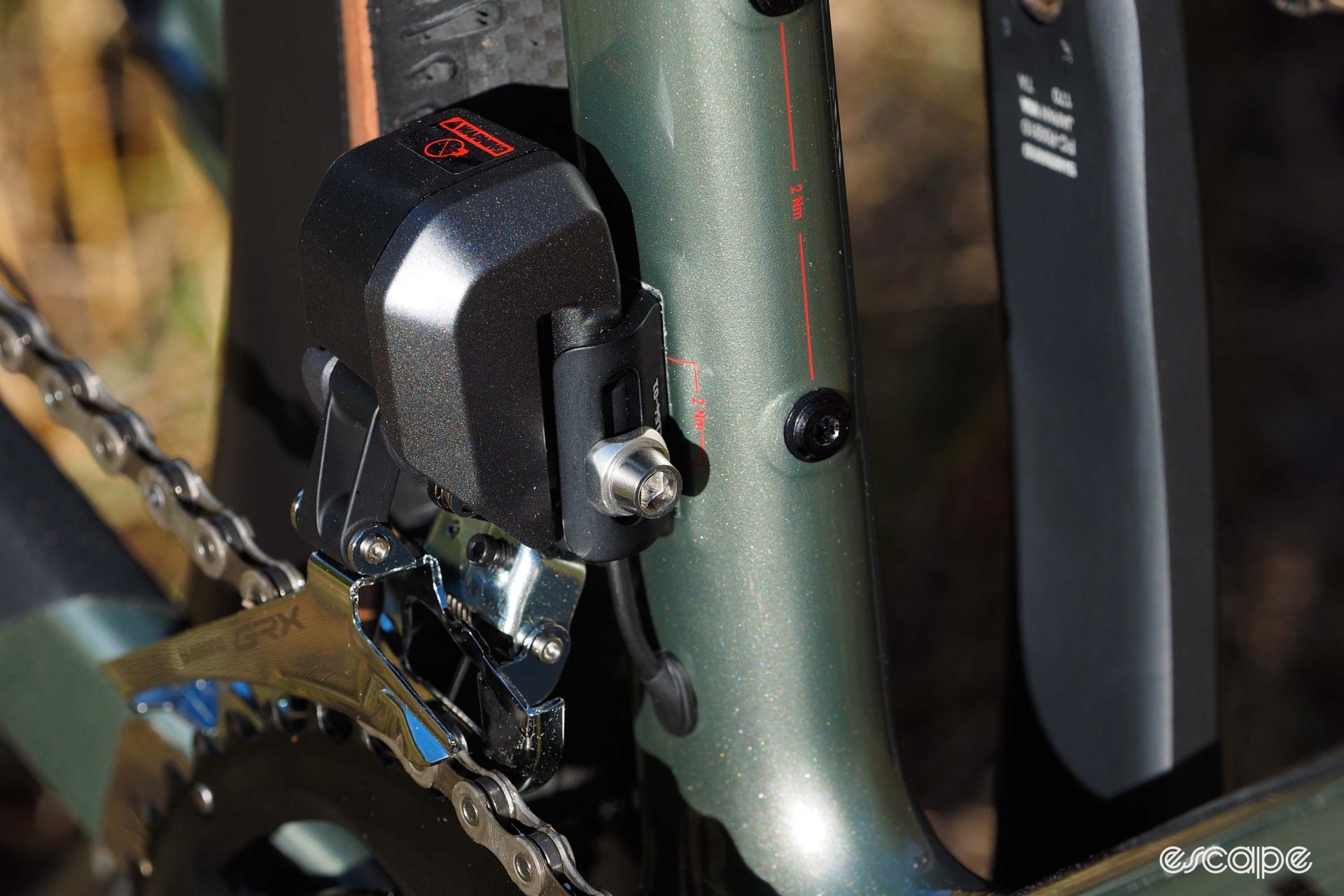
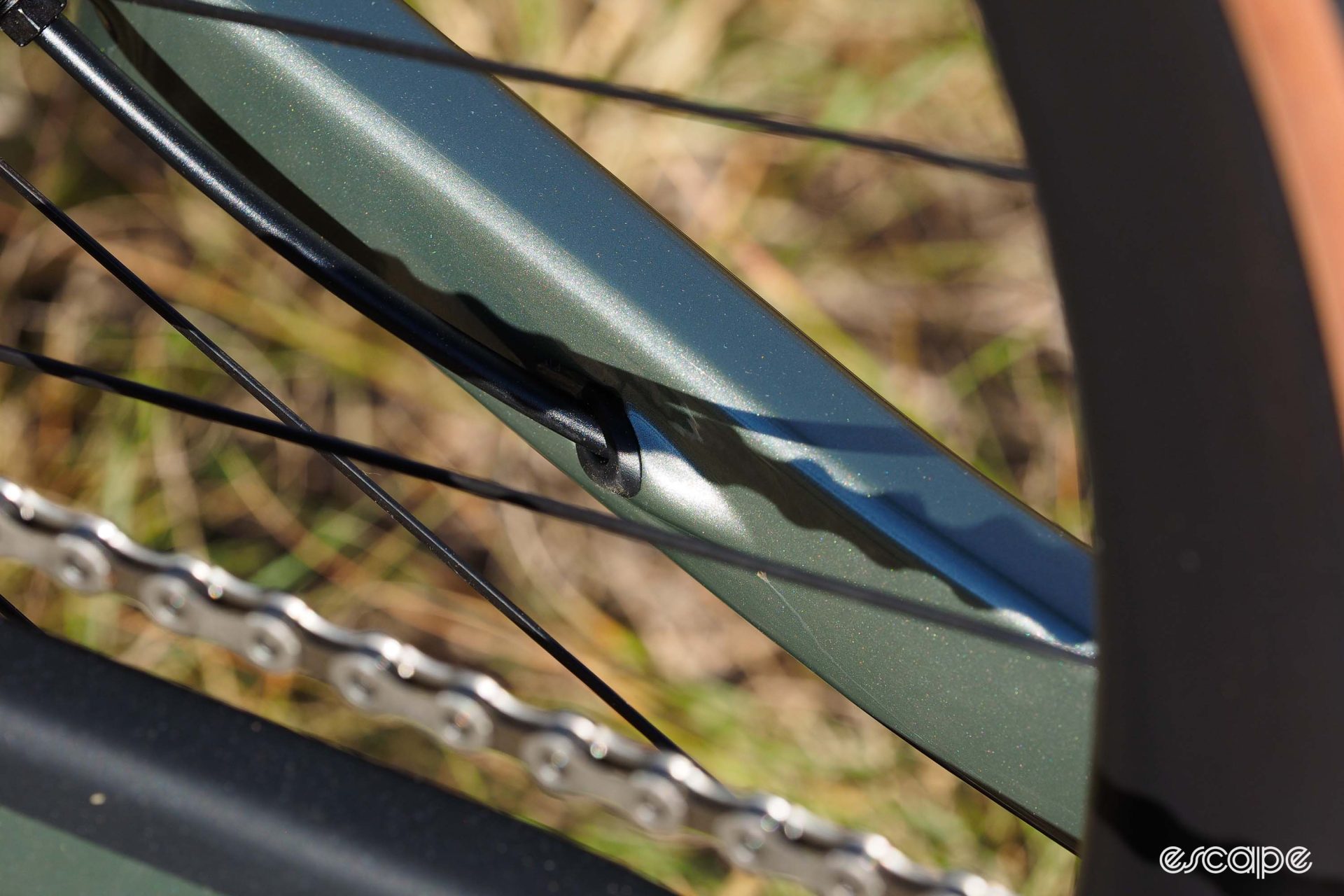
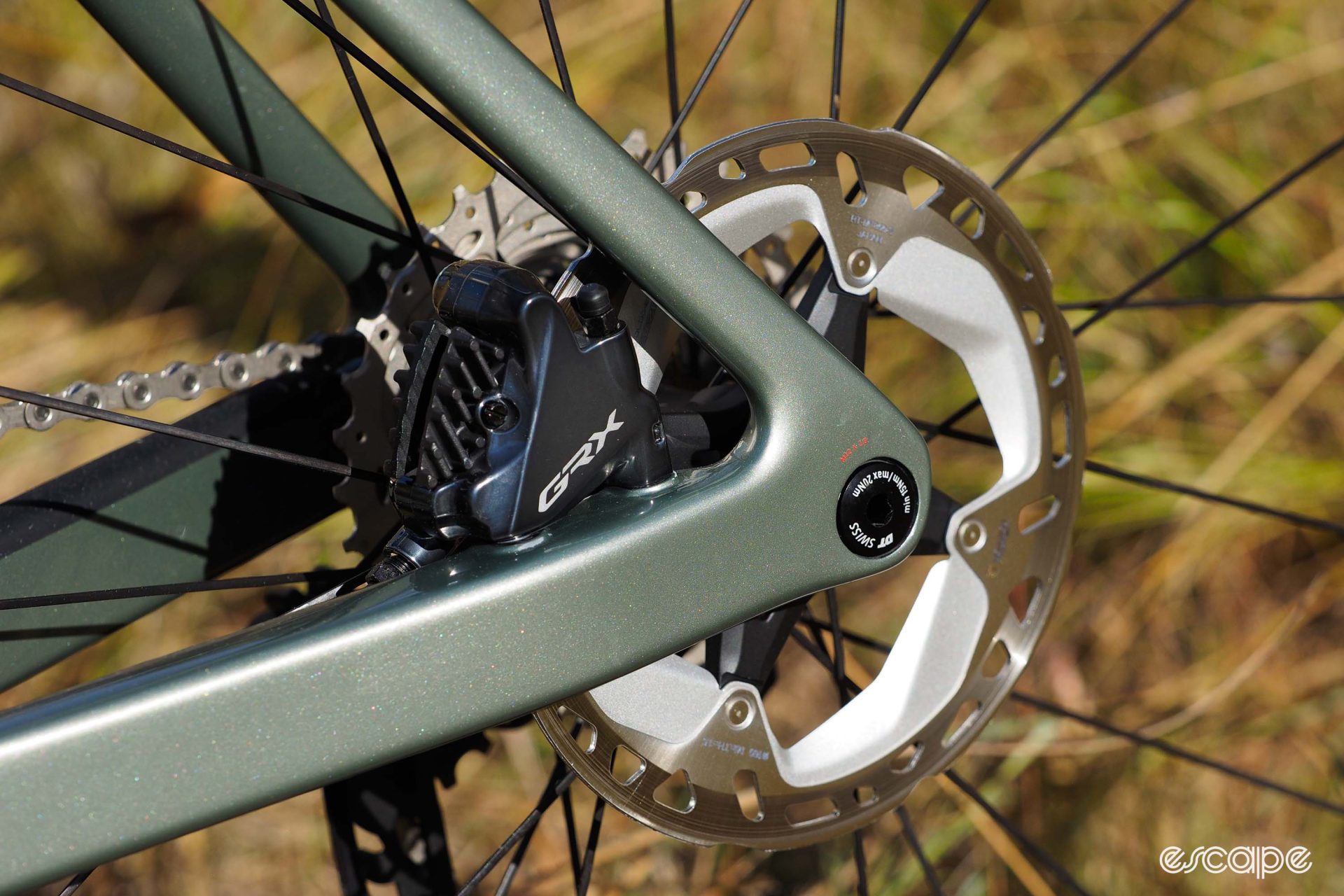
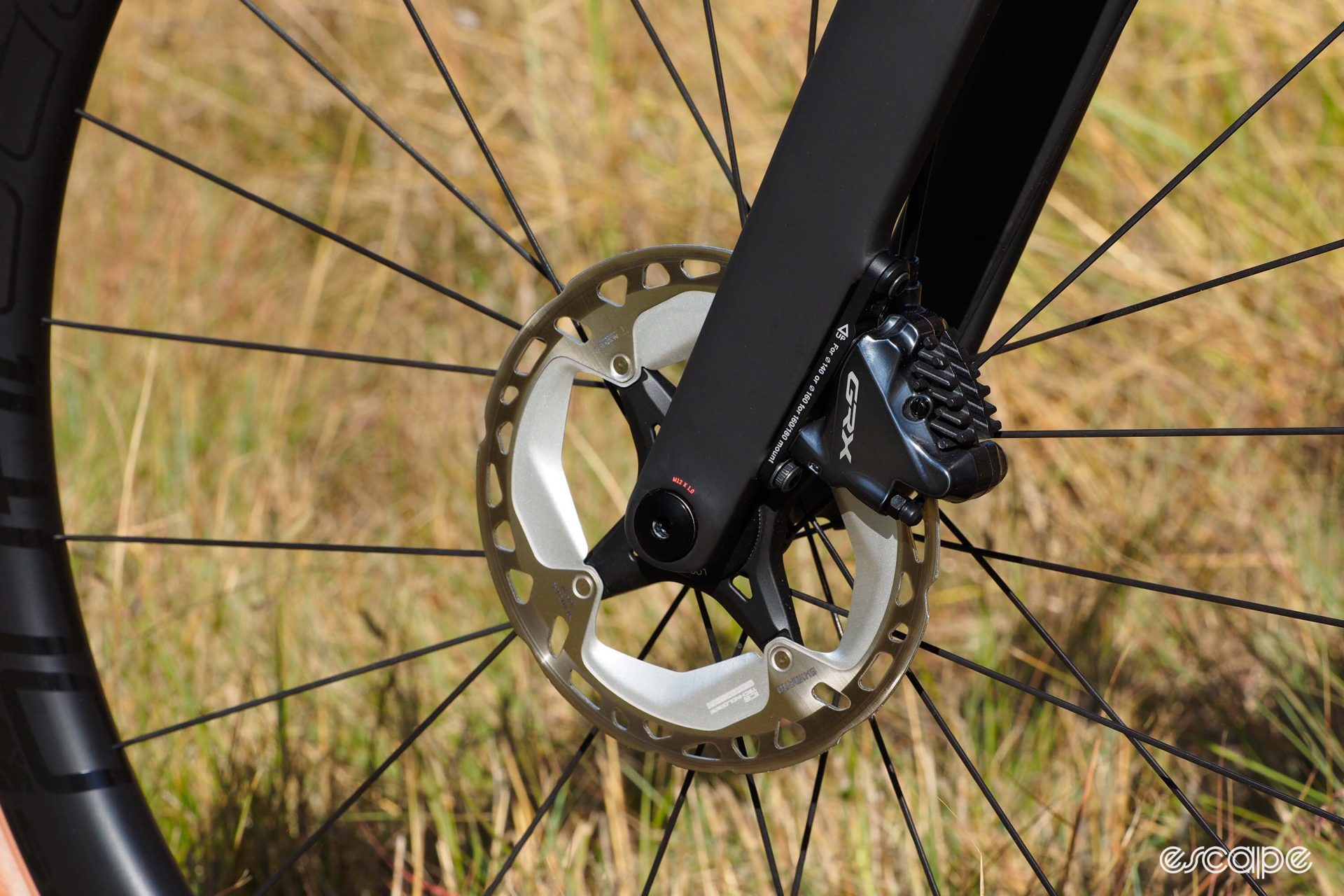
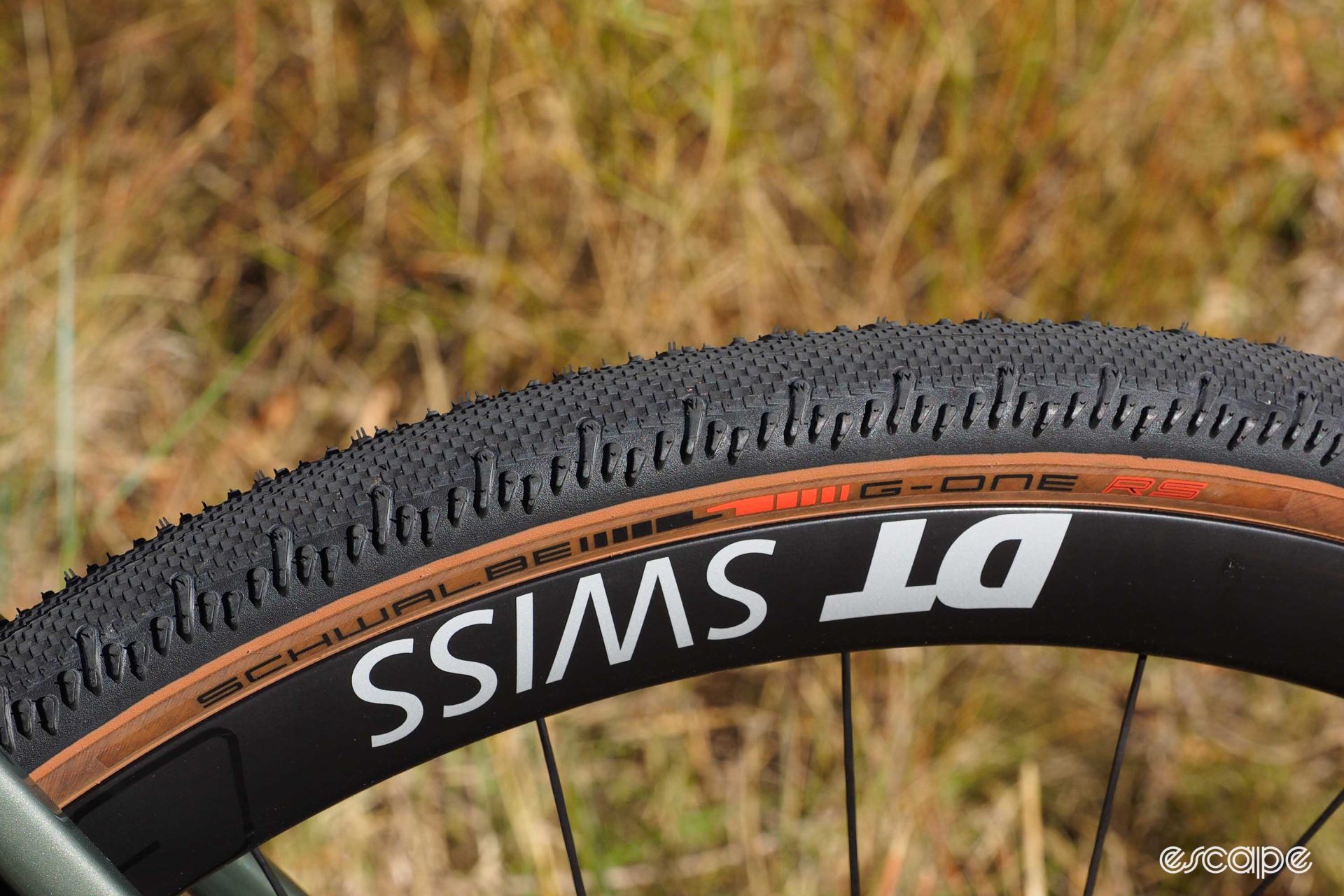
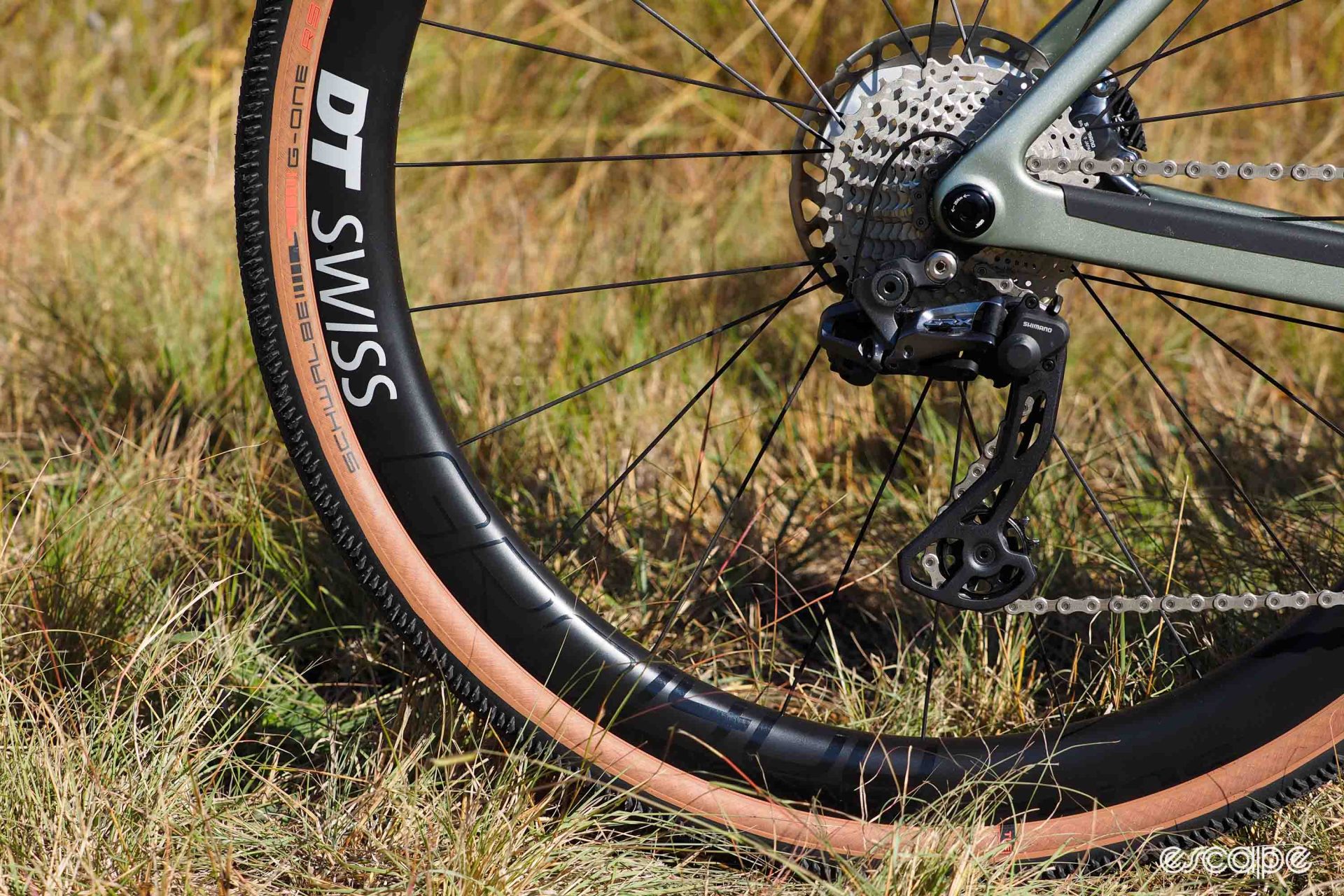

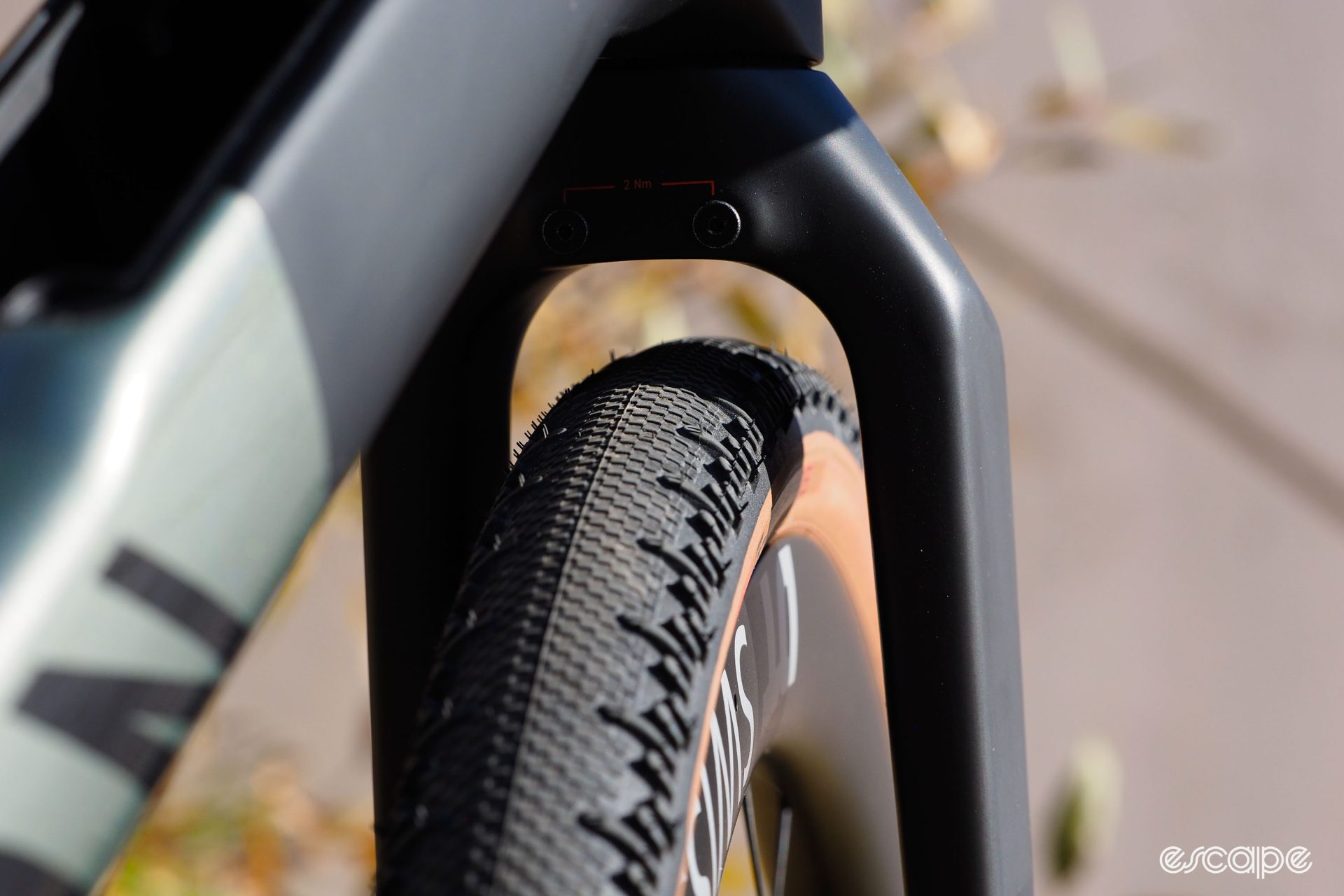
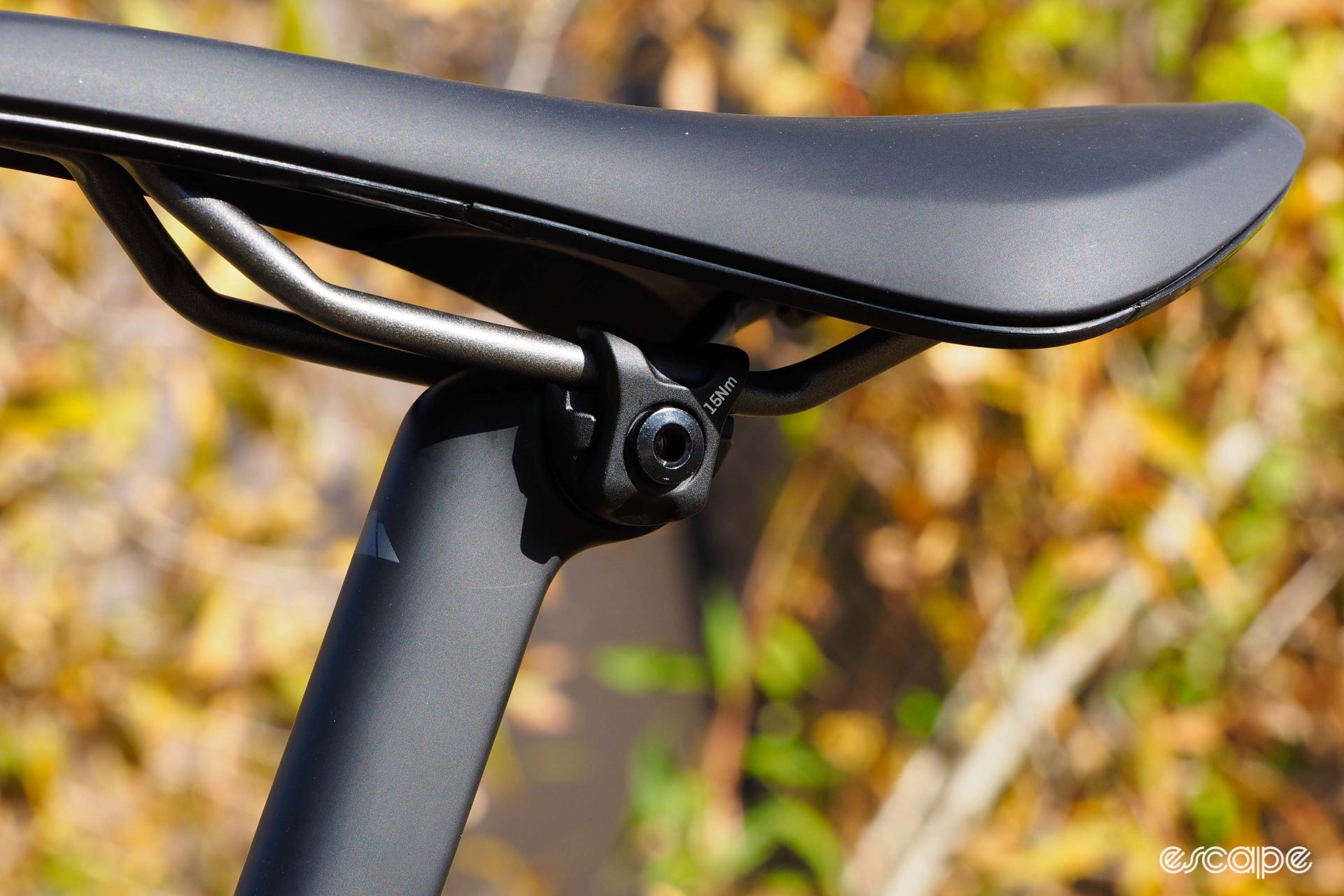
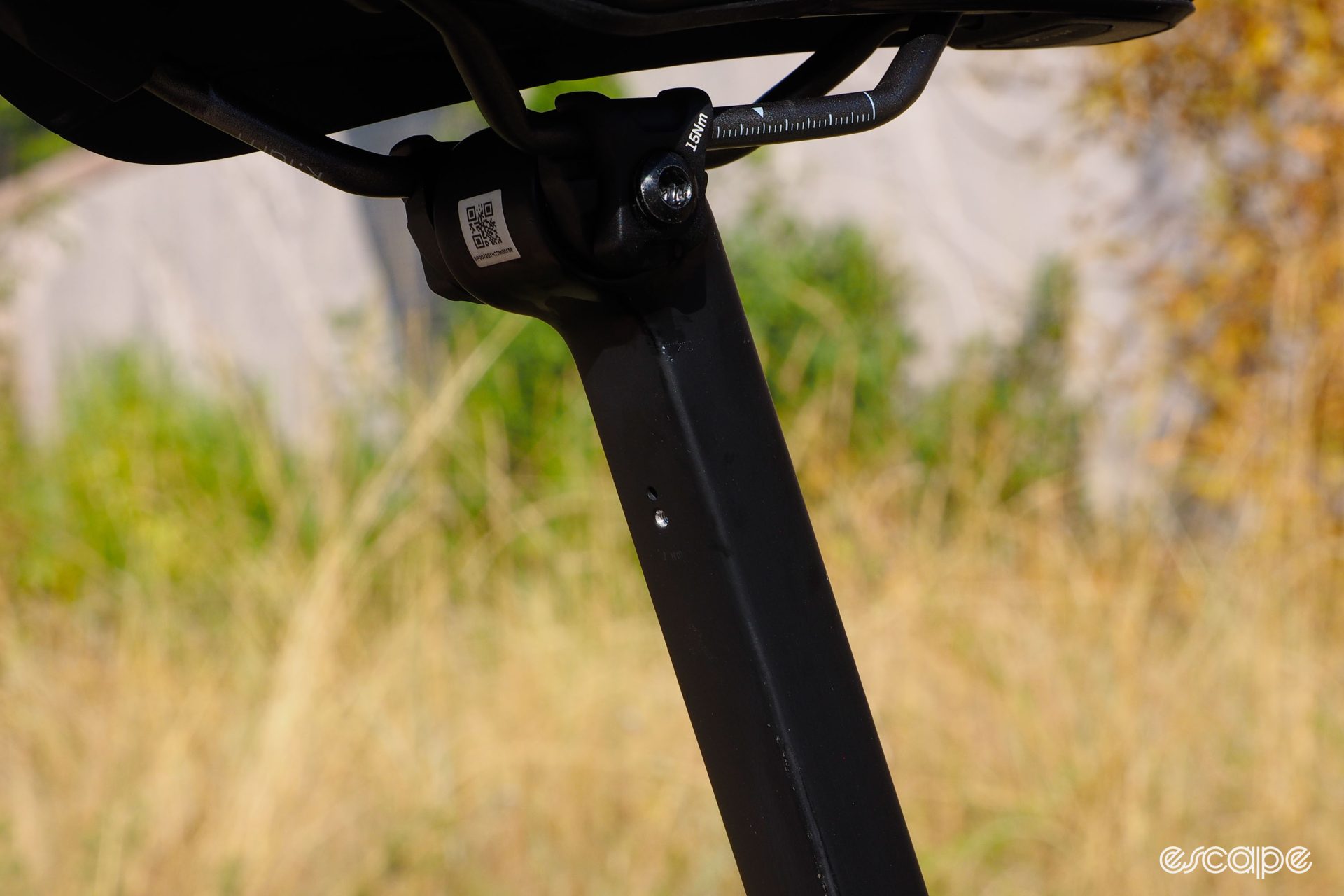

Did we do a good job with this story?



